





UNITING THE WORLD OF FITNESS GLOBAL MEDIA PARTNER ISSUE 7 2023 @ HCMmag HCMmag.com Sleepers Why pay for membership and not use it? p46 “We have a duty of care to bring in training recovery” p40 “Self Esteem Brands is aiming to impact 100m people worldwide” p32 SIGN UP FREE The serial entrepreneur launches Gym U brand p12 David Barton RESEARCH Dave Mortensen Mark Sesnan We were very conscious that if it didn’t work, we’d be out on our ears p52 Life Lessons Recovery PHOTO: SEB
Want to learn more? Get in touch today
Low impact, high-intensity sculpt training

Pilates and stretch are back in a big way with young members – the Gen Z Fitness: Cracking The Code 2023 report revealed these workouts to be in their top three most popular group fitness classes.

That’s why we’ve designed LES MILLS SHAPES a progressive boutique-style training program that brings the burn.
Win Gen Z over with a low impact, high intensity workout inspired by Pilates, Power Yoga and Barre. This addictive workout challenges muscles, develops core strength and improves postural alignment.
It’s suitable for all abilities and has only one requirement –mastering the burn.
lesmills.com/uk/shapes
UNLOCK MORE FOR EVERY MEMBER

Sleepers investigated
New research from Active Insight and HCM has explored the reasons why some consumers join health clubs but don’t attend, finding a whole slew of positive and life-enhancing reasons

Why do some people join a health club but rarely or never use it? The question has always perplexed me personally, as it simply isn’t logical.
I came to the conclusion some time ago that they must be experiencing valid benefits from being a sleeper that we’re not aware of and don’t acknowledge as a sector and so the quest has been to explore this topic.
Coincidentally, HCM’s long standing partner, Leisurenet Solutions, is in the throes of rebranding to Active Insight and launching a new consumer insight panel and so the timing was right to collaborate to explore this question methodically, to establish in more detail the reasons for this consumer behaviour.
The result of this initial investigation is a new research study, first published here in HCM and called The Active Insight/HCM Health Club Sleeper Insight Report 2023. You can read the intriguing results in Julie Allen’s report on page 46.
So what did the consumer insight panel report?
One notable finding was the difference between the sexes when it comes to prestige, with 14 per cent of men saying ‘I like the social status of being a member at a specific club’ versus 8 per cent of women, while both sexes agreed that ‘it feels good to have a membership’ (15.6 per cent).
The highest scoring reason given was ‘So I can go if I want to’ at 23.2 per cent, showing the value people put on freedom of mind, convenience, potential and hopefulness.
A multitude of questions revealed that some feel ‘healthier’ (6.4 per cent), ‘more active’ (8.4 per cent) and ‘fitter’ (8.8 per cent), simply by being members of a health club, even if they do not attend.
Further research is needed to establish if this is some kind of placebo effect; whether being a member makes it more likely that people will make healthier choices in other areas of their lives; or whether the power of positive self-identity can give mental health benefits, for example.
In an age where creating hope and positivity to safeguard mental health is a priority for so many, it seems that being
a member of a health club can help, with the consumer panel agreeing with the statements ‘It will encourage me to be more active’ and ‘it will motivate me to go eventually’.
Interestingly, FOMO is also a motivator and some are prepared to keep paying to secure their membership in cases where numbers are limited, especially if they have friends who are members.
We must never stop working to support members in motivating themselves to exercise, but it’s definitely time to start recognising and respecting the fact that some get powerful benefits from simply being sleepers.
Liz Terry, editor lizterry@leisuremedia.com

5 ©Cybertrek 2023 Issue 7 2023 EDITOR’S
LETTER
14 per cent of men agree with the statement ‘I like the social status of being a member at a specific health club’
+44 (0)1462 431385 WWW.HCM mag .COM HCM@LEISUREMEDIA.COM WWW.LEISURESUBS.COM
Some women feel hopeful at the thought they could attend
PHOTO: NICOLETA IONESCU
CONTENTS
Uniting the world of fitness
ISSUE 7 2023 N o 316
05 Editor’s letter
New research from HCM and Active Insight has established the reasons people join health clubs and don’t attend and the majority are good news, says Liz Terry
12
HCM people
David Barton
The pioneering fitness entrepreneur tells us how he’s injecting science and style into his latest venture in New York City
18 HCM people
Emily Bartels
US health clubs and studios can quickly grow their business with better access to capital. Mindbody’s senior VP of payments tells us more
24 HCM news
Nike launches group exercise studios, Planet Fitness posts record results and Anytime Fitness tackles the French market

32 Interview
Dave Mortensen
The president and co-founder of Self Esteem Brands tells Kate Cracknell the company is aiming to get to 10,000 locations in the next five years
40 Talking point Recovery
How can trainers balance strain with recovery to achieve the best health outcomes for members? Kath Hudson talks to the experts
46 HCM Exclusive The benefits of belonging
Why pay for a membership and not use it? A joint investigation by HCM and Active Insights explores a question that has never been answered, as Julie Allen reports
52 Life Lessons
Mark Sesnan
The MD of GLL reflects on the challenges he faced setting up the UK’s first charitable trust for leisure services
56 Pooling knowledge
We dive into the State of the UK Swimming Industry Report 2023 by Leisure DB to see what challenges and opportunities lie ahead for the aquatics sector
6 Issue 7 2023 ©Cybertrek
2023
HCMmag.com
74 Gen Z holds huge potential for the health and fitness sector
PHOTO: LES MILLS
62 Interview Peter Bundey & Mark Sesnan
As leisure provider GLL celebrates its 30th year of operations, its CEO and founder share their five-year vision

74 Research


Cracking the Gen Z code
The largest generation, Gen Z is often dubbed ‘generation active’. Les Mills research has established the potential to engage this cohort, as Jak Phillips explains

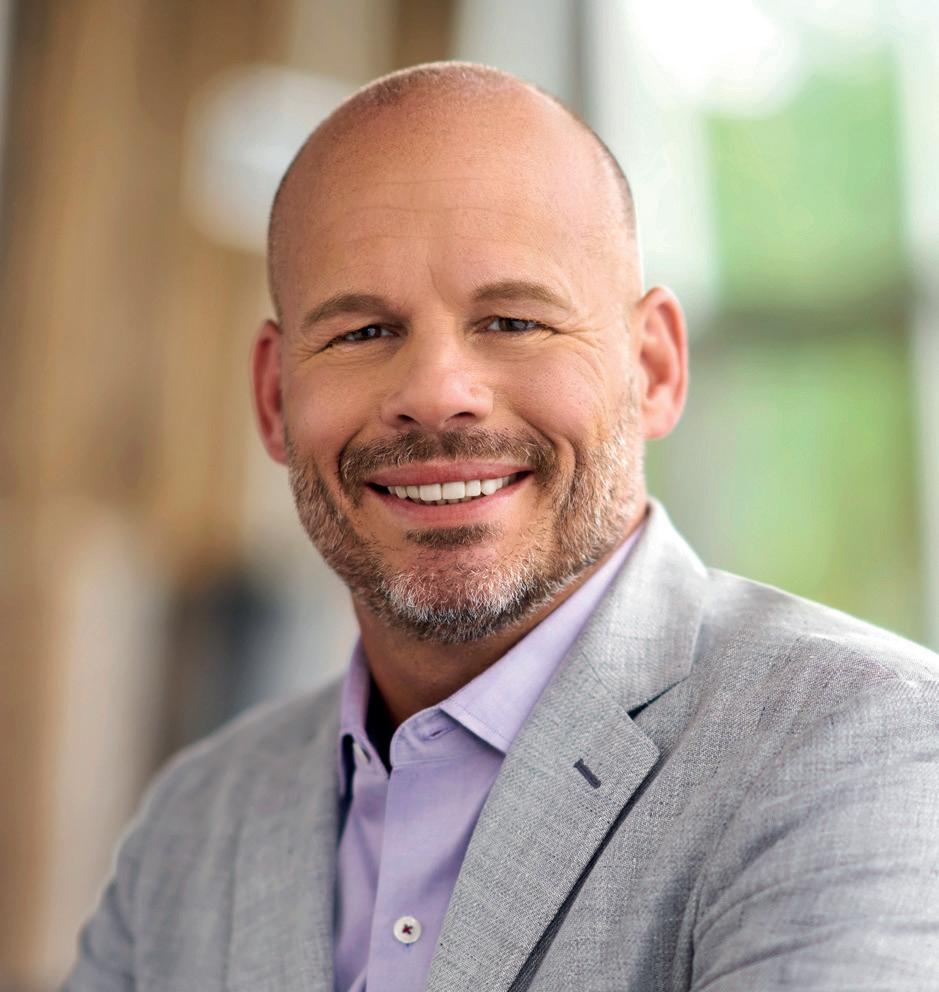
84 Pilates for all
How can operators tap into growing and more diverse Pilates market segments by changing the way they connect with people?


93 Product Innovations
Launches and innovations from suppliers, including Klafs, React Fitness and Xebex
96 Reader services HCM Directory
The HCM directory is part of a network of resources for buyers that includes www.HCMmag.com/CompanyProfiles
98 Research Breast size and exercise
In a society where plastic surgery is increasingly mainstream, some women are having breast reduction to enhance their ability to exercise. New research looks at the impact
7 ©Cybertrek 2023 Issue 7 2023
12 David Barton launches Gym U
62 GLL celebrates 30 years
p40 Recovery: Getting the balance right
p32 Dave Mortensen
p46 Sleepers researched
PHOTO: SHUTTERSTOCK/ STEVENK
PHOTO: POWER PLATE
PHOTOS: GLL
PHOTO: SEB
PHOTO: GETTY IMAGES
Xponential content features on LG smart TVs
471932 Finance +44 (0)1462 471930 Credit
733477

Choose how you read
HCM digital
Read free online and enjoy extra links and searchability
www.HCMmag.com/digital
Print
HCM magazine is available in print from www.leisuresubs.com
HCM PDF
A PDF edition is available to read offline at: www.HCMmag.com/pdf
Fit Tech magazine
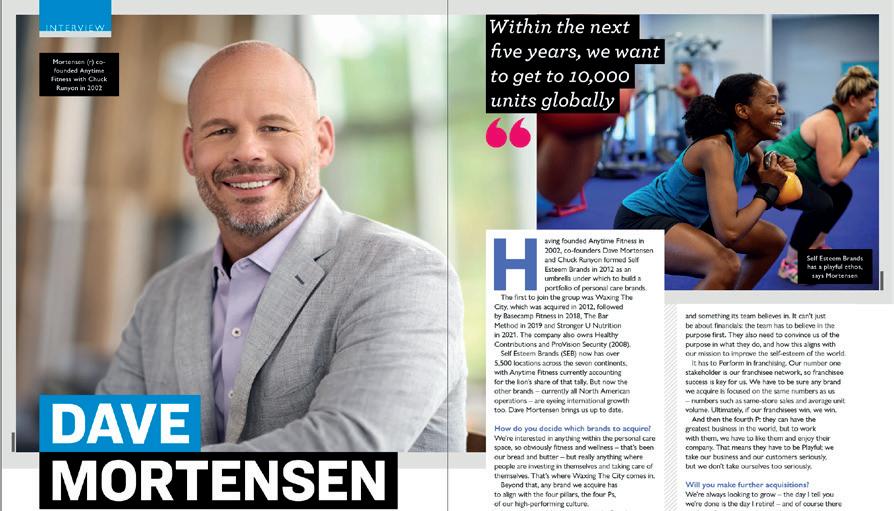
www.fittechglobal.com

www.fittechglobal.com/archive


HCM Handbook
www.HCMhandbook.com

www.HCMhandbook.com/pdf
HCM Online library
www.HCMmag.com/archive

HCM Ezine & Instant Alerts

www.leisuremedia.com/subscribe
Leisure Opportunites jobs & news
www.leisureopportunities.co.uk

Buyer Search Engine

www.fitness-kit.net

To subscribe to HCM in print (Health Club Management): log on to www.leisuresubs.com , email subs@leisuremedia.com or call +44 (0)1462 471930.


Annual subscriptions: UK £45, Europe £57, rest of world £80, students (UK) £22.
Style: HCM follows an editorial house style which precludes the use of marketing devices in body text and headlines, eg: capitalised or part capitalised names and registered trademarks. CamelCase is allowed. Contact the editor for more details – lizterry@leisuremedia.com.
Copyright details: HCM (Health Club Management) is published 12 times a year by Leisure Media, PO Box 424, Hitchin, SG5 9GF, UK. The views expressed in this publication are those of the authors and do not necessarily represent those of the publisher. All rights reserved. No part of this publication may be reproduced, stored in a retrieval system or transmitted in any form or by means, electronic, mechanical, photocopying, recorded or otherwise, without the prior permission of the copyright holder, Cybertrek Ltd 2023.
Print and distribution
Printed by The Manson Group Ltd. Distributed by Royal Mail Group Ltd and Whistl Ltd in the UK and Total Mail Ltd globally.
©Cybertrek Ltd 2023 ISSN 1361-3510 (print) / 2397-2351 (online)
8 Issue 7 2023 ©Cybertrek 2023 Publisher Jan Williams +44 (0)1462 471909 Editor-at-large Magali Robathan +44 (0)1462 431385 Editor Liz Terry +44 (0)1462 431385 Assistant editor Megan Whitby +44 (0)1462 471906 Managing editor Steph Eaves +44 (0)1462 431385 Head of news Tom Walker +44 (0)1462 431385 Email us: Customer service +44
Advertising +44
resources from
(0)1462 471901
(0)1462 431385 Subscriptions +44 (0)1462 471910 Circulation +44 (0)1462
control +44 (0)1462
theteam@leisuremedia.com Other
PUBLIC AFFAIRS MEDIA PARTNER GLOBAL MEDIA PARTNER MEDIA PARTNER
MEET THE TEAM
7 2023 Volume 29 Number
www.HCMmag.com Issue
316
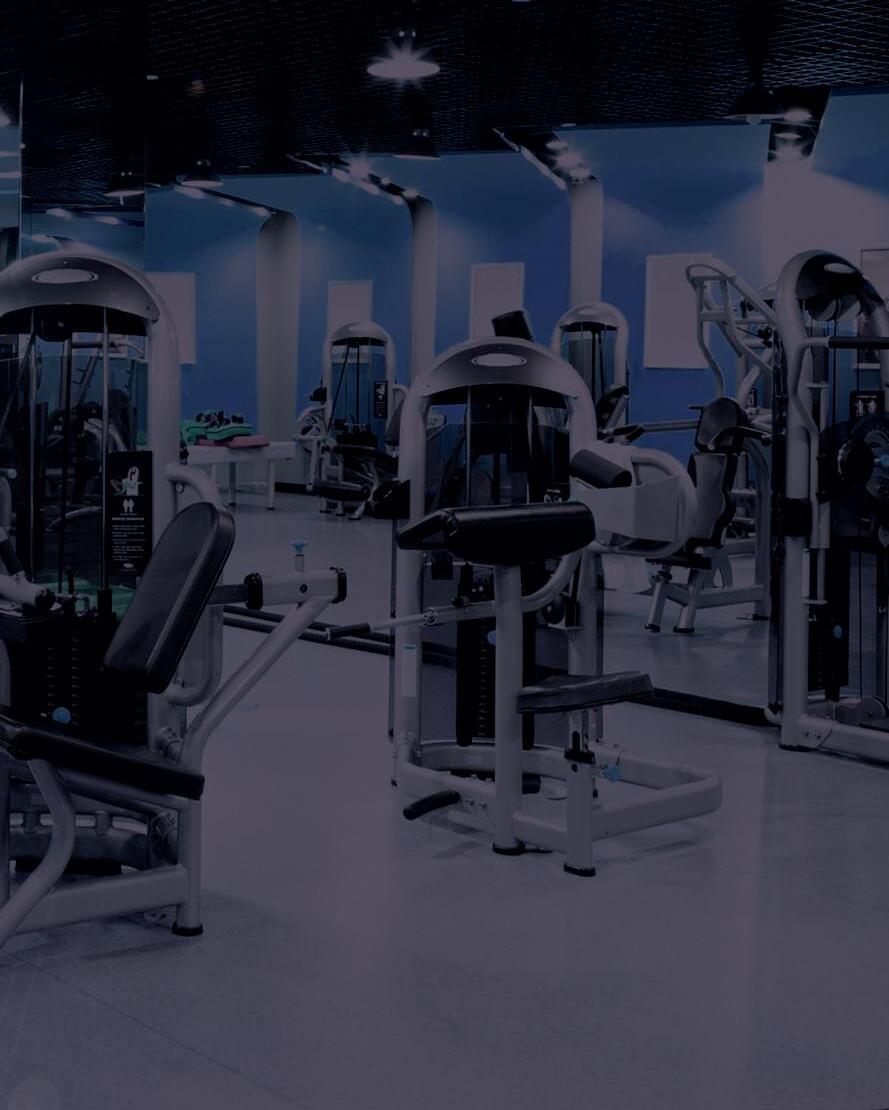






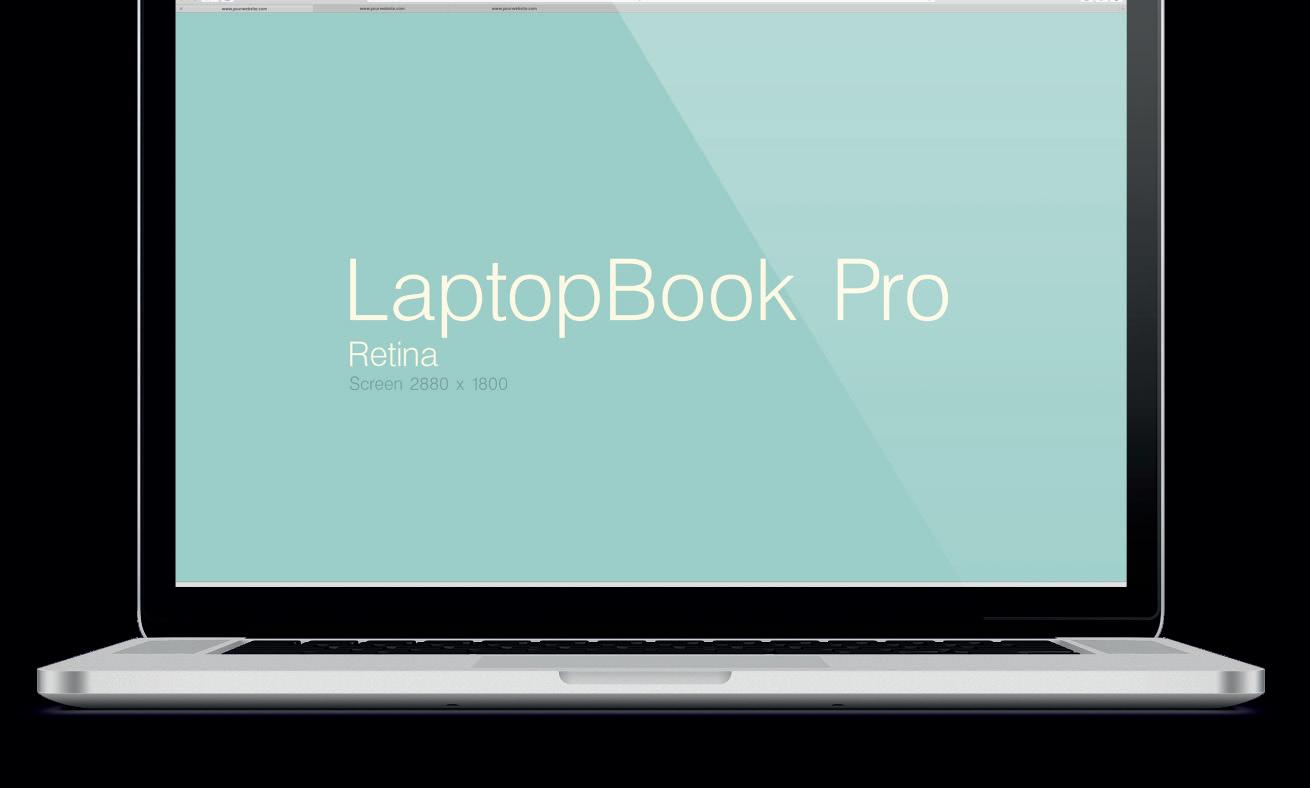





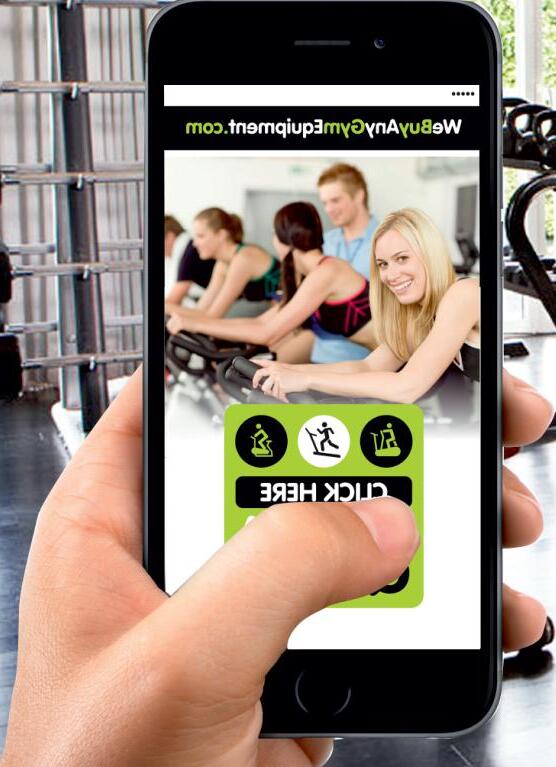









































11 – 14 APR 24 Exhib
ExhibExhib
For a strong and
For a strong and

































ition Centre Cologne healthy society. ition Centre Cologne GLOBAL FITNESS healthy society. fibo.com
HCM people
What’s your expertise?
My qualifications are mostly hundreds of failures resulting in the occasional success. I’ve studied, experimented, read, taught, and contemplated, and there is no qualification that prepares someone for the alchemy and magic of a gym that actually works. In fact, the creative impulse happens suddenly and there is no preparation for this that I can think of.
What has shaped your philosophy?
The first time I ever walked into a gym, I was transported by the energy. Local criminals were working out next to the local cops, it was a world apart from the outside. That was my moment, and from that moment on, I was hooked. It’s infectious and intoxicating, and when I get it right, I know a member walks into my club and feels that they’re walking into the best party in town. They’re in the right place at the right time; that’s perfection in my book.


Tell us what’s happening now
There is a new post-pandemic world, which requires an updated paradigm in the gym business. I created a new concept called Gym U (www.gymunyc.com) because I felt it was necessary for someone to fill this void and pre-empt the possible obsolescence of the gym as we know it.
HCM PEOPLE 12 Issue 7 2023 ©Cybertrek 2023
David Barton is a serial fitness entrepreneur
Gym U is offering the most scientifically-advanced equipment and ushering in a new level of luxury
David Barton Gym U
PHOTO: GETTY IMAGES
Tell us more
Gym U is a project that’s very dear to my heart. Located on 215 West 23rd St in Chelsea, New York City, Gym U is built in the space of my original David Barton gym, which opened over 20 years ago. It opened in June. Gym U is offering the most scientifically-advanced fitness equipment, training and wellness services I’ve gathered and amassed from my travels, ushering in a new level of luxury and personalisation in the fitness world in New York City.
Every club I do is different; a lot is based on the local market and the demographics and psychographics of the locals. When designing U, I drew inspiration from the movie Metropolis which gives it a Deco and Expressionist feel.
Gym U’s style is vibrant and energetic
How is it different from and better than your previous NYC gyms?
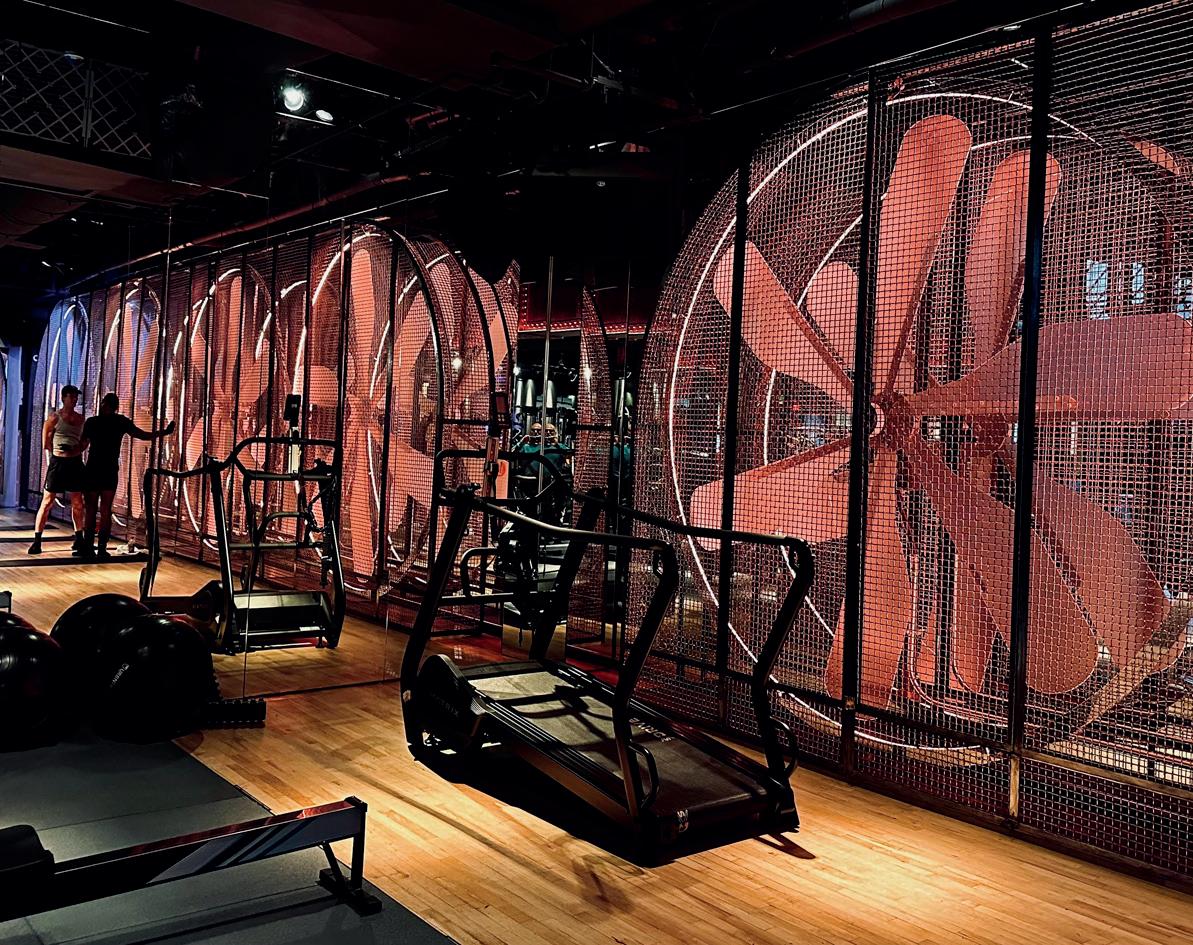
Gym U is similar to previous David Barton gyms in that the space will feel uniquely curated to its demographic – unlike other chain operations, Gym U reflects the specific personality and charm of New York’s Chelsea neighbourhood: colourful, vibrant and energetic.
Gym U differentiates itself from its competitors through the caliber of its workout equipment
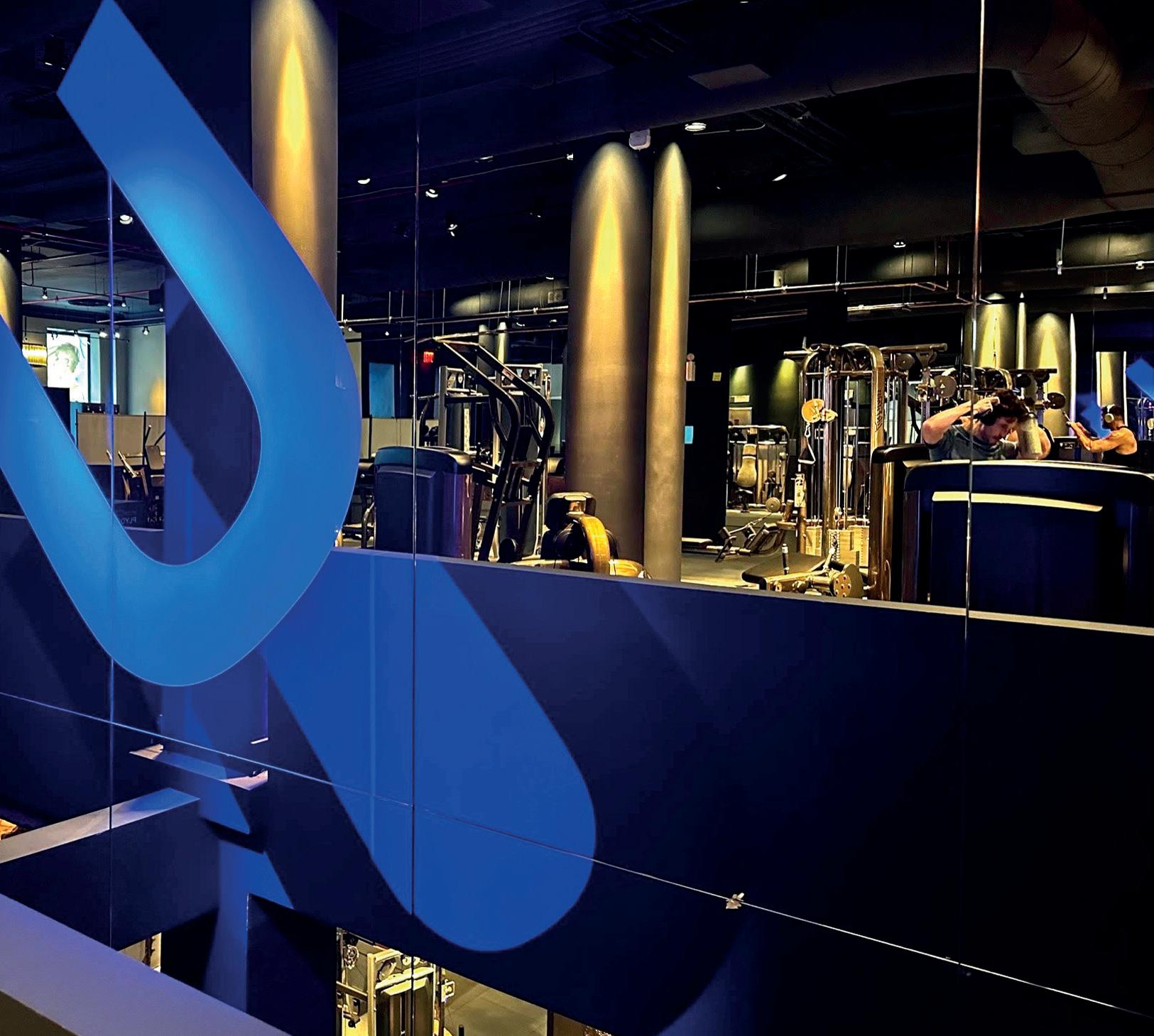
13 ©Cybertrek 2023 Issue 7 2023
PHOTO: DAVID BARTON
PHOTO: DAVID BARTON
Barton has launched Gym U in Chelsea, New York City
and personal training, which are guaranteed to deliver results. Members can expect to experience the most efficient and fun workout with machinery from premium fitness brands such as Pannatta, an Italian manufacturer that has redesigned the mechanics of strength training.
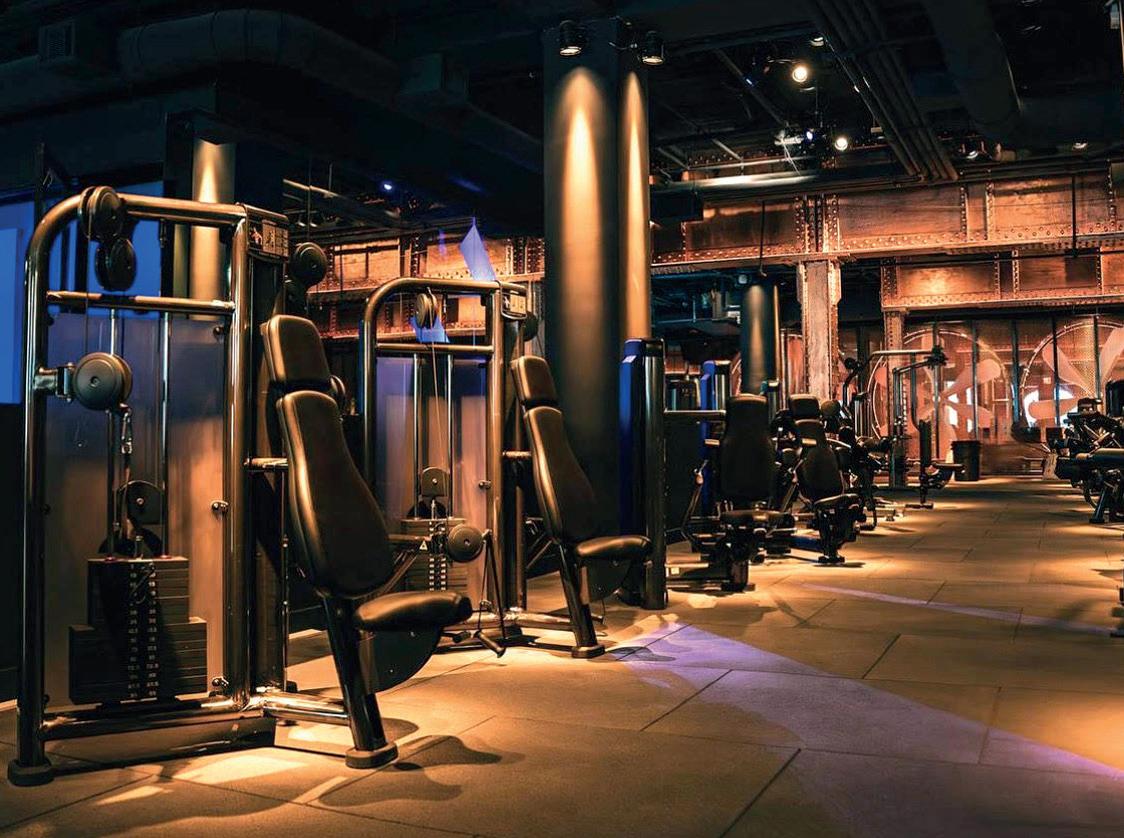
How are you using technology?
I was amazed by the advanced technologies implemented globally in the fitness world and brought them all to U. The gym carries ARX adaptive resistance equipment, which utilises patented, motorised resistance and computer software to maximise every rep to create a perfect workout with maximum results.
We’ve partnered with the world-class Precision Health Alliance from Australia to deliver a full epigenetic diagnostic profile for members, utilising AI. Our trainers can provide members with key insights into their health and fitness needs considering their genetic predispositions, taking all the guesswork out of working out.
We also offer sessions with the Neubie, an electrical stimulation therapy that reprogrammes muscles for optimised performance and recovery times. Even three sessions with this powerful tool
are guaranteed to deliver visible results. We also have an area for recovery powered by Fuel Stop, a wellness boutique in Uptown NYC that offers personalised IV Drips and Ozone capsule treatments.
How will you future-proof this business?
Although one never knows what the future will bring the gym will be future-proofed by fostering community and personal engagement.
Of course, it’s important to stay ahead of trends in science and technology, but the basics of the right environment and great customer service never go out of style.
What’s the perfect customer journey?
New gym-goers need to feel comfortable when joining a gym. At U, we’ll focus on the community aspect, helping newcomers feel welcome and providing a fun, dynamic workout experience.
We have an esteemed roster of trainers I hand-picked who will work closely in tandem with members to identify their fitness goals and develop a highly tailored workout regimen for success. The core mission is delivering a userfocused experience for our members that makes going to the gym for a workout one of the highlights of their day.
14 Issue 7 2023 ©Cybertrek 2023
HCM PEOPLE
PHOTO: DAVID BARTON PHOTO: DAVID BARTON
Gym U in New York City focuses on exercise science and luxury
Can design contribute to the success?
Absolutely. I worked closely with architects such as Charles Renfro and Stephen Alton and collaborated with creatives Peter Brescia, Rose Wood and awardwinning lighting design firm Focus Lighting to deliver a sleek and energising space that encourages movement the moment our members walk through the doors.
Lighting is incredibly important in gym design, because we want our members to feel good and look good when they work out. The entire space is thoughtfully lit with mood lighting and lined with mirrors to provide that extra visual element needed for workout motivation.


What are the most important things to consider when designing a club?

The word design misses the point. What I try to create is an emotional experience. Having said that, I think our industry has historically lacked vision when it comes to design.
Some operators overdesign their clubs, they lack restraint and include too many ideas, finishes patterns, graphics and signage. In my gyms you might have a soundbite or a design moment, but there’s always a reason why it’s there.
It’s easy to neglect certain elements of design, such as lighting or auditory components, which all take part in creating an enjoyable environment geared towards movement and fitness. For instance, you can have all the workout equipment in the world, but if the space is flooded with harsh fluorescent light, it will take away from the overall experience. Similarly with music, you need to consider a playlist that caters to the vibe of your member demographic, that also aligns with the general mood and atmosphere of the gym and location.
15 ©Cybertrek 2023 Issue 7 2023
The interiors of Barton’s TMPL gym included a homage to Grace Jones
Barton has only opened eleven clubs in his career, but each has had a major impact due to its radical creativity
Lighting design at the former David Barton Miami South Beach
The design-led TMPL in NYC was sold to Town Sports
PHOTO: DAVID BARTON
PHOTO: DAVID BARTON
PHOTO: DAVID BARTON
You’re designing gyms around the world. What was the inspiration for Anvil?
Anvil was inspired by a dream I had of being a tiny being in the world of Giants. I played with scale and proportion to create a fantasy, and an escape from the world outside.
There’s a combination of grit and glamour, akin to the shiny chrome on a Harley Davidson. Sometimes the greatest challenge is to create luxury without being precious or fancy or feeling like something other than a gym. With Anvil, I tried to be intriguing and titillating.
What motivates and inspires you?
I’m inspired by movies, music, paintings, buildings . . . sometimes just my imagination.
David Barton timeline
1988 Graduates from Cornell in Human Ecology
1989 Declines grad school to work as a PT
1992 Establishes first David Barton Gym in NYC
1992 - 2013 Grows to nine clubs
2013 Sells to investors
2016 David Barton Gyms owned by Club Ventures close
2018 Launches TMPL gym brand in one location in NYC
2018 Sells TMPL to Town Sports
2020 Town Sports ceases trading
2023 Creates Gym U in New York City
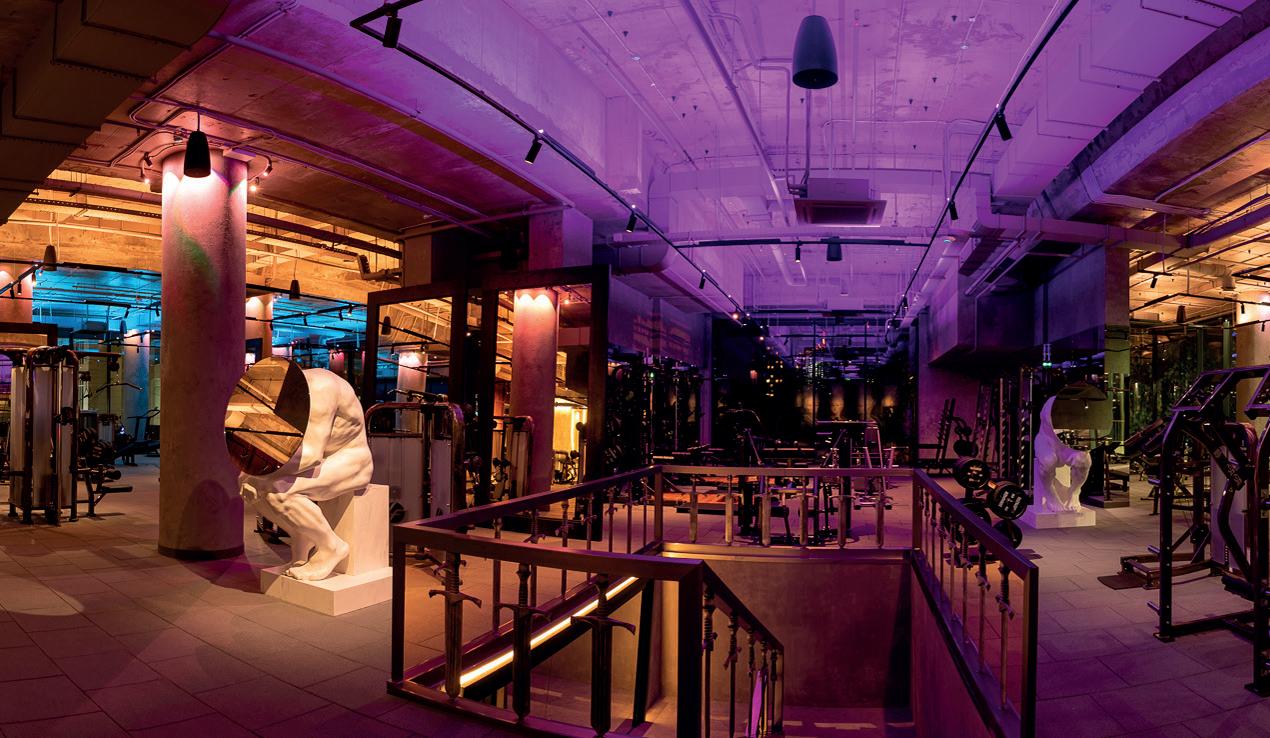
What’s the best gym you’ve seen that isn’t one of your own?
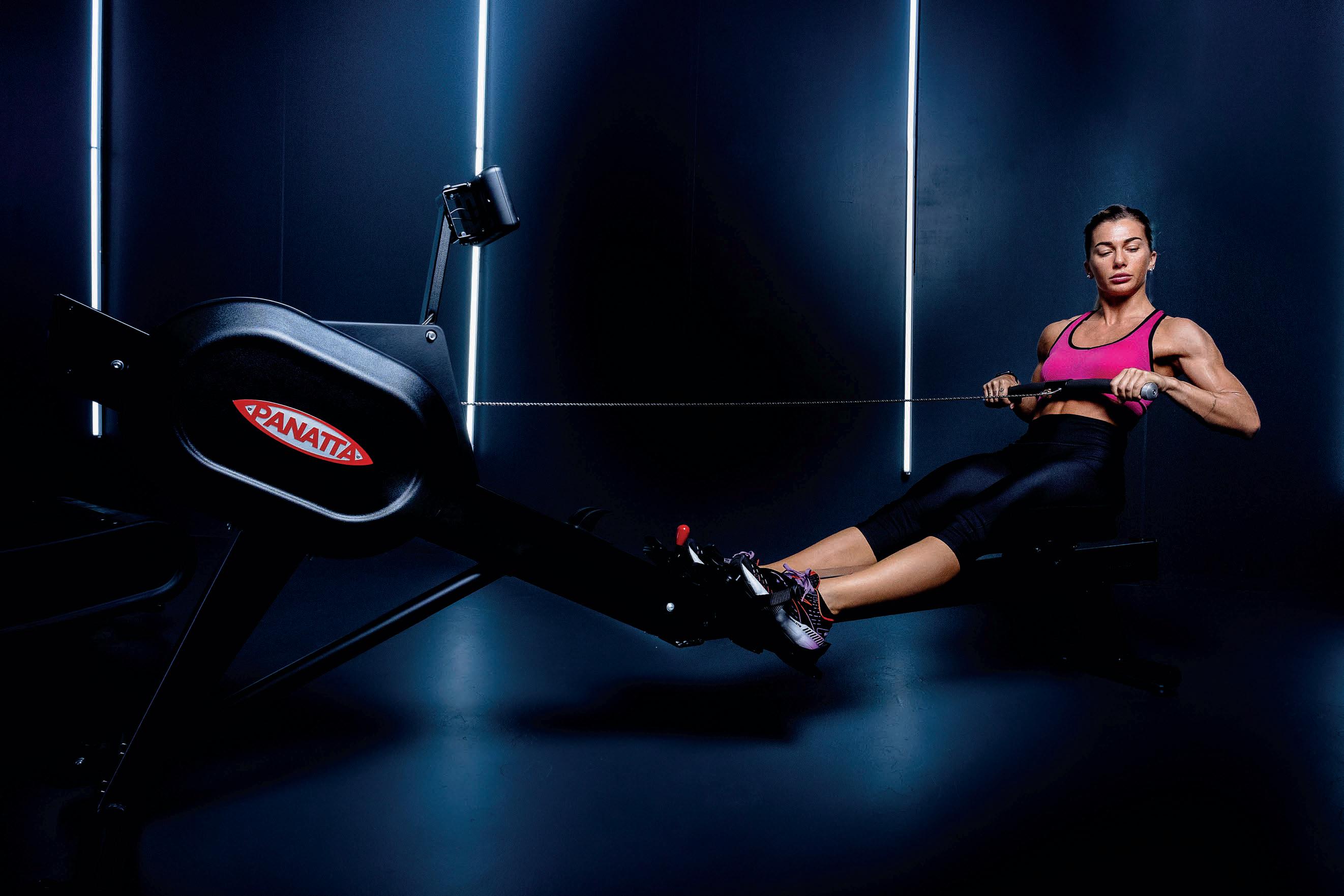
I once went to a gym in Nantucket. It was in a small windswept house on the beach with open windows that allowed a warm breeze and the smell of the ocean. There was very little equipment and I believe no staff whatsoever, but there was something so simple and authentic about that little gem of a gym.

What’s your personal wellness regime?
I do mostly strength training, focusing on slow, controlled movements. I’ve discovered bodybuildingstyle training is the best solution to combat ageing l
l From the archives : www.hcmmag.com/Barton12
l Watch David Barton interviewed on the Entrepreneurship at Cornell YouTube channel www.hcmmag.com/DavidBartonCornell
HCM PEOPLE 16 Issue 7 2023 ©Cybertrek 2023
With Anvil, I tried to be intriguing and titillating. There’s a combination of grit and glamour, akin to the shiny chrome on a Harley Davidson.
Anvil in Russia was designed by David Barton as a fantasy escape
PHOTO: DAVID BARTON
THE APP THAT TAKES CONTROL OF CLASS COVER.









FIND THE BEST INSTRUCTORS LIVE ON COVERME.




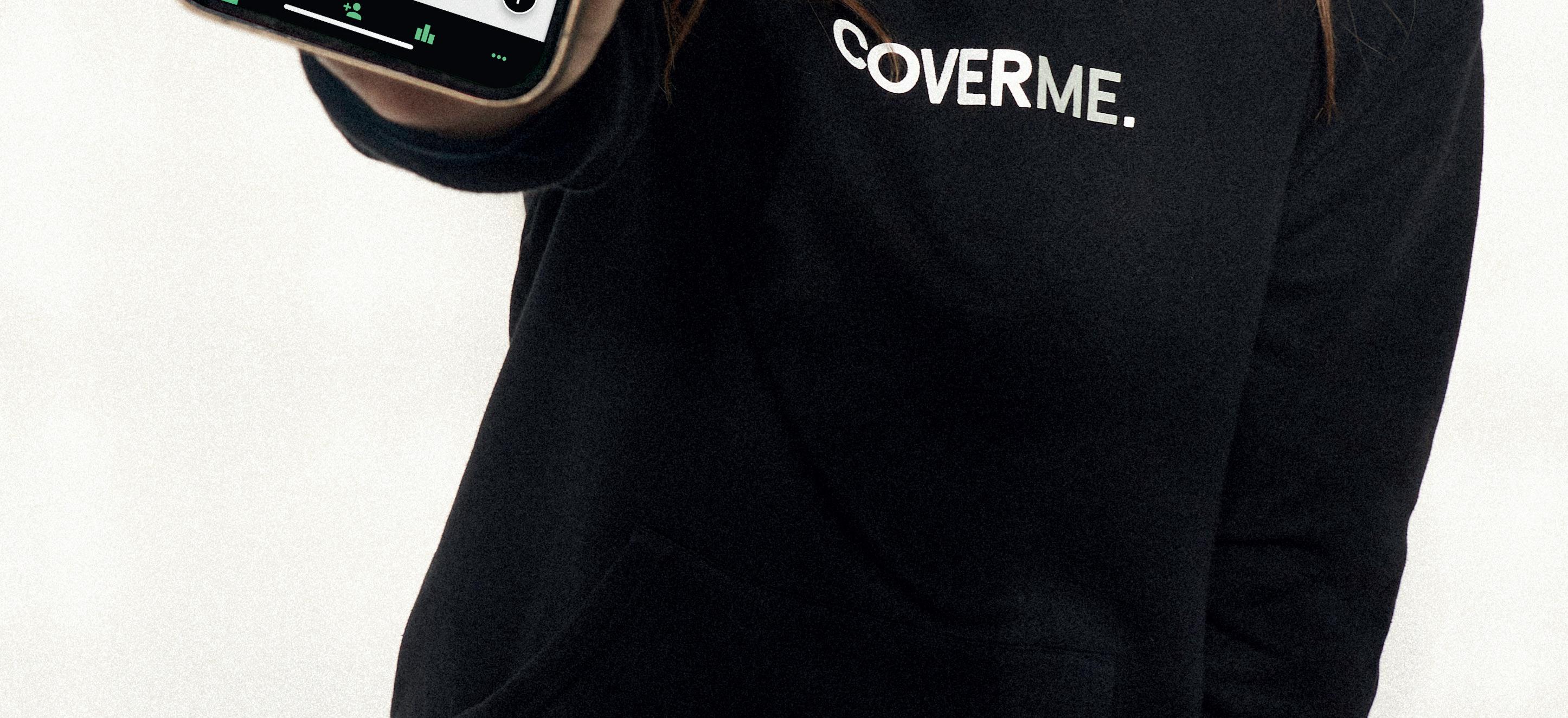
WWW.COVERMEAPP.CO
DOWNLOAD NOW
Emily Bartels

How does Mindbody Capital work?
As a result of Mindbody’s relationship with its customers, businesses that qualify can receive fast, easy financing with a one-time capital fee, making it an offering unlike any other on the market.

Our customers in the US can log into their Mindbody software to see if they have an active offer on their dashboard and accept it in as little as one click. Offers are customisable, so they have the option to accept only what they need.
Offers are pre-approved and updated in real-time. There’s no application process and no upfront cost or collateral required and owners have full discretion when it comes to how they use the funds for their business.
It’s super easy, operators can receive funds in as little as two business days. This allows them to be agile with cashflow to cover payroll or take swift action in regards to a business opportunity.
HCM PEOPLE
Senior VP Payments, Mindbody
Bartels says approved operators can receive funds within two days
PHOTO: MINDBODY
If the business doesn’t see a positive impact within 90 days of implementing Classpass, Mindbody will write that customer a cheque for two-times the difference
How are repayments made?
Mindbody Capital loans are repaid as a percentage of daily sales until they’re paid off. Our customers really like this feature, as they don’t need to worry about making a fixed monthly payment, and payment amounts fluctuate with business performance.
How does this support inclusion?
Since offers are based solely on business performance, Mindbody Capital is an alternative source of loans for businesses that have historically been excluded from financing, such as womenowned and minority-owned businesses.
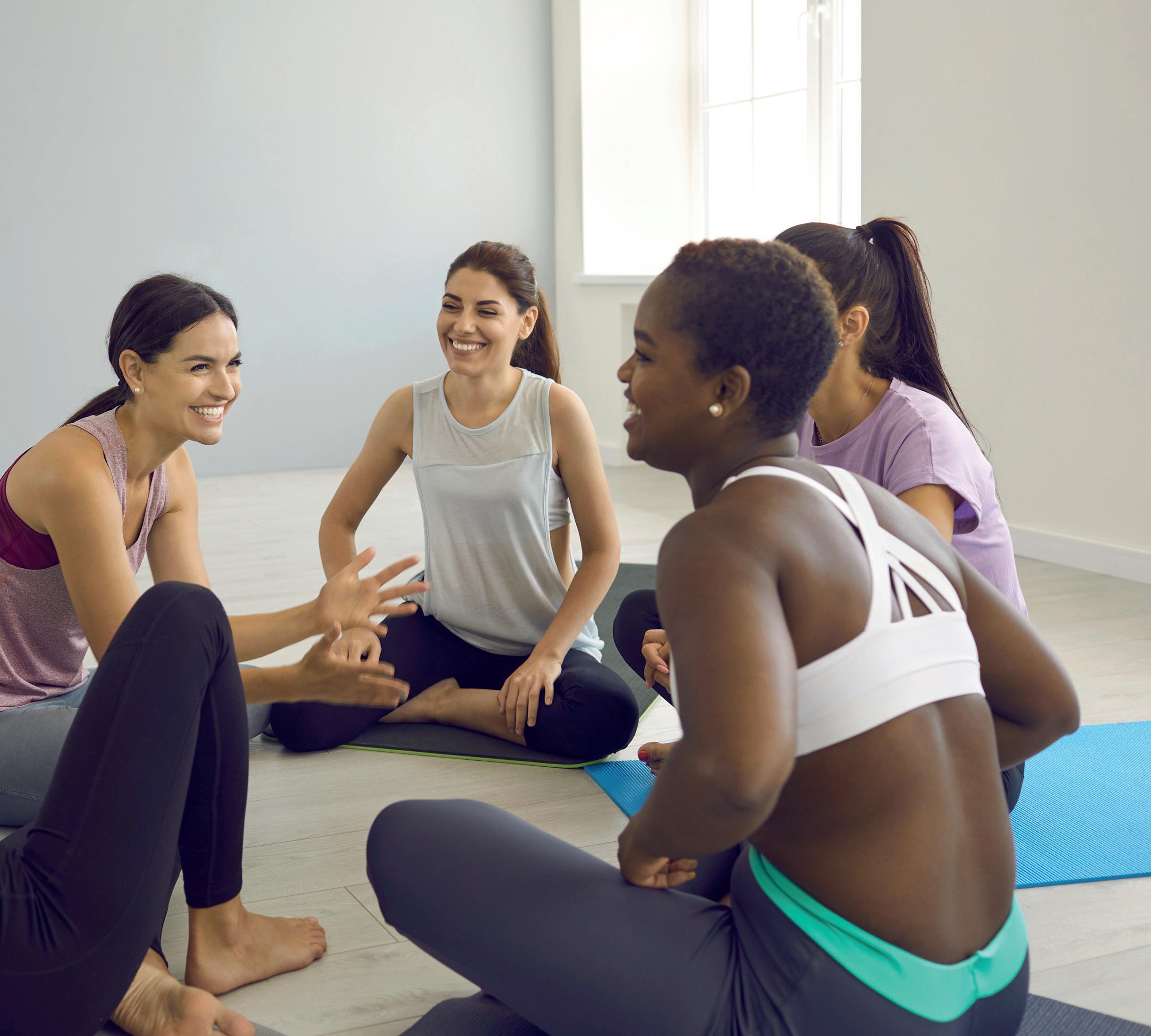
Is there a ceiling on how much you can invest?
No, Mindbody Capital leverages our data and technology to generate and update offers in real-time based on business performance and need.
Female- and minorityowned businesses are often disadvantaged when applying for finance
19 ©Cybertrek 2023 Issue 7 2023
Customers who’ve accepted and paid off advances are realising 12 per cent greater revenue after 12 months than those who did not accept capital
PHOTO: SHUTTERSTOCK / STUDIO ROMANTIC
Who backs Mindbody Capital?
Mindbody is partnered with Parafin (www.parafin.com), a fintech company that provides the underlying technology and capital.
What kinds of things is the money being used for?
Owners can use the funds however they need, as long as it’s for a business purpose. This allows complete flexibility for operators to invest where they need in their business.
The most common uses of Mindbody Capital are payroll and hiring to rebuild staffing levels following the pandemic disruption, fuelling new marketing campaigns to win back former clients and acquire new ones, investing in new equipment and refreshing offerings, paying rent and fuelling expansion and growth.
Are you able to see the value investment is delivering for businesses?
We’ve reached the point now where our first cohorts of capital customers have paid off their advances, and over 50 per cent have already taken a second advance.
We’re seeing really encouraging early data showing that customers who’ve accepted and paid off advances are realising a 12 per cent greater revenue after 12 months over those who did not accept capital.

Fast facts Appetite for expansion
34%
Of fitness businesses plan to apply for financing in the next six months
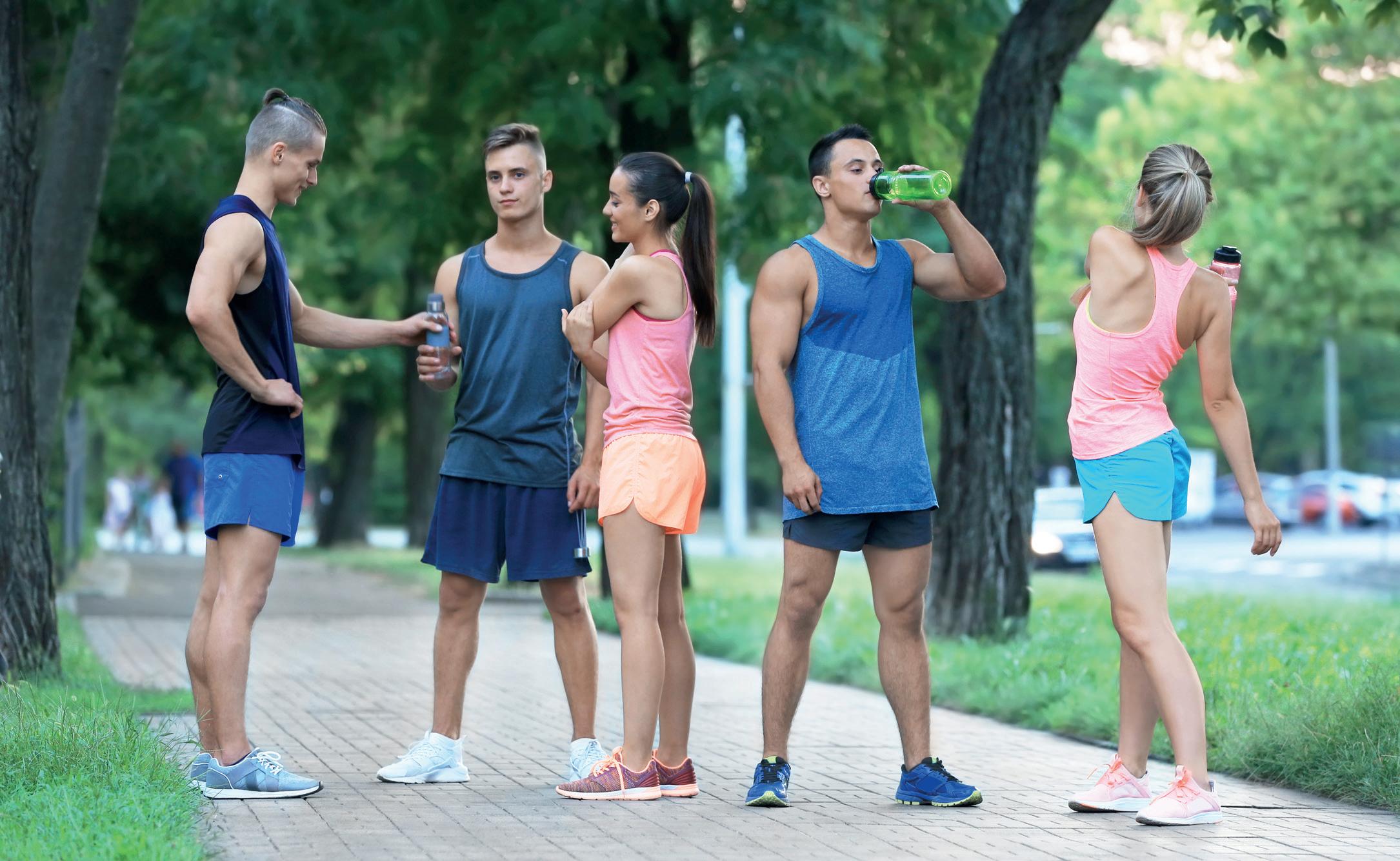
88% Have expanded their services to invest in integrative health offerings


44%
Of business owners say they’re ready to start growing again
HCM PEOPLE Finance can be used to boost marketing to new clients
PHOTO: SHUTTERSTOCK / AFRICA STUDIO
Anecdotally, we continue to hear positive feedback from customers about the value Mindbody Capital is bringing to their business and how it’s enabled them to finally make the investments they’ve been wanting to undertake – whether it’s hiring more staff, adding services, opening new spaces, or doing brand refreshes for their clubs.
How important is this initiative in growing the market?
The goal has always been to support the industry after we saw firsthand the impact of the pandemic on the wellness industry.

Additionally, Mindbody Capital was created to help our customers with one of the most common challenges a business owner faces: access to capital. This challenge is more acute today than ever, given the ways the pandemic has forced our industry to evolve.
Our goal is to help business owners access capital in an efficient and inclusive way – allowing our customers to focus their energies and resources where they’re needed most: growing their businesses.
Where does Mindbody Capital sit within the overall company ecosystem?
Mindbody Capital is available for eligible US Mindbody customers, including those who are on Classpass. Bringing the brands together, there are offers businesses take up by being both Mindbody and Classpass customers. Mindbody Capital is just one of them.
We also rolled out the Classpass Guarantee, which is exclusive to Mindbody customers. This provides a money-backed guarantee that Classpass will drive incremental revenue growth and if the business doesn’t see a positive impact within 90 days of implementation, the customer gets a cheque for twice the difference.
Mindbody customers can watch their client base grow in their software where they can access metrics on how Classpass adds clients to their business.
With access to Mindbody Capital and the Classpass Guarantee, we’re able to show how Mindbody and Classpass work better together. More: www.mindbodyonline.com/business/capital l Get the new Mindbody/Classpass 2024 Predictions Report at www.HCMmag.com/mindbodyClasspass24
21 ©Cybertrek 2023 Issue 7 2023
With the backing of Mindbody capital, operators in the US are exploring new horizons
PHOTO: SHUTTERSTOCK / MARTINA STRIHOVA
Capital has enabled Yoga London to continue to grow in a challenging market
Yoga London
Favad Malik moved from London to the US five years ago with an investor visa and a dream to develop a network of wellness businesses, which eventually led him to open Yoga London (www.yogalondon.us).

Inspired by a career in wealth management, he says he knows how interconnected the dimensions of wellness are – financial wellness included – and through this lens, saw an opportunity to bring a modern workout to a rural community.
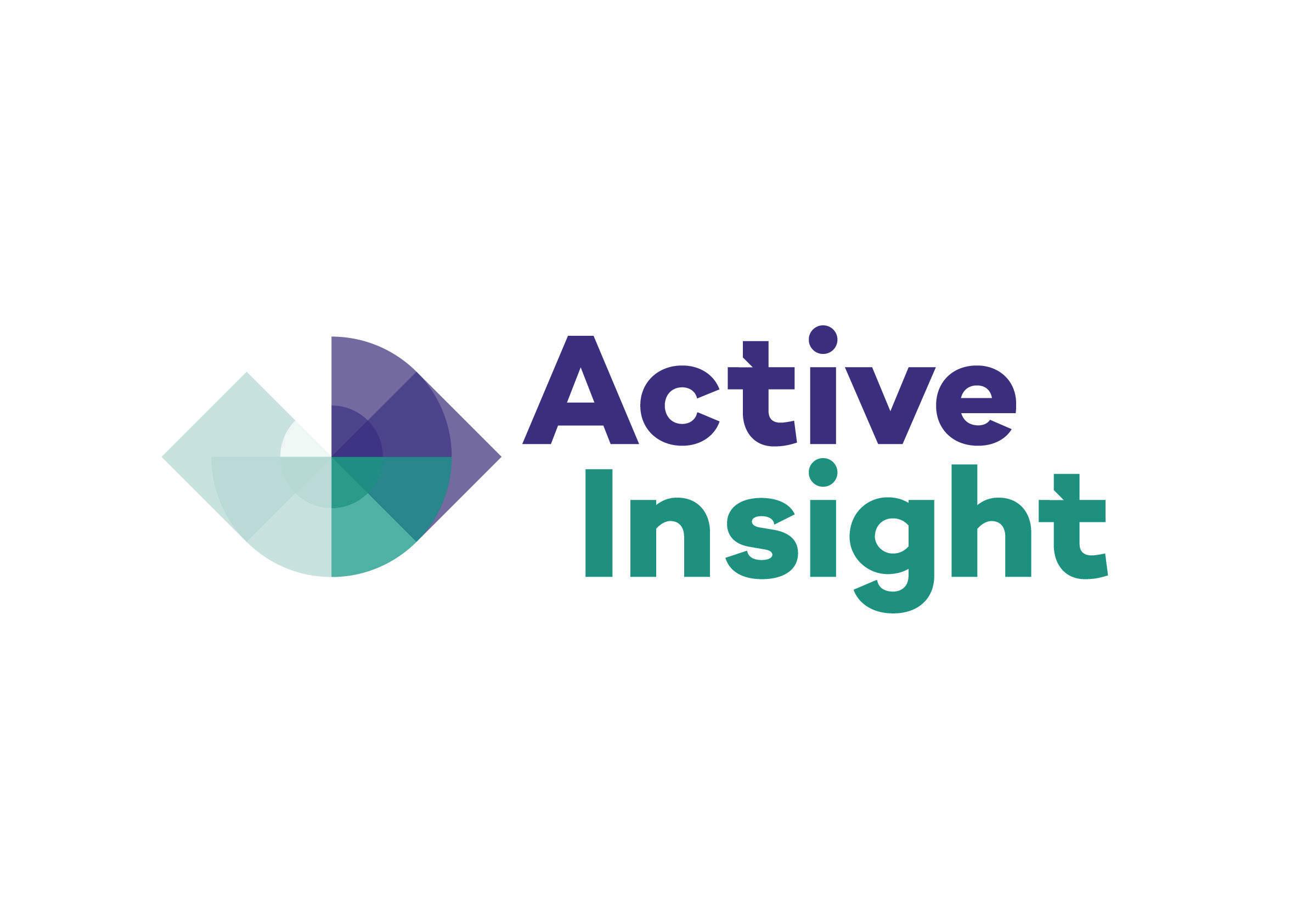
Yoga London became the first hot yoga studio in Idaho Falls and Malik made it Yoga London’s mission to provide a safe community for ‘every body’.
Opening only five months before the start of the COVID-19 pandemic, Yoga London experienced challenges from the beginning and from months of shutdowns and quick pivots to online classes, Malik says growth hasn’t always been easy.

One challenge he faced was securing capital. As a UK passport holder, he’s often ineligible to apply to American lenders, however, he was able to borrow from Mindbody Capital. Because Yoga London was viewed as a growing business and he quickly received flexible funding that he says empowered him to be nimble in executing creative ideas. “You’re having to make decisions, but sometimes you could miss
the boat because you’re waiting on someone to help finance or fund it. Mindbody Capital helps facilitate those ideas and creativity,” he says.
“The speed of the process is great. I applied on a Thursday evening and it arrived on Friday afternoon. It’s almost like dipping into an existing bank account.”
Repayment was also straightforward, with a percentage of daily deposit deducted each day. Weekly reports show a summary of the repayments and a timeline of when the funds will be paid off.
Growth is Yoga London’s top priority.
Mindbody Capital has enabled Malik to market to a wider audience, increase recruitment efforts and bring in more staff. With Mindbody as a partner, he plans to open additional locations and continue growing his community. ●
More: www.hcmmag.com/malik

22 Issue 7 2023 ©Cybertrek 2023
CASE STUDY
PHOTO: SHUTTERSTOCK / 2020 FIZKES
Favad Malik saw an opportunity to bring a modern workout to a rural community
Favad Malik
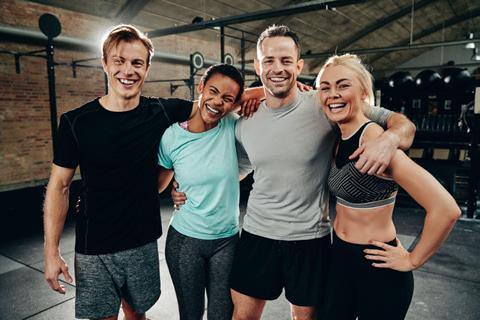

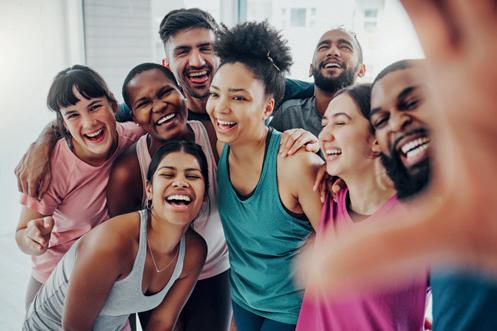





TEN P R OMOTERSCORE • FEEDBACK F O SUC S WIM FOCUS • SALESFOCUS T EAMNETPROMOTERSCORE RECO V ERYFOCUS ONBOARD - LAUNCHING S O O !N CONSUME R INSIGHT PA N E L improve your customer’s experience www.leisure-net.org Moving Leisure-net forward Reach out to Julie Allen at julieallen@leisure-net.org to discover how we help operators support their
through data driven decisions
members
Nike launches group exercise studios
Nike has made the leap into the group fitness market with the launch of Nike Studios. The offering – in partnership with FitLab – is being billed as “a new generation of group fitness for every body and every goal.” Classes will be led by Nike trainers.

The first physical locations will be in West Hollywood, LA, and upmarket Newport Beach in Southern California, near the headquarters of FitLab.
Nike Studios will take over and rebrand existing health clubs, enabling it to fast-track the rollout of its studios. The West Hollywood location will open at Sanctuary Fitness – a FitLab brand – although Sanctuary will retain its locations in Pasadena and Korea Town. The Newport Beach location is thought to be taking over the site of Rocket Science Fitness.
Clubs will be refitted with Nike Grind Flooring, new lighting and decor, as well as a range of equipment thought to be from Assault Fitness.
Nike Studio will take over existing health clubs, refitting and rebranding them
Nike is in talks with other health club operators to re-skin their operations, saying: “We’ll continue to evaluate locations where we have the best opportunity to connect with consumers through premium services, experiences and products.”
The business arrangements between Nike and the club operators are not yet clear, although Nike says “prices are dependent on location”, indicating individual arrangements are in place.
More: http://lei.sr/q8a5h_H
Planet Fitness reports strong growth
Planet Fitness opened 26 new locations in the three months to June 2023, including three corporateowned and 23 franchisee-owned, bringing the total number of sites in its portfolio to 2,472.
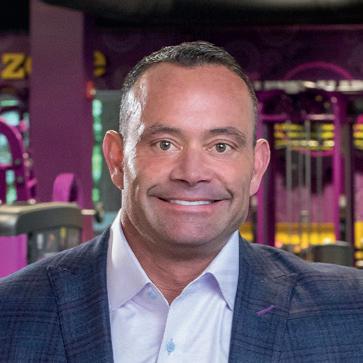
The group also saw strong growth in its financials during the same period, with revenues up US$62.5m on 2022 (27.6 per cent) to US$286.5m.
Adjusted EBITDA increased US$29.8m to US$118.9m from US$89.1m in 2022.
Revealing its Q2 results, Planet Fitness said it had a total of 18.4m members on 30 June 2023.

CEO, Chris Rondeau, said “All generational groups have surpassed their pre-pandemic penetration levels and more of our members
All generational groups have surpassed their prepandemic penetration levels
Chris Rondeau
are working out more frequently. In addition, previous members are rejoining at a faster rate than they did pre-pandemic and they’re staying longer. Q2 was our eighth straight quarter with lower yearon-year cancellation rates.”
More: http://lei.sr/g9V9z_H
news 24 Issue 7 2023 ©Cybertrek 2023
PHOTO: PLANET FITNESS
PHOTO: NIKE
PHOTO: PLANET FITNESS
Planet Fitness delivered 27.6 per cent year-on-year growth in Q2
Anytime accelerating growth across Europe
Self Esteem Brands (SEB) is taking its Anytime Fitness brand to France, following the signing of a master franchisee deal.
Anytime France SARL, a company set up for the venture, will oversee the brand’s growth in the country, with initial openings secured in six locations – Paris, the wider Ile-deFrance region, Auvergne, Rhone-Alpes, Provence-Alpes and the Cote d’Azur.
Specific locations and number of clubs will be announced at a later date.
With the addition of France, Self Esteem Brands will now have Anytime Fitness clubs operating in 41 countries and territories around the globe.
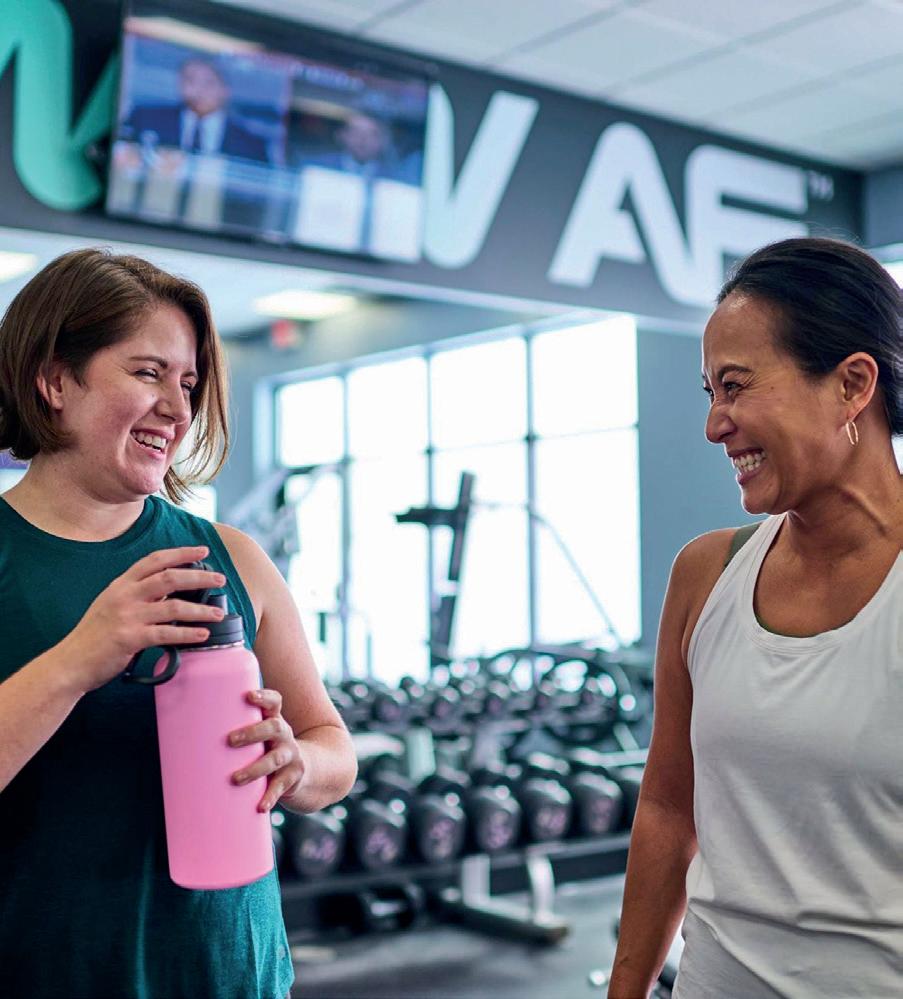
Sander van den Born, executive vice president of international, Self Esteem Brands, said: “With the general recovery of the fitness market
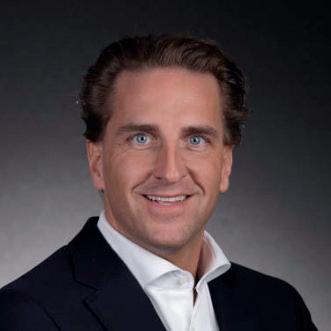
We are well placed to bring the Anytime Fitness brand here as we accelerate our growth
in France, the moment is right; we are well placed to bring the Anytime Fitness brand here as we accelerate our growth across Europe.”
• Read our exclusive interview with Self Esteem co-founder Dave Mortensen on page 32
More: http://lei.sr/n6H5G_H
F45 sets a new path as it delists from NYSE
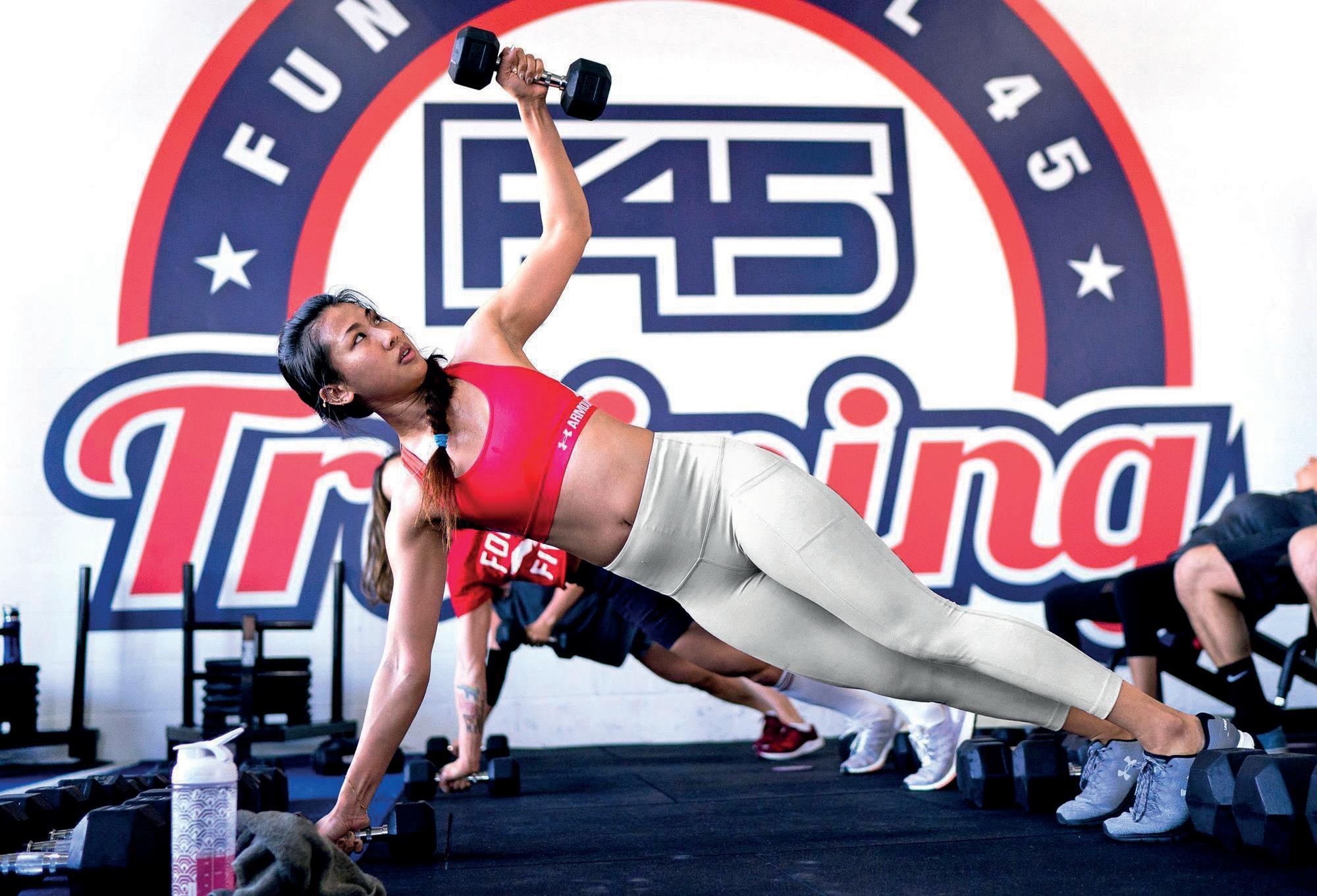
The share price of F45 Training has fallen by 80 per cent, after the franchised fitness group announced plans to delist from the New York Stock Exchange (NYSE) and deregister its common stock – 92 per cent down on the year – valuing it at US$88m.
The company had already received a notice from the NYSE that it is not currently in compliance with the continued listing standards of the exchange, due to being behind in its public filings and the price of its stock being below US$1.00 per share over a consecutive 30 trading-day period.
Prior to the announcement, F45’s shares were trading at around US$0.75. At the time writing, the shares were valued at US$0.11 and falling.
In a statement announcing the plans to delist, F45 said “going dark” would be the best way forward, as it would provide cost savings and less time spent complying with the requirements of being a listed company.
“We’ve determined that going dark is the best path for the company due to the expected substantial cost savings and our current inability to realise the traditional benefits of public company status,” F45 said.
“The company’s continued low trading value and price affects its ability to raise capital, effectively use its securities as transaction consideration or attract interest from investors.”
More: http://lei.sr/2e7P6_H
25 ©Cybertrek 2023 Issue 7 2023 Get live news at www.HCMmag.com
Sander van den Born
PHOTO: LINKEDN.COM /SANDER VAN DEN BORN
PHOTO: F45
PHOTO: ANYTIME FITNESS
Anytime Fitness is ramping up growth
F45 had already been serviced with penalties for not filing financial reports for 2022
Dragon Steven Bartlett invests in Until
Entrepreneur Steven Bartlett, perhaps most famous for his role in BBC’s Dragon’s Den, has invested in Until, provider of high-end workspaces for PTs and wellness professionals.
Until was launched in August 2021 with its first site in London’s Soho.
Located within the new Ilona Rose House near Tottenham Court Road tube station, the 8,500sq ft space includes 3,000sq ft of gym floor space, nine treatment rooms, eight coaching rooms, changing rooms and a performance suite.
Other specialist areas include podcast studios and private booths for video calls.
Until is the brainchild of investor Vishal Amin and Alex Pellew, a former marketing specialist with Adidas and Nike. At Nike, Pellew was credited with leading the redesign of Niketown London, driving a series of hybrid, digital and product experiences – most notably Nike+

and NikeID. Pellew is also the former president of Parkrun France.
Bartlett said: “I’m extremely proud to be joining Until as marketing co-founder and being part of a business that is looking to change the health and
wellness landscape forever.
“Supercharged by the pandemic, this industry is booming - the demand for training, treatment, and coaching has never been higher.”
More: http://lei.sr/9c9Z9_H
David Lloyd Leisure fined £2.5m over death
David Lloyd Leisure has been fined more than £2.5m after pleading guilty to charges brought under the UK’s Health and Safety at Work Act. The company was also ordered to pay £258,355 costs.

The case against DLL was brought following the death of a threeyear-old boy, Rocco Wright, at the David Lloyd Leisure Club on Tongue Lane, Moortown, Leeds in April 2018 when he was found at the bottom of the pool by his father.
At the time of the incident there was only one lifeguard, aged 17, on duty.
Health and Safety Executive (HSE) guidance HSG179 Health and Safety in Swimming Pools recommends that ‘constant poolside supervision by lifeguards provides the best assurance of pool user’s safety’ and in a pool
measuring 25m x 12.5m, the HSE guidance provides for two lifeguards, which may be required following a lifeguard zone visibility test.
An investigation by Leeds City Council’s environmental health team found the club had “exposed club members to risks” and following the findings of the investigation, the council then launched a prosecution against DLL.
In another incident in May 2022, a four-year-old girl was injured at the David Lloyd gym at Capability Green, Luton and was taken to hospital where she later died.
This case is still being investigated, with a report due soon from Luton Borough Council.
More: http://lei.sr/N5c2e_H
news 26 Issue 7 2023 ©Cybertrek 2023
Bartlett (middle) with Until founders, Vishal Amin (left) and Alex Pellew (right)
PHOTO: DAVID LLOYD CLUBS
PHOTO: UNTIL
Rocco Wright died after being found in the pool at a David Lloyd Club in Leeds
Wellness a “top priority” for consumers
Consumers now consider health and fitness to be an essential area of expenditure and despite the global squeeze on disposable incomes, will continue to increase their investment in wellness.
That is among the headlines in the second annual Mindbody + Classpass 2024 Predictions Report, published this week by Mindbody and Classpass.
The report charts consumer sentiment and outlines views from industry leaders regarding the wellness trends to expect in 2024.
The six predictions for the year ahead are:
1. Strength training will retain its popularity
2. Beauty and wellness community events will become increasingly popular
Older adults and boomers will head to fitness facilities in greater numbers Mindbody Classpass 2024 Predictions Report
3. Consumers will expect science-based, performanceproven products and services
4. The importance of sleep hygiene will continue to grow
5. Consumers will combine temperature therapies
6. Older adults and boomers will head to fitness facilities in greater numbers

Each trend is fully annotated, with commentary and case studies. Follow the link for full access to the report.
More: http://lei.sr/j7U8p_H
Les Mills launches Shapes strength workout

Les Mills has launched a new low-impact, strength-based workout programme inspired by Pilates, barre and power yoga.
Designed to help health clubs and studios engage younger members, Les Mills Shapes has been released as new research reveals strength training is the most popular activity among Gen Z gym goers, followed by pilates and yoga.

Called Gen Z Fitness: Cracking the code, the research also shows how the generation – people born between
1996 and 2010/12 – presents a “transformative opportunity for clubs to drive record growth”.
Suitable for all fitness levels, the new Shapes programming provides a fullbody dynamic and targeted workout that uses small, controlled movements and repetition to sculpt and strengthen all areas of the body, while boosting coordination and flexibility.
“Our research shows that choice is important for younger members, which is why we wanted to create a program that blends the best parts of Pilates, yoga and stretch workouts,” said Erin Maw, Les Mills international trainer and the creator of Les Mills Shapes.
More: http://lei.sr/4p3g6_H
27 ©Cybertrek 2023 Issue 7 2023 Get live news at www.HCMmag.com
Our research shows that choice is important for younger members
Erin Maw
PHOTO: LES MILLS
PHOTO: SHUTTERSTOCK.COM/MARIAN WEYO
PHOTO: LES MILLS
Strength training will remain popular
Les Mills Shapes has been designed to help clubs engage younger members
Clubs turn into musculoskeletal health hubs
Parkwood Leisure, in partnership with its subsidiary companies Legacy Leisure and Lex Leisure, has launched two rehabilitation programmes across 24 leisure centres in England and Wales.

Doing so, Parkwood has become the latest operator to pilot a project which forms part of a wider strategy, driven by UK Active, aiming to transform clubs and gyms into musculoskeletal (MSK) health hubs.
The two programmes are called Escape-pain and Good Boost.
Escape-pain is an education and exercise-based rehab programme, supported by Orthopaedic Research UK, that reduces chronic pain.
Good Boost is an aqua- and landbased rehab programme that uses AI to assess individual conditions and create tailored exercise programmes.
Glen Hall, MD of Parkwood, said: “There’s a huge opportunity for leisure facilities to improve access to healthcare provision through the delivery of MSK programmes and help ease the burden on the health service.”
More: http://lei.sr/K8E7n_H
World’s first in-flight workout zone launches
Australian airline Qantas has introduced a workout and wellness zone as part of the new cabin design for its Airbus A350.
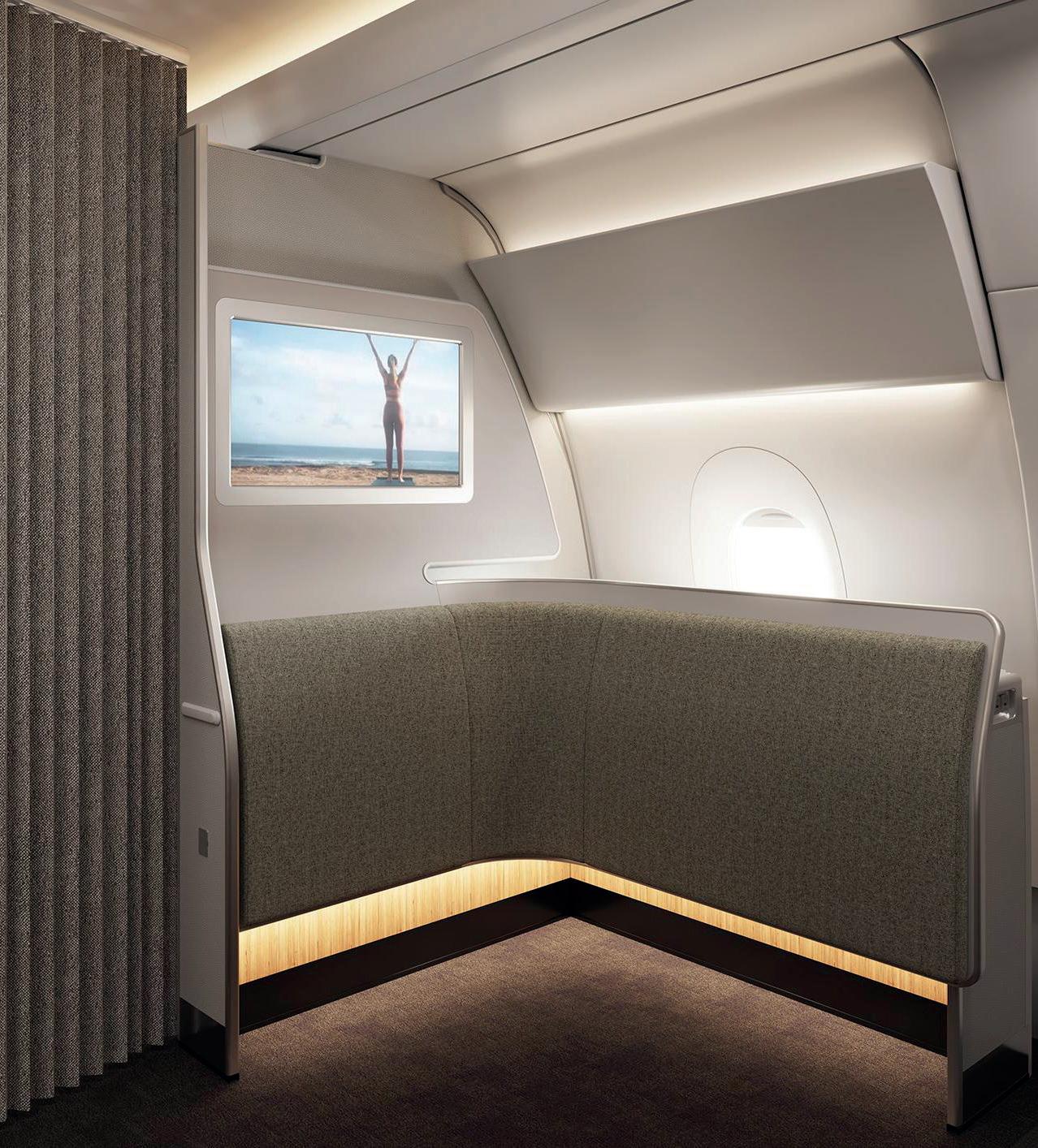
Once Qantas adds 12 Airbus A350s to its fleet in late 2025, it claims it will be the first airline in the world to offer an in-flight workout space that encourages guests to stretch, hydrate and spend time out of their seats.
The area will feature sculpted wall panels and integrated stretch handles, guided on-screen exercise programmes, a hydration station and a range of refreshments.
Developed as part of Project Sunrise, the A350 planes fly non-stop for up to 22 hours, enabling flights to almost anywhere in the world
Qantas Group CEO Alan Joyce said: “We started work


The new Project Sunrise flights give us the opportunity to rethink long-haul travel
Alan Joyce
on the Wellbeing Zone before any other area of the A350.
“The new Project Sunrise flights give us the opportunity to rethink longhaul travel in its entirety, from aircraft cabin design to what ingredients we include on the in-flight menu.”
More: http://lei.sr/F4f9d_H
news 28 Issue 7 2023 ©Cybertrek 2023
The new programmes are part of a wider project to create ‘MSK health hubs’
There’s a huge opportunity for us to improve access to help ease the burden on the health service
Glen Hall
PHOTO: QANTAS
PHOTO: SHUTTERSTOCK/ALPA PROD
PHOTO: LINKEDIN.COM/ALAN JOYCE
PHOTO: LINKEDIN.COM/GLEN HALL
Get live news at www.HCMmag.com
The exercise-based Wellbeing Zones will help improve long-haul travel
EuropeActive launches Exercise for Health Summit
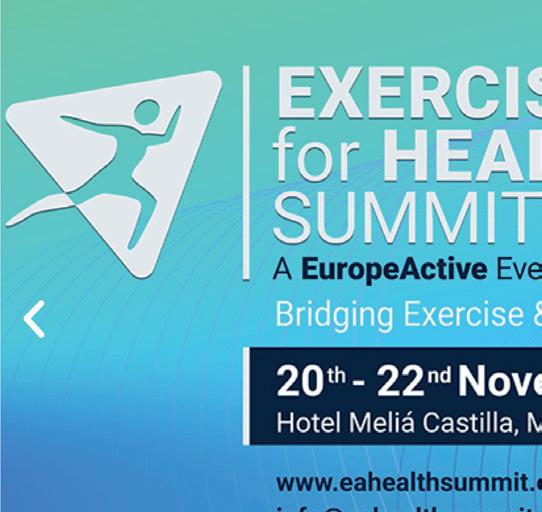
EuropeActive is launching a new event dedicated to promoting health-enhancing physical activity and its impact on communities and individuals.
The Exercise for Health Summit (EfHS) will be held in Madrid, Spain, on 20-22 November during the Spanish Presidency of the European Council in the second half of 2023.


EfHS will include keynotes from leading academic and policy experts, roundtable sessions and presentations featuring case studies and “promising practices” from around the world.
EuropeActive is currently in discussions with The American College of Sports Medicine (ACSM) with the view to publishing all of the contributions made at EfHS in a special supplement of its new
open-access journal, Exercise, Sport, and Movement (ESM).
Confirmed speakers at the event include I-Min Lee, professor of medicine at Harvard Medical School and Jonathan R Ruiz, associate professor at the
Faculty of Sport Sciences at the University of Granada (Spain).
“We can drive positive change in the healthcare industry through physical activity,” said EuropeActive.
More: http://lei.sr/2U8d8_H
Fat burning zones on gym kit “often inaccurate”

The best heart rate for burning fat differs hugely between individuals and often does not align with the suggested “fat burning zone” on commercial gym equipment and exercise machines.
That is the headline finding of a study by Icahn School of Medicine (ISM) at Mount Sinai, which researched exercise intensity and associated heart rate at which the body reaches its highest fat-burning rate during aerobic exercise. It found that the “sweet spot” for optimising fat loss
during workouts – often referred to as FATmax – is highly individual.
Instead, the researchers said, clinical exercise testing – a diagnostic to measure a person’s physiological response to exercise – may be a more useful tool to help individuals achieve intended fat loss goals.
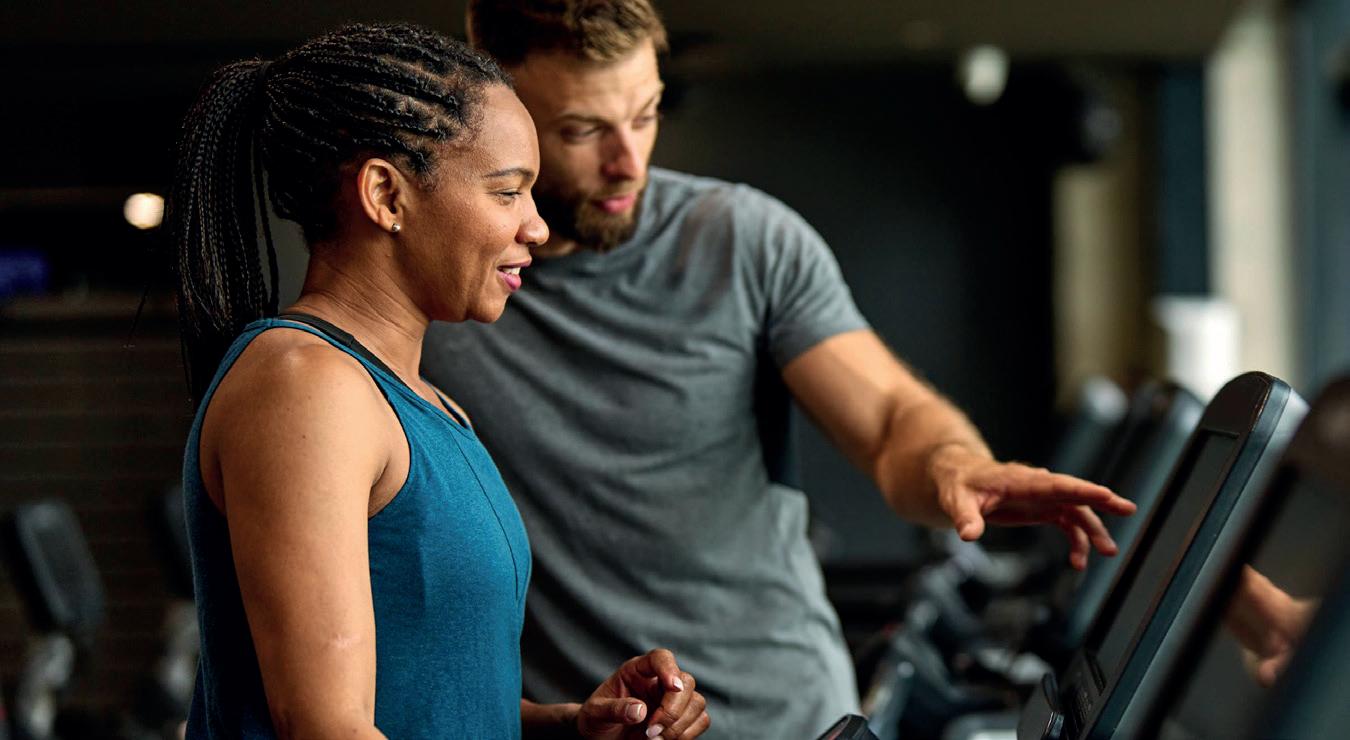
“Most commercial exercise machines offer a ‘fat-burning zone’ option, depending upon age, sex, and heart rate. However, the recommended fatburning zone has not been validated, thus individuals may be exercising at intensities that are not aligned with their personalised weight loss goals.”
Hannah Kittrell
The study’s lead author, Hannah Kittrell, a PhD candidate at ISM, said:
More: http://lei.sr/u6A9E_H
Fat-burning zones aren’t validated, so people may train at intensities not aligned with their goals
PHOTO: SHUTTERSTOCK/PICS FIVE
PHOTO: EUROPEACTIVE
PHOTO: LINKEDIN.COM/ HANNAH KITTRELL
EfHS will feature keynotes from Harvard Medical School and University of Grenada
Get live news at www.HCMmag.com
The “sweet spot” for optimising fat loss during workouts is highly individual
Peloton’s rebrands commercial o ering
Peloton, which announced a major rebrand in May is also relaunching into the B2B market as Peloton for Business, which it says will offer “a unified portfolio of B2B wellbeing solutions for enterprise clients”.
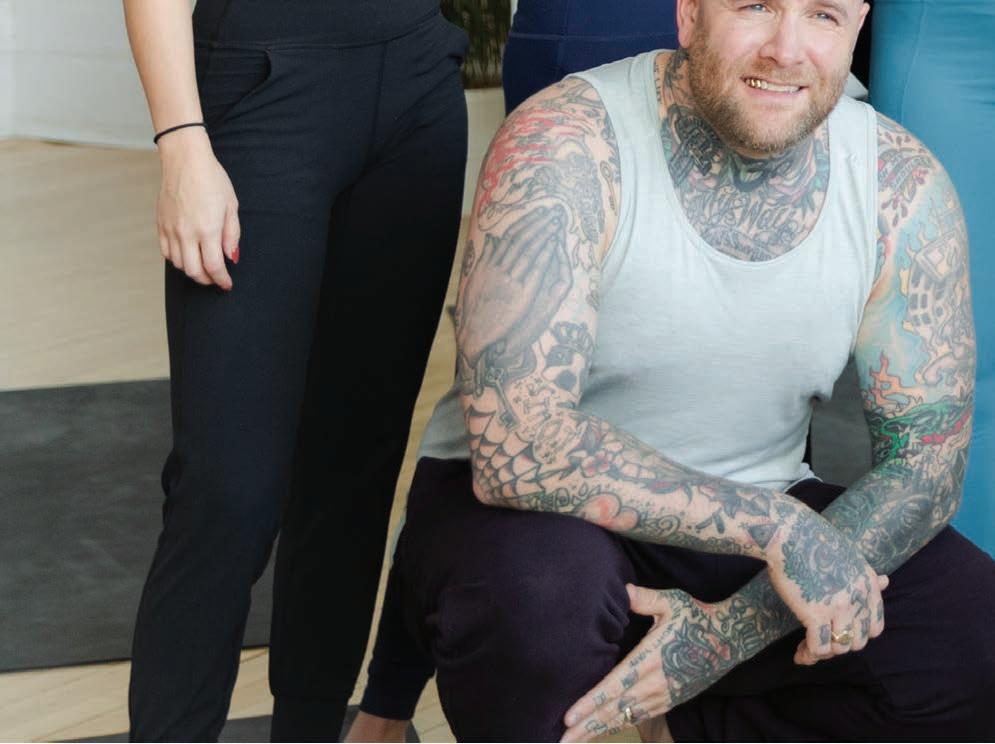
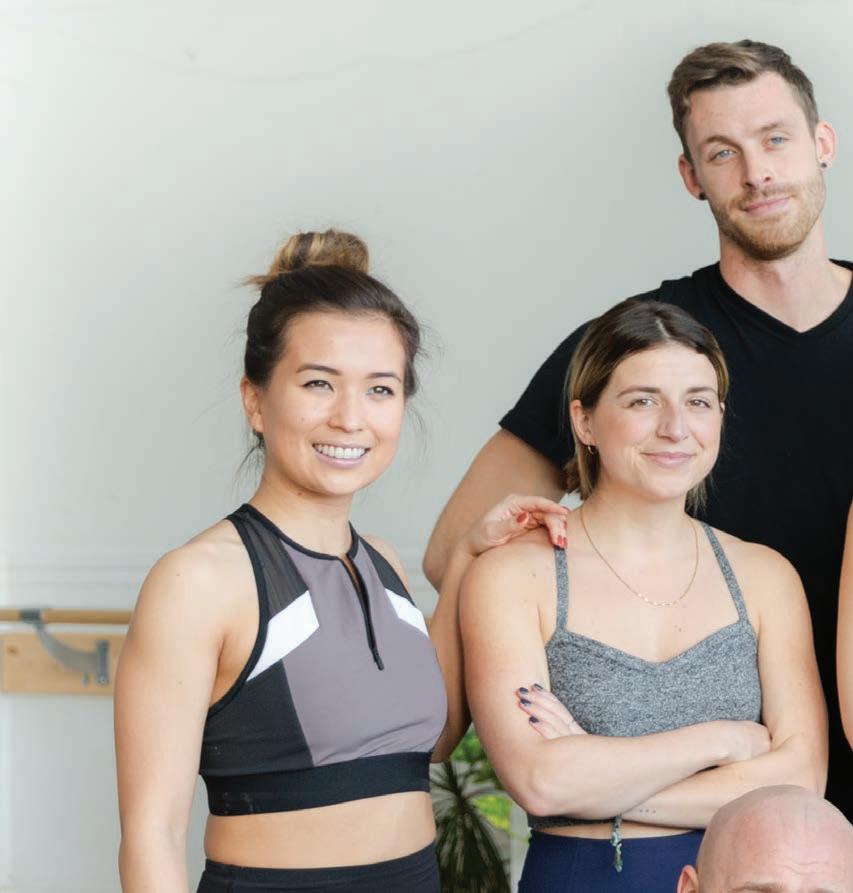
The company had previously launched Peloton Commercial – a merger of Peloton and Precor’s product lines – in September 2021 following its acquisition of Precor in April that year, however, the two have since de-merged to trade separately, to the extent that Precor has since done a distribution deal with Stages Cycles.
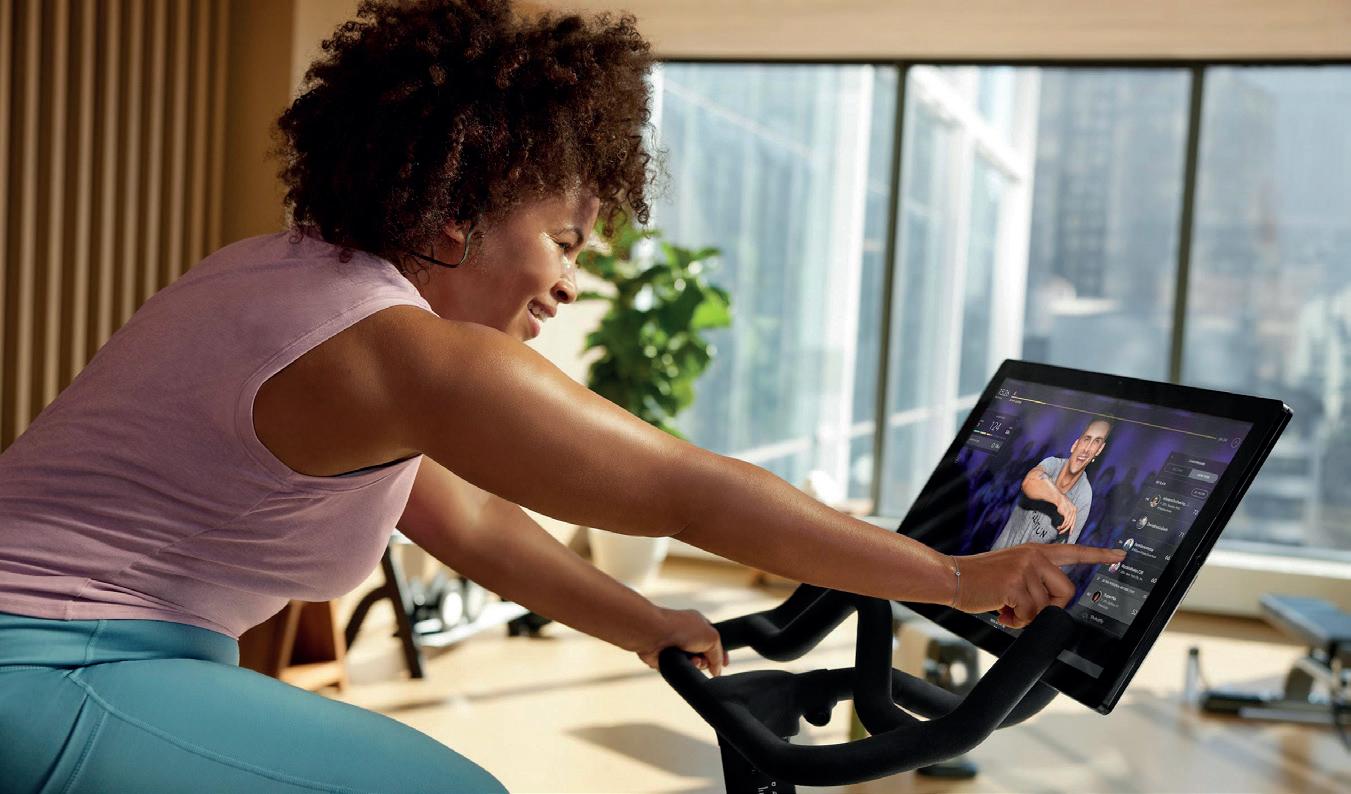
Peloton for Business will operate across seven vertical markets – hospitality, corporate wellness, multi-family residential, education, healthcare, gyms and community wellness.
The operation will have a limited offering, mainly based around the Peloton Bike, that include access
Peloton’s commercial bikes are already being used at Hilton Hotels to the Peloton App, preferred pricing on Peloton equipment and “corporate engagement experiences”. The company says it will also offer “access to enterprise-level partnerships that deliver exclusive programming and offers for the audiences of partner brands and organisations”.
● Peloton has revealed larger than expected losses, due to a drop in subscribers of 20,000 that it attributes to a recall of its Bike seat post. This also cost the company US$40m
Follow the link below to find out more, or go to www.HCMmag.com
More: http://lei.sr/G5E5k_H
Tempo adds 3D body scanning to AI solutions
Fit tech company Tempo has released an update, adding features which leverage the capabilities of both iPhone and AI.
The main addition is the new Body Composition Scanner, which uses the depth camera sensors in an iPhone.
Utilising the iPhone’s tech, the Tempo app can now scan the user’s body and provide measurements for both body fat percentage and body circumference.
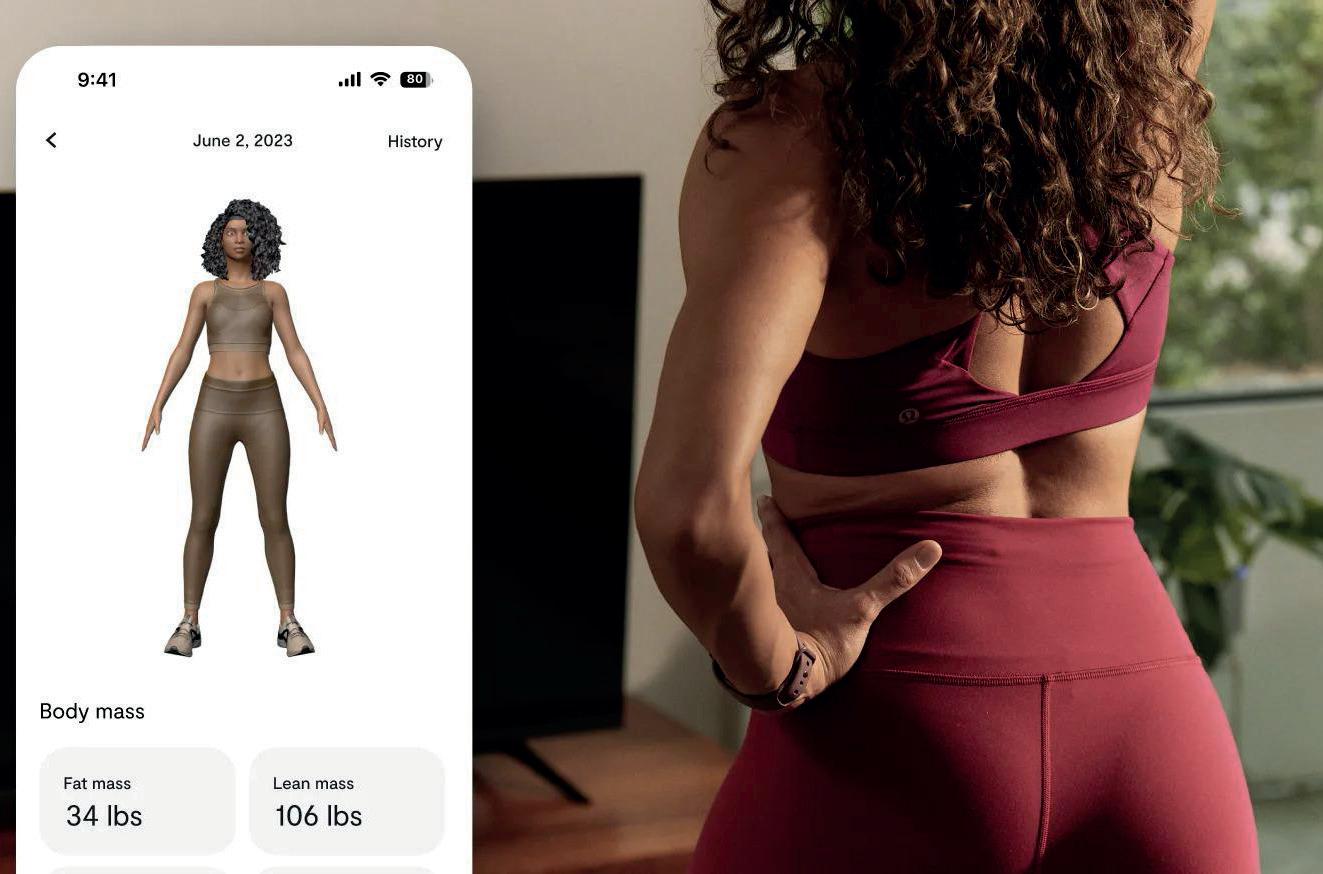
“The gold standard in body scanning technology is a DXA

scan (Dual-energy X-Ray Absorptiometry), which uses low levels of x-rays to measure your body’s make-up.” Tempo says.
“A DXA machine costs up to US$80,000, with each scan costing up to $150 and taking up to 30 minutes.
“Using the depth camera sensors in your iPhone, though, the Body Composition Scanner in the Tempo app provides results within ±5 per cent for body fat percentage when compared to DXA results and ±3.1 per cent for body circumferences.”
Tempo can provide measurements for body fat and body circumference
Utilising the data, Tempo will be able to recommend the difficulty and intensity level for individual workouts, for example, which weights the user should be choosing.
More: http://lei.sr/c2u4v_H
30 Issue 7 2023 ©Cybertrek 2023
news Sign up at www.FitTechGlobal.com/signup
PHOTO: PELOTON




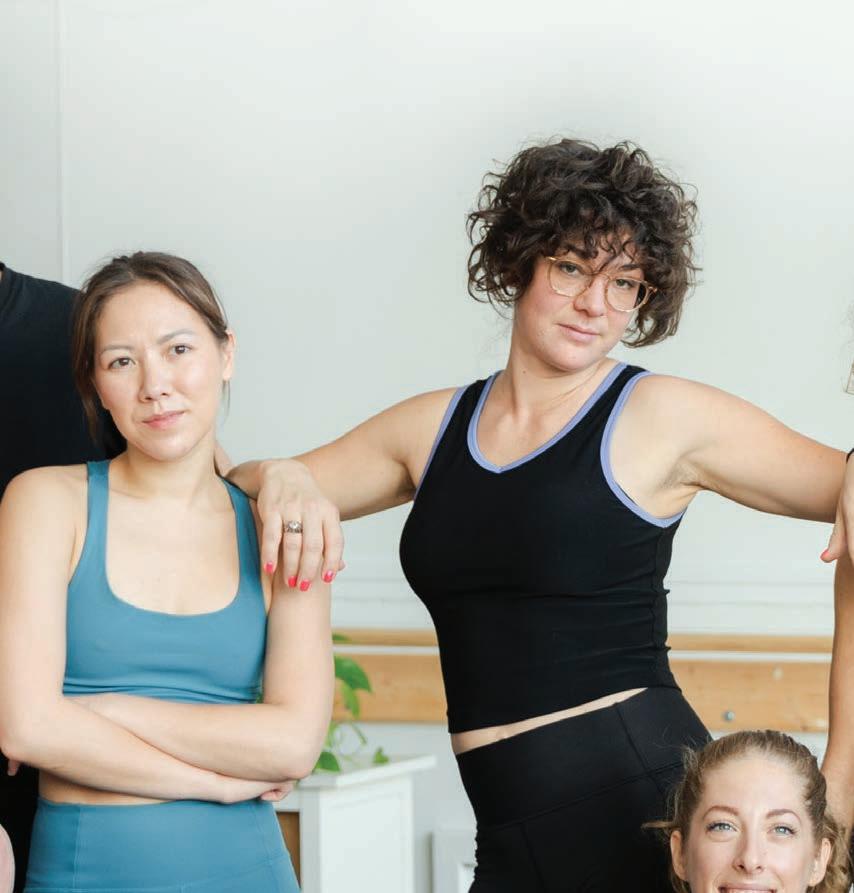
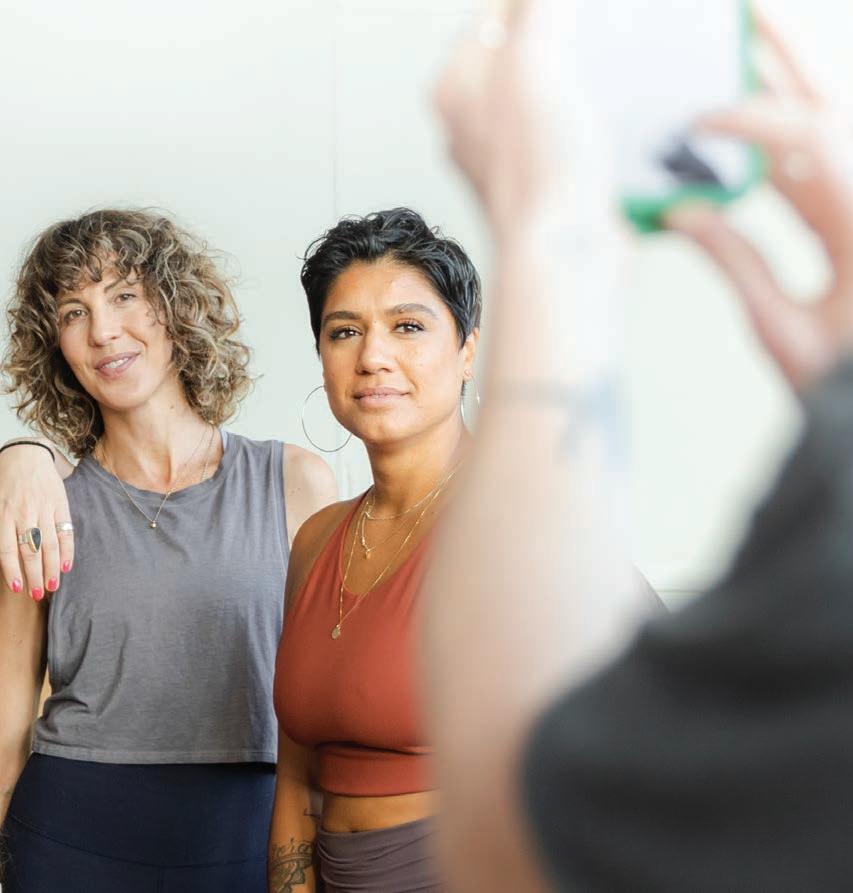

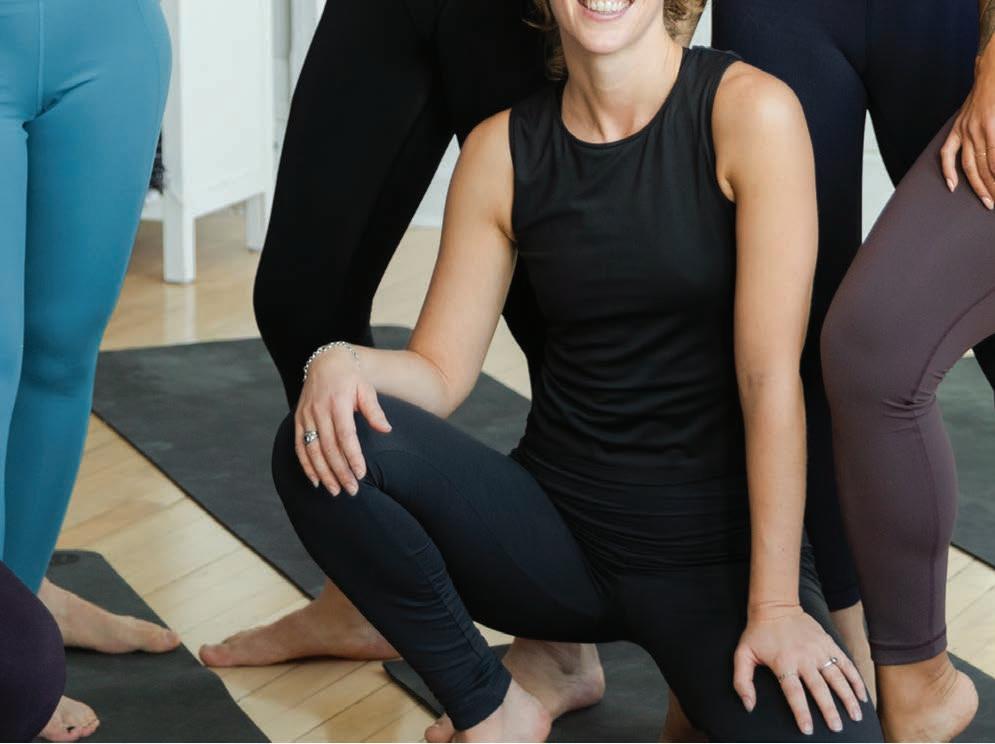
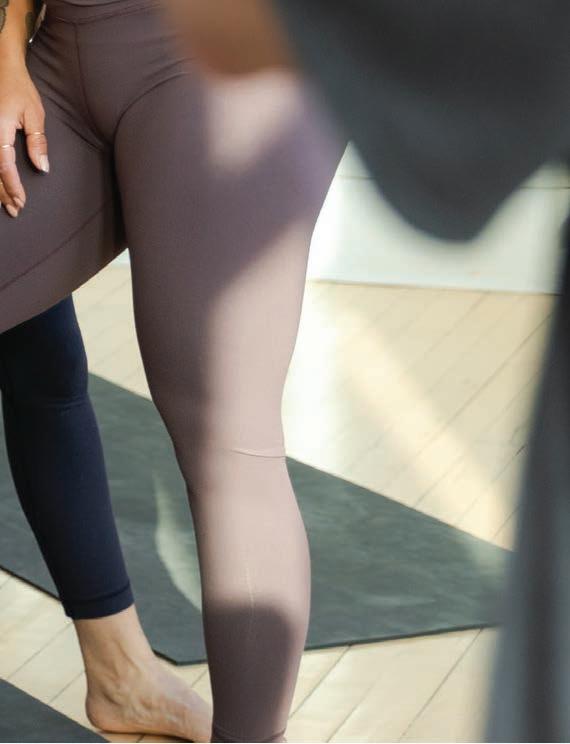
There’s only one studio like yours. Everything you need to run—and grow—your business. There’s only one software like ours. To book a demo or learn more, visit uk.mindbodyonline.com
DAVE MORTENSEN
Further global expansion is on the cards for Self Esteem Brands, as Anytime Fitness heads to France and its other brands are set for overseas growth. Its president and co-founder speaks to Kate Cracknell
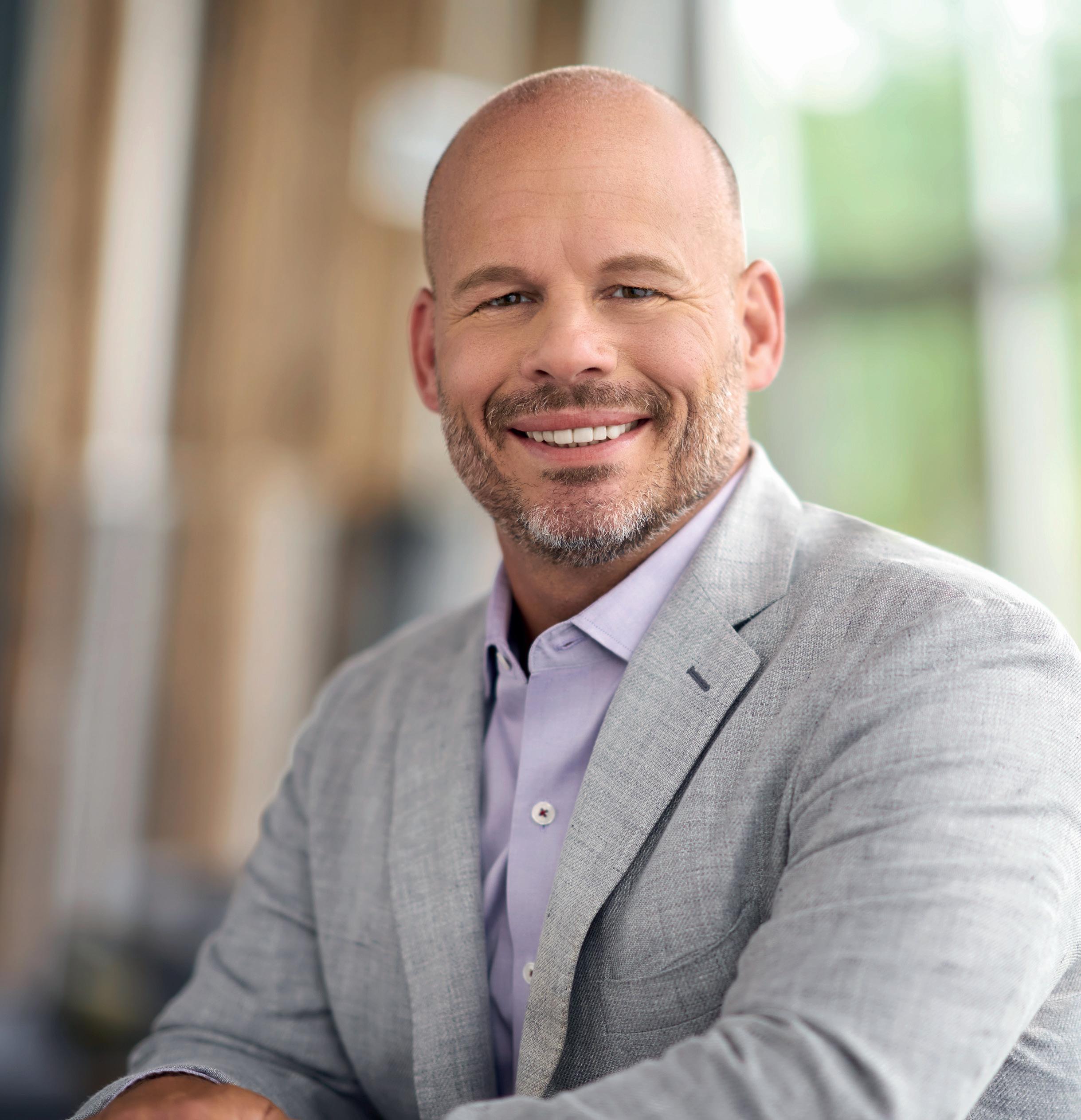
32 Issue 7 2023 ©Cybertrek 2023
Mortensen co-founded Anytime Fitness with Chuck Runyon in 2002
INTERVIEW PHOTO: SEB
Within the
Having founded Anytime Fitness in 2002, co-founders Dave Mortensen and Chuck Runyon formed Self Esteem Brands in 2012 as an umbrella under which to build a portfolio of personal care brands.
The first to join the group was Waxing The City, which was acquired in 2012, followed by Basecamp Fitness in 2018, The Bar Method in 2019 and Stronger U Nutrition in 2021. The company also owns Healthy Contributions and ProVision Security (2008).
Self Esteem Brands (SEB) now has over 5,500 locations across the seven continents, with Anytime Fitness currently accounting for the lion’s share of that tally. But now the other brands – currently all North American operations – are eyeing international growth. Dave Mortensen brings HCM up to date.
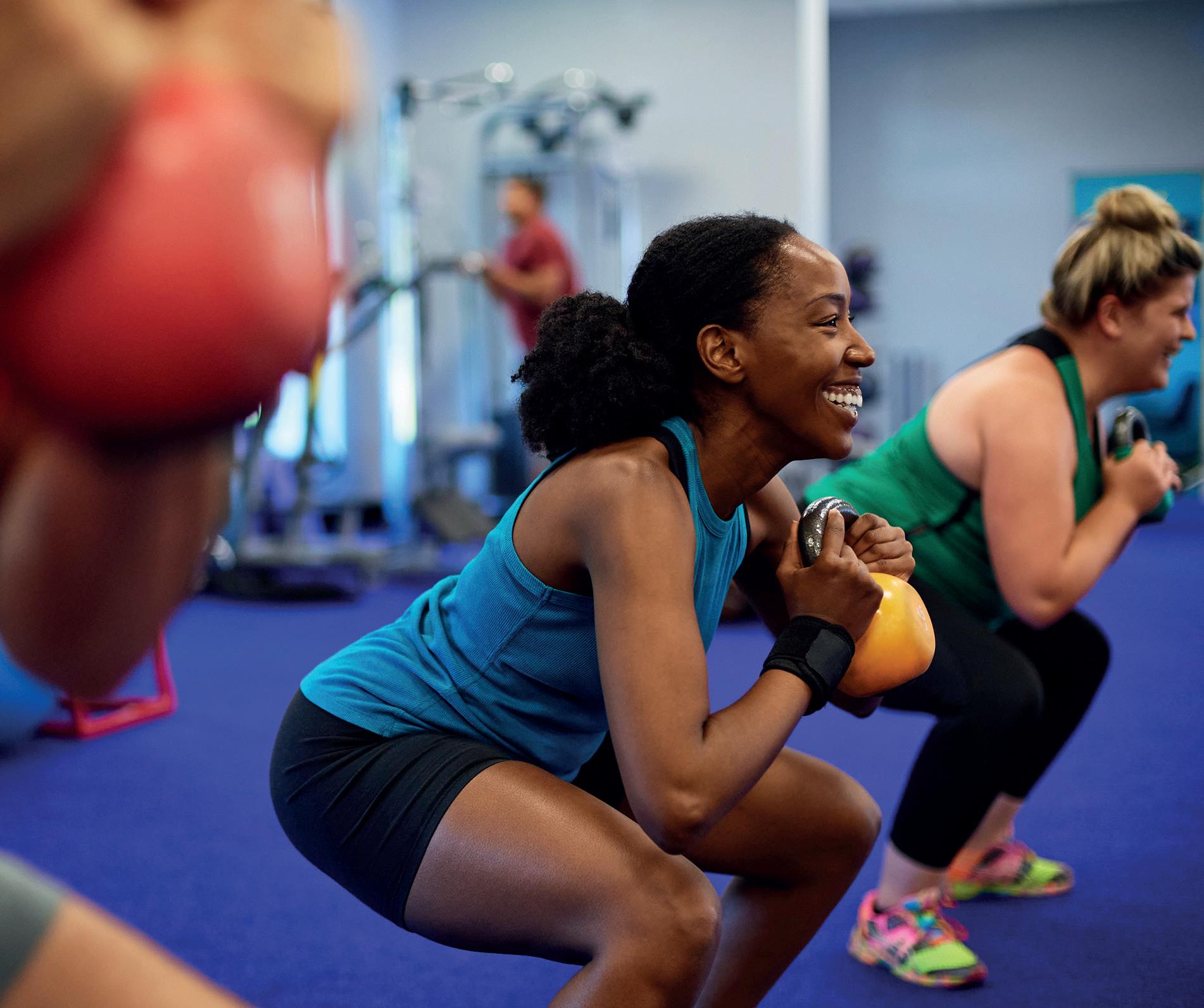

How do you decide which brands to acquire?
We’re interested in anything within the personal care space, so obviously fitness and wellness – that’s been our bread and butter – but really anything where people are investing in themselves and taking care of themselves. That’s where Waxing The City comes in.
Beyond that, any brand we acquire has to align with the four pillars – the four Ps, of our high-performing culture.
Firstly it must have, and invest in, the right people . Brands don’t make an industry special – people do. We have to believe the people within a business can execute and drive it.
It must have a purpose that aligns with ours –something bigger than the individuals in the business
and something its team believes in. It can’t just be about financials: the team has to believe in the purpose first. They also need to convince us of the purpose in what they do, and how this aligns with our mission to improve the self-esteem of the world.
It has to perform in franchising. Our number one stakeholder is our franchisee network, so franchisee success is key for us. We have to be sure any brand we acquire is focused on the same numbers as us – numbers such as same-store sales and average unit volume. Ultimately, if our franchisees win, we win.
And then the fourth P: they can have the greatest business in the world, but to work with them, we have to like them and enjoy their company. That means they have to be playful; we take our business and our customers seriously, but we don’t take ourselves too seriously.
Will you make further acquisitions?
We’re always looking to grow – the day I tell you we’re done is the day I retire!
There are lots of areas to explore within personal care – there’s mental health, for example, although I think that’s something we’ll look to infuse across all our brands – especially at Anytime Fitness, which operates in that wellness space, mental health will be ever more significant.
33 ©Cybertrek 2023 Issue 7 2023
next five years, we want to get to 10,000 units globally
PHOTO: SEB
Self Esteem Brands has a goal of impacting 100m people
There’s skincare, too, which is something I’m personally passionate about. I definitely think there’s opportunity in that space. There are opportunities with other fitness brands, too.
What I would say is that, in the future, we’ll look for a bit more scale before we acquire. Some of the brands we have now came in at a smaller scale. Moving forward, I think we’ll be looking for franchise brands to already have 100+ units before we bring them into Self Esteem Brands.

Would we ever take on a business that wasn’t already a franchise? Never say never, but most likely we’d want it to already be a franchise.
How are your brands performing?
Anytime Fitness is still the foundation of Self Esteem Brands, and probably the greatest thing we’re seeing right now is double-digit growth of Anytime Fitness across the globe.
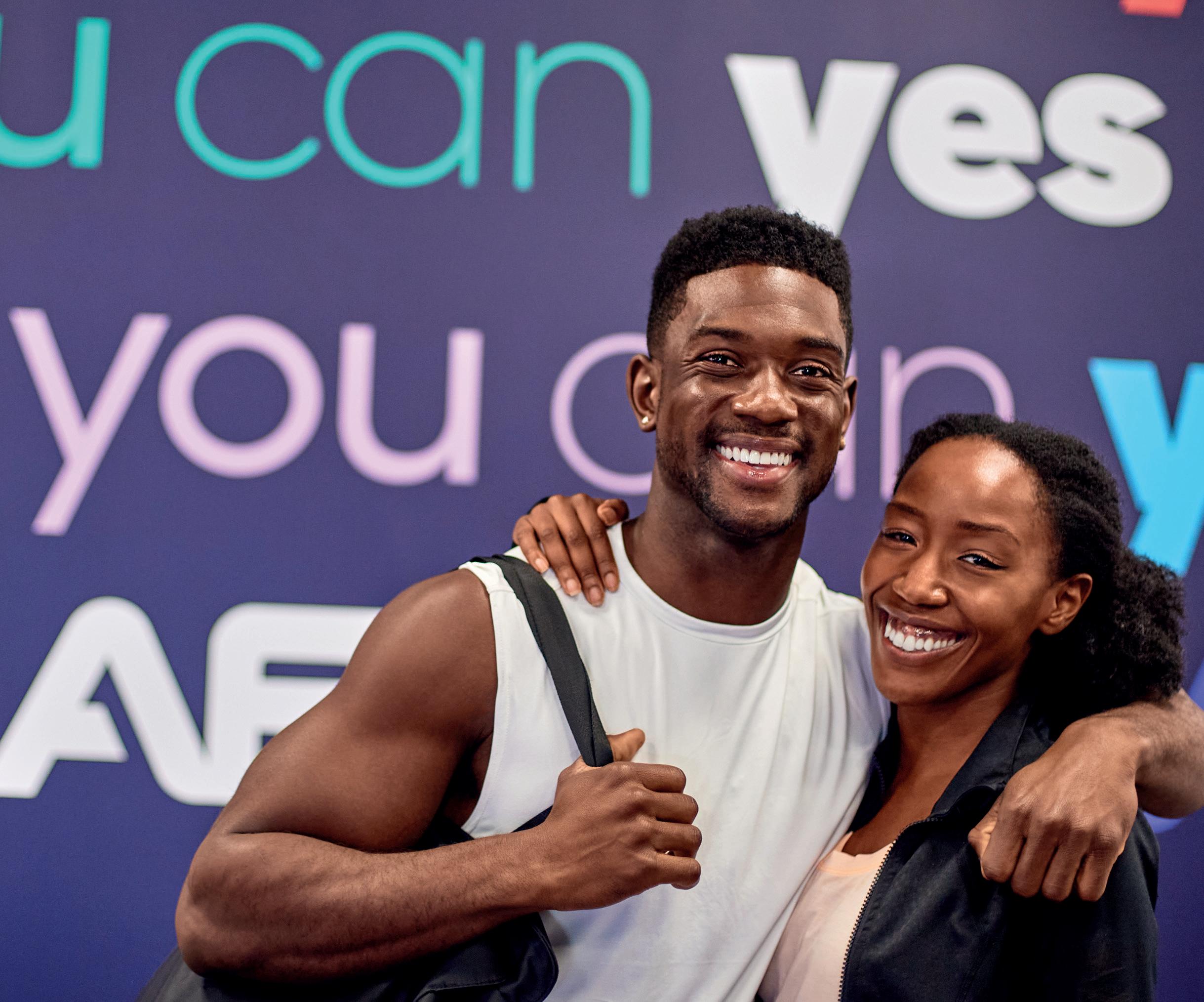
But new walls are rising every day. Waxing The City is going absolutely gangbusters right now: it’s breaking records this year. Our studio brands are also doing well: they took probably the biggest hit during the early day of COVID, but they’re returning to 2019 numbers.
So we’re seeing positive growth in every one of our brands. In fact, our average unit volumes are better than ever and we’re well north of 2019 numbers across the board, with double-digit growth for Waxing The City for the last five years and double-digit growth – based on year over year sales – for our studio brands too. Everything is on a very positive trajectory.
And Anytime Fitness is going to France… France is a market we’ve wanted to be in for a very long time; we’re often asked why we’re not there yet, as we’re strong elsewhere in Europe.
34 Issue 7 2023 ©Cybertrek 2023 Self Esteem Brands has over 5,500 sites on seven continents
INTERVIEW PHOTO: SEB
Data is key to ensuring governments understand how essential our industry is. That’s why Anytime Fitness has committed to being the first to show we actually make our customers healthier
As always, though, it’s about finding the right partner. We’ve been approached before, but it’s never been right. Now, we’re in a position to say yes and we’re really excited about it.
I think France can easily hold 350+ Anytime Fitness clubs and our new partner, Anytime France sàrl, is already targeting seven regions, including: Paris, Ile-de-France, Auvergne, Rhône-Alpes, Provence-Alpes and the Côte d’Azur. Beyond that, we’d also like to bring our studio brands to France.
This follows our announcement in April of a new master franchisee for Austria – Manfred Mitterlehner – which took Anytime Fitness to 40 countries and territories around the world. By Q2 2024, nine existing Mitterlehner Fitness Clubs will be converted to Anytime Fitness. Two brand new Anytime Fitness clubs will also open in Austria in autumn 2023.
We’re really excited about the opportunity that still exists to take Anytime Fitness to more people around the world.
You’re eyeing APAC expansion too. Tell us more
In May, we appointed Taka Suzuki to the new post of regional vice president for Japan and Asia-Pacific. Growth in Japan is still massive, but there’s also great opportunity across the whole of APAC. We felt it was really important for us to have someone based in the region.
We’ll scale clubs and studios across APAC in 2024 and beyond, but the initial focus will be on supporting Fast Fitness Japan – our largest master franchisor, with more than 1,100 Anytime Fitness clubs – as it expands into the studio space with our two fitness studio brands.
In all non-US markets, those two brands will be The Bar Method and SUMHIIT Fitness. When we acquired Basecamp Fitness, we weren’t able to trademark it everywhere across the world. It remains Basecamp Fitness in the US, but we wanted a consistent brand for all other markets globally, so we trademarked the name SUMHIIT Fitness and will launch the first non-US location in Sydney, Australia, in Q3 this year.
Will all brands go global?

We’re looking to put more SEB boots on the ground in multiple markets, not only in APAC but also, coming soon, in Latin America and Europe – Europe also being where SEB’s executive VP –international, Sander van den Born, is based.
And there are a lot of buds growing in a lot of different areas. There are good things happening around Europe right now and we’ll definitely be expanding there, with markets such as Scandinavia very interesting for us.
You’ll also see very large-scale expansion of SUMHIIT Fitness over the next 12 to 24 months; for both Basecamp Fitness and The Bar Method, it was never just about the domestic opportunity. In fact, that was of secondary importance.
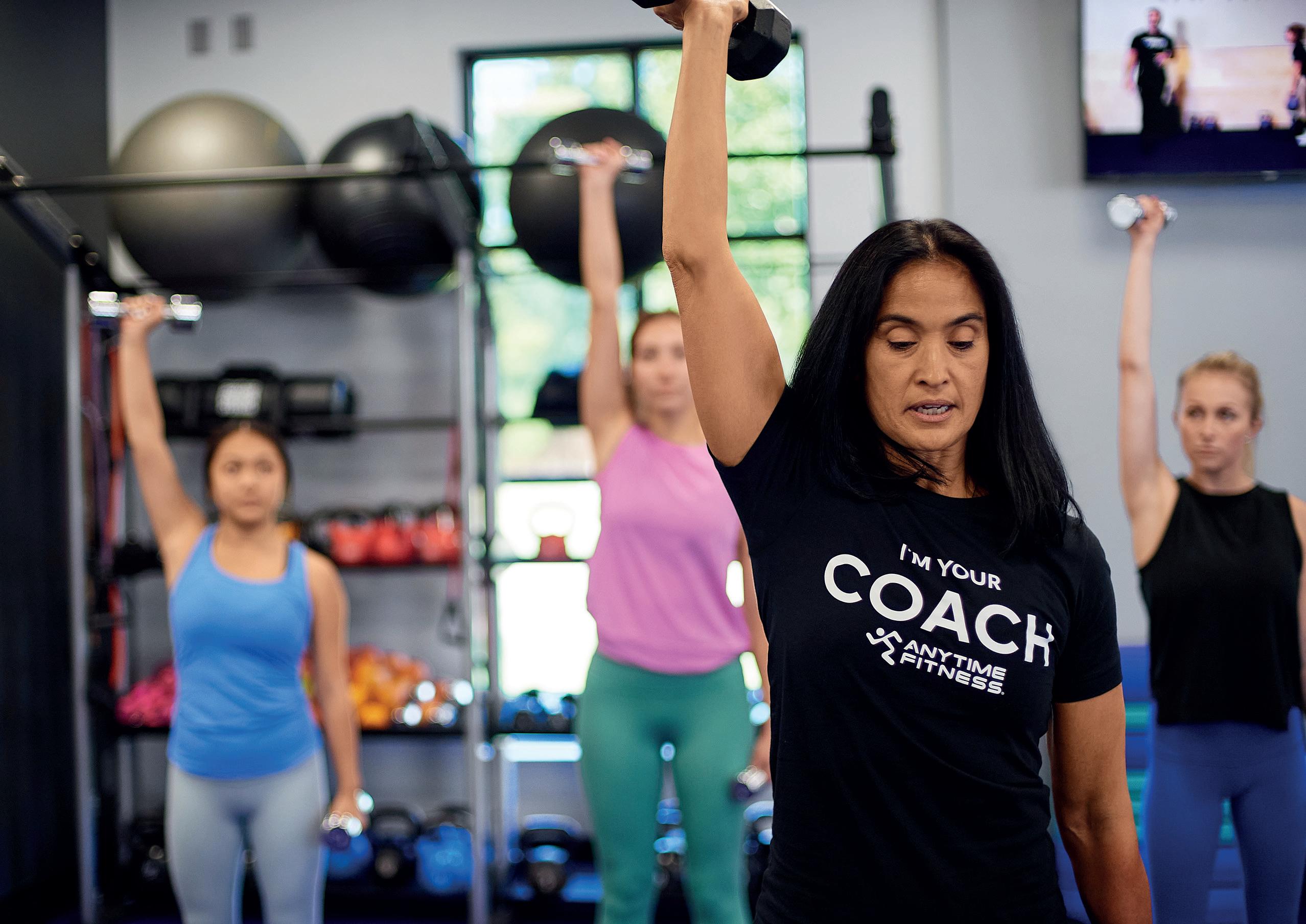
35 ©Cybertrek 2023 Issue 7 2023
Mortensen expects to open 350 Anytime Fitness locations in France
PHOTO: SEB
Moving forward, we’ll be looking for franchise brands to already have 100+ units before we bring them into Self Esteem Brands

36 Issue 7 2023 ©Cybertrek 2023
The Basecamp Fitness concept is rolling out globally as SUMHIIT Fitness INTERVIEW
PHOTO:
SEB / MICHAEL HAUG
The number one opportunity with our fitness studio brands is scaling our international expansion, both with existing partners – depending on their capabilities and desires – and new partners.
We generally work on a 3-1-1 model, by which I mean for every three Anytime Fitness clubs we put in a market, we’d aim to put in one of each of our studio brands; the studio brands need a slightly higher population density to support their model. In some markets, especially smaller countries, we’ll go into an area development agreement rather than a master franchise relationship.
When it comes to global expansion, we adopt a ‘glocal’ approach, implementing an 80/20 rule: 80 per cent of what we do with our brands, we bring to each country to maintain consistency; 20 per cent is localised in partnership with our master franchisor. It’s the master franchisor who makes us go from good to great.
Any plans to evolve the Anytime model?
We’re seeing more people strength training than ever before, both men and women. Not only that: they’re also starting to realise that cardio doesn’t have to be about getting on a cardio machine – that cardio also happens within strength. They’re changing the way they work out.
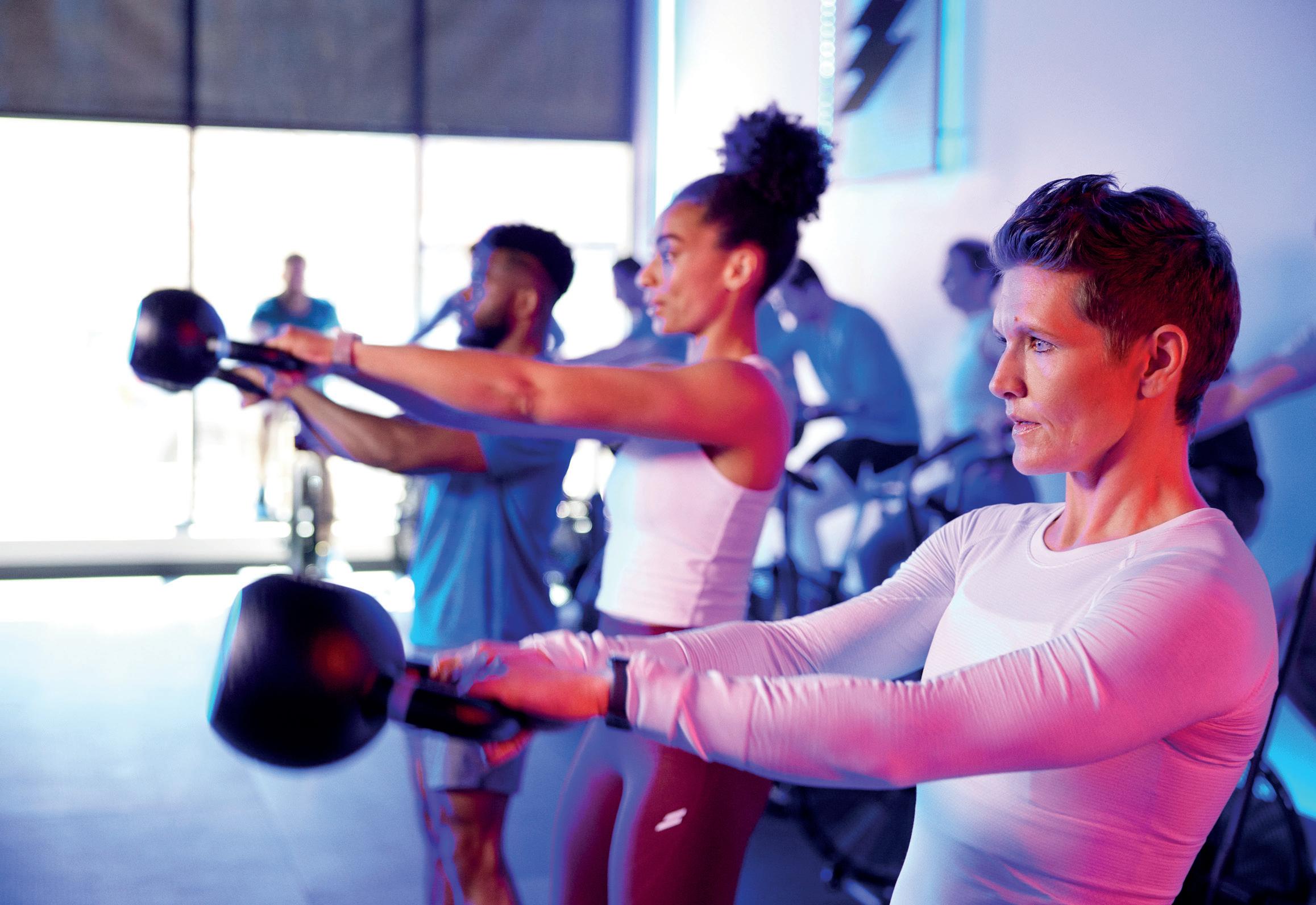
This is one of the most exciting things I’ve seen in the evolution of the way our customers use our facilities. In fact, I think it’s the best thing that’s ever happened to the industry and to our customers, because with muscle atrophy an issue as we age, strength is long-term health.
We need to get even more people into true strength, so our designs and layouts at Anytime Fitness will adapt to this new way of working out.
You also recently launched a new app…
We launched our Anytime Fitness app in April, and in May created the post of SEB international technology lead, appointing Jonathan Midttun to the role.
Probably the biggest difference in the way we’re approaching technology compared to others is this: everyone’s talking about how to reach customers wherever they are. We talk about making fitness accessible for our customers. That’s a big difference in focal point. It isn’t about us. It really is about them. We want to make fitness as accessible as possible and make it as easy as possible for our customers to see success.
To do that, we have to place their health in their hands, allowing them to track, own and drive their health improvements. Already, our members can track their progress on metrics such as body fat, weight loss and so on, but we’re also working on tracking happiness scores, as well as providing each member with a personal health score – a score they can easily understand and improve as they grow in their health and wellness journey.
37 ©Cybertrek 2023 Issue 7 2023
SEB is gearing up to target the Scandinavian market
PHOTO: SEB / MICHAEL HAUG
This has the potential to impact healthcare, too. As with car insurance, where you get a better price if you’re a safe driver, a personal health score could be the basis for favourable health insurance premiums, which would really help make fitness an essential lifestyle choice.
Data is also key to ensuring governments and the healthcare sector understand how essential our industry is. That’s why Anytime Fitness has committed to being the first brand to show, year-on-year, that we actually make our customers healthier. We’ll track whether customers are active and what they’re doing – if they’re completing certain activities with Anytime Fitness – and monitor the impact on their health.
All this technology will go cross-platform at Self Esteem Brands, with apps focused purely on results for members rather than customer acquisition. In our industry, acquisition is still driven by referrals, and referrals come if you help your members get results.
Finally, we’re looking at how AI can help us understand people’s decisions for being active and explore nuances we can incorporate as an operator – both through technology and personal touch – to encourage our customers to stay on their journeys even longer. Over the last two years, we’ve already impacted our attrition by over 5 per cent using AI.
Tell us about your other brands.
We’ve seen for a long time in the industry that it’s hard to do both fitness and nutrition really, really well. We, therefore, decided it made most sense for us to bring in a nutrition brand that we can embed into Anytime Fitness and our studio brands, sharing in the profits of the business across our franchise system. That brand is Stronger U Nutrition: a direct-to-consumer product where health coaches
Deeper dive
Self Esteem Brands
www.sebrands.com
Anytime Fitness
www.anytimefitness.com
Basecamp Fitness
www.basecampfitness.com
SUMHIIT Fitness
(Basecamp outside the US)
www.SUMHIIT.com

Stronger U Nutrition
www.strongeru.com
The Bar Method
www.barmethod.com
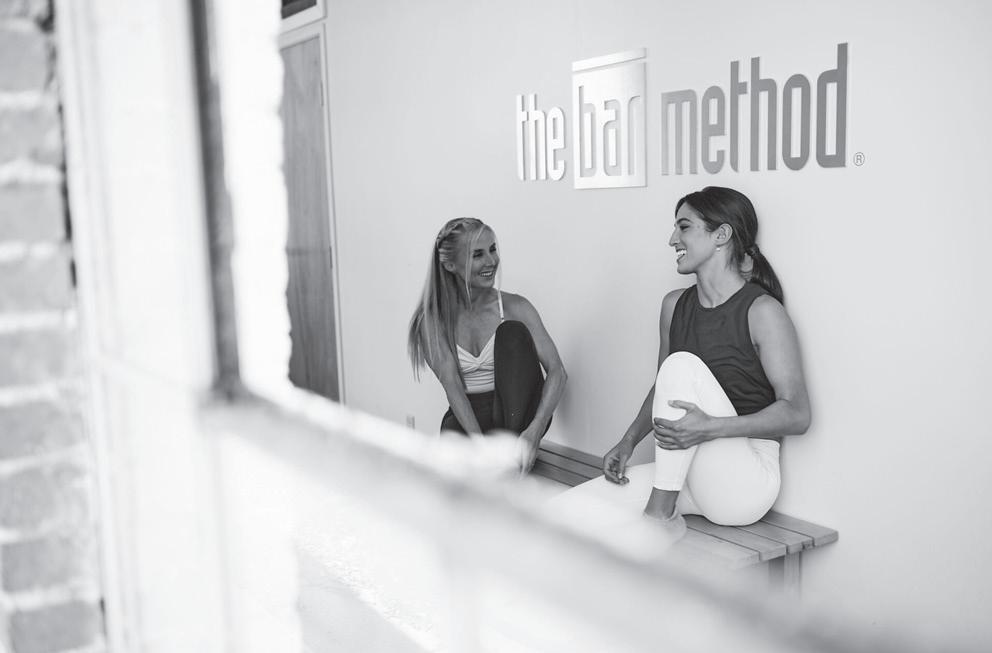
Waxing The City
www.waxingthecity.com
Healthy Contributions
www.healthycontributions.com
Provision Security
www.provisionsecurity.com

INTERVIEW
SEB is using AI to understand people’s motivations for being active
PHOTO: SEB
PHOTO: SEB
provide customers with focused support for their nutritional needs, both virtually and through the app.
I’ll also briefly mention Healthy Contributions, an SEB-owned vehicle that connects us more closely with both corporate wellness and insurance providers offering fitness solutions or incentive programmes. Healthy Contributions is the conduit to manage all of those relationships.
Importantly, it isn’t only for SEB brands: in the US alone, we work with over 17,000 gyms. We believe you have to be industry- and consumer-first – over and above yourself – because really, the competition in the market isn’t other brands. It’s the 80 per cent of consumers who don’t currently engage with our sector. We have to do a better job of connecting with them, and helping our partners and friends in the fitness industry to do the same.

What are your goals now for the overall SEB business?
I can be very clear on this. In Anytime Fitness we have the largest, most global health club brand in the world. We will also have the largest, most global studio brands in the world.
Within the next five years, we want to get to 10,000 units globally. Some of this will happen organically through the brands we already have, the rest through acquisition. I imagine it will be an 80/20 split again, with about 80 per cent of our growth coming from our current brands and about 20 per cent from new acquisitions we bring on-board.
We'll also continue to be part of the International Franchise Association, where I sit on the board. We’ll continue to be involved in driving legislation to make sure franchising is supported across the world – not only our businesses, or even just the fitness and wellness industry, but all franchise businesses. We’re very focused on reinforcing what good franchising is all about, making sure best practice is followed around the world to in turn ensure the industry of franchising is strong and well.
Longer-term, we’ve set out a goal to impact 100 million people around the world; I’d estimate that we’ve impacted around 20 million so far. This isn’t just about current members. It’s about all the people who have, at some point, engaged with us, been active with us, felt we’ve made a difference to their lives.
What drives you personally?
It’s watching people evolve – watching our team and franchisees grow and feel they’re making a difference in the world.
I always tell people: the greatest stories in the world are the ones you haven’t heard yet, the stories as yet untold of the impact you’re having on people’s lives. That’s what drives me: all those stories yet to be told. l
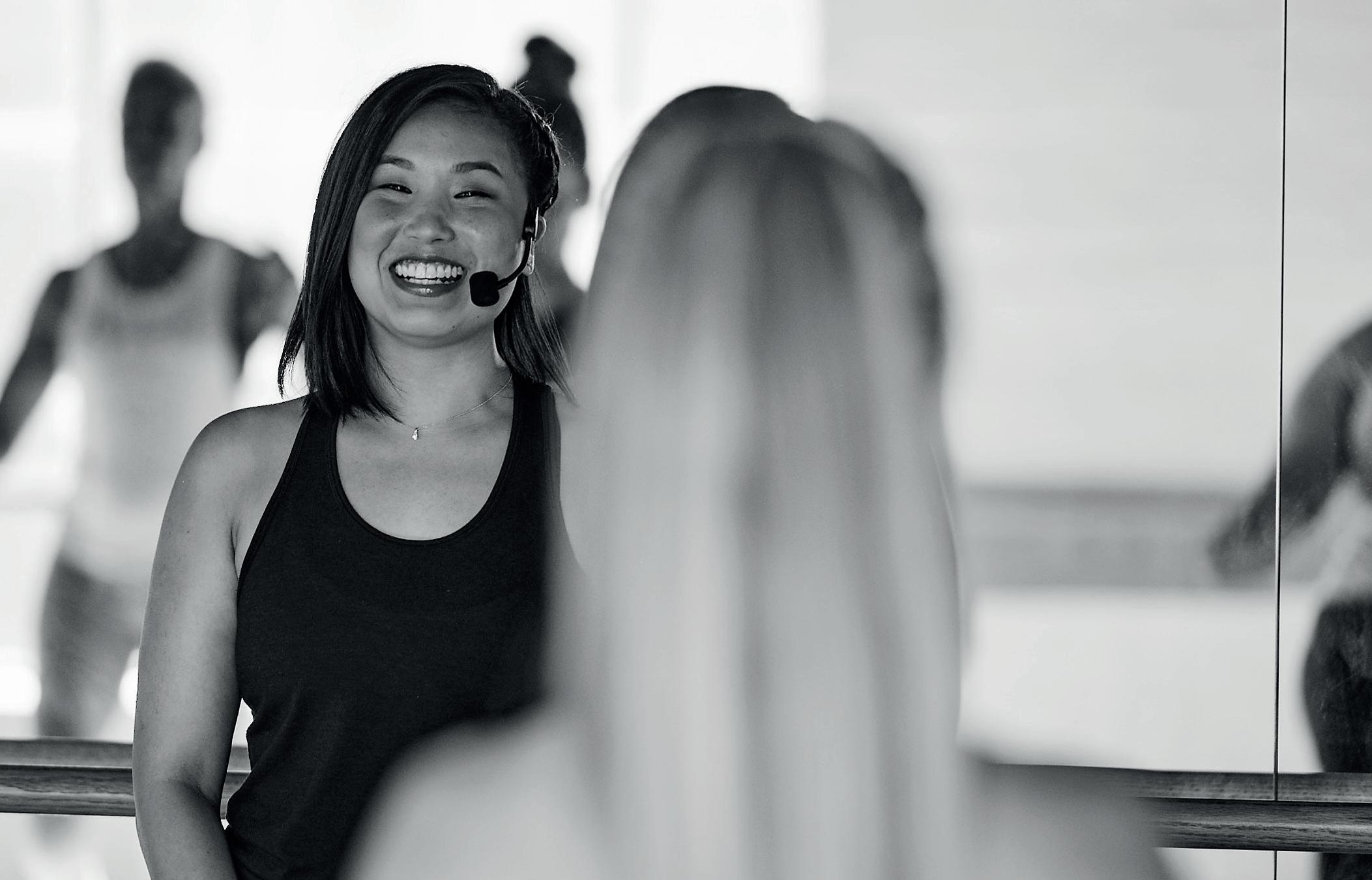
39 ©Cybertrek 2023 Issue 7 2023
We’re working on tracking happiness scores, as well as providing members with a personal health score they can easily understand as they grow on their health and wellness journey
The Bar Method will be scaled in non-US markets PHOTO: SEB
Recovery Everyone’s talking about
Since Will Ahmed – founder of high-end wearable, Whoop – named strain as a key metric, interest has been growing in the principles of balancing strain with recovery to achieve optimal outcomes.
Kath Hudson asks the experts how to avoid members overtraining
Exercise isn’t universally good for us, it’s the recovery that happens aftewards that is
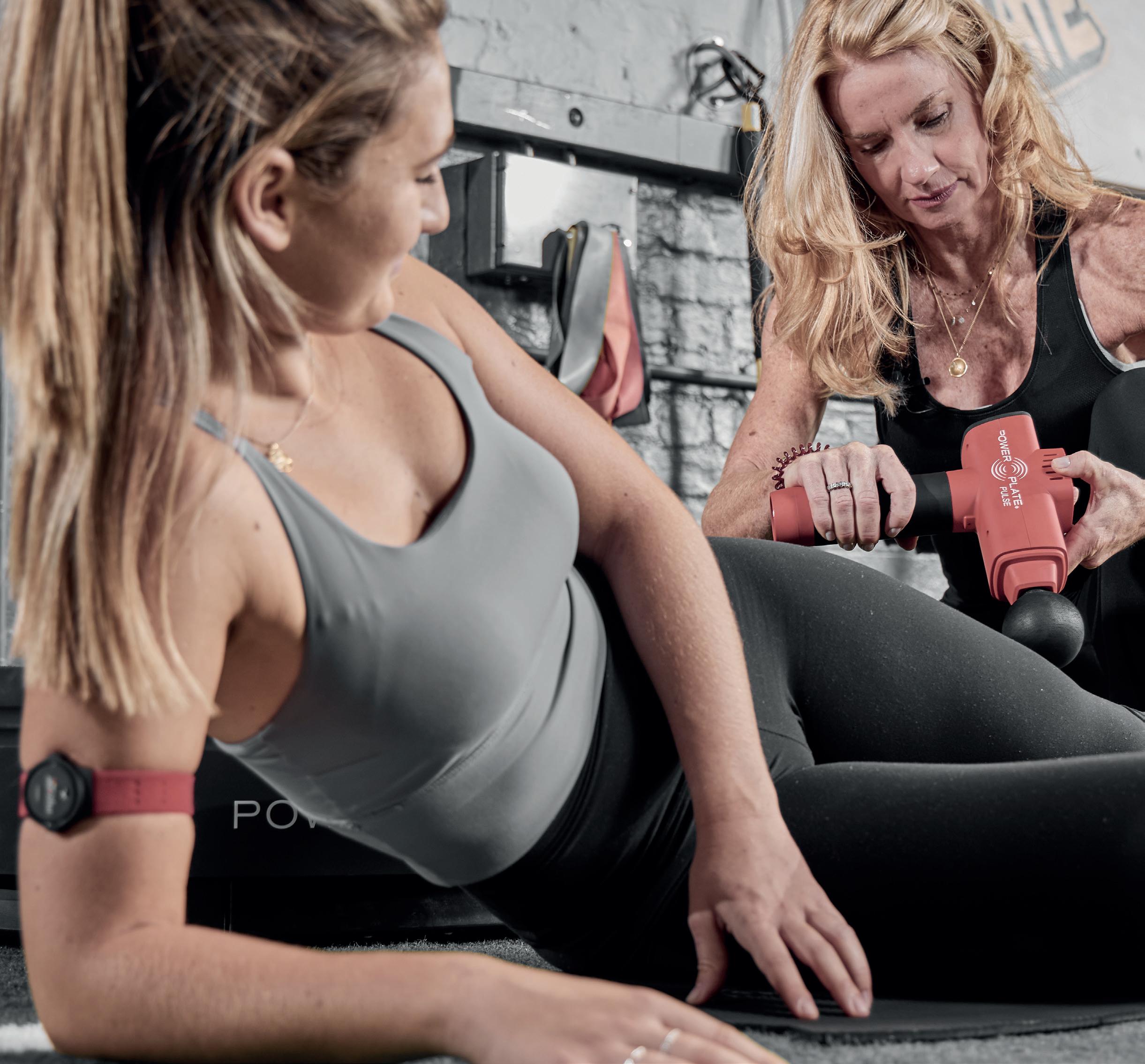
TALKING POINT 40 Issue 7 2023 ©Cybertrek 2023
PHOTO: POWERPLATE
Oli Patrick Physiologist & co-founder Future Practice
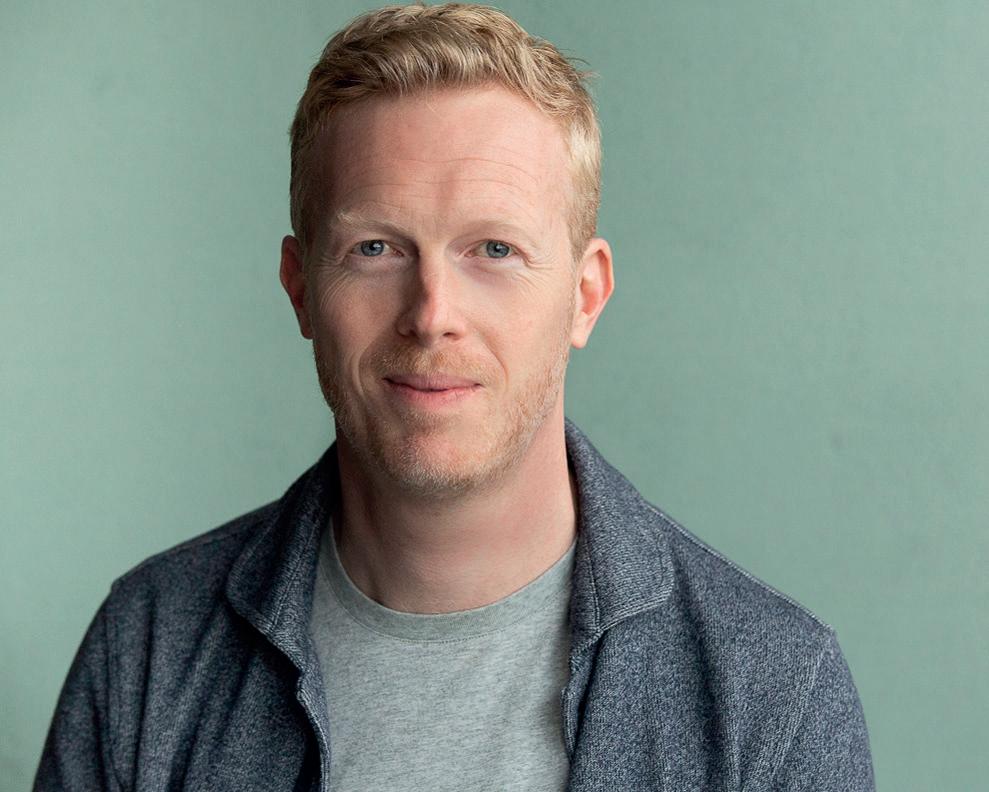
From the 24-hour news cycle to the constant stimulation, we’re now living in an anxiogenic environment with the majority of people spending inadequate time recouping their energy.
The modern-day habit of filling downtime with stimulus leads to many disengaging from their ability to unwind. This leads to a number of issues upstream, starting with sleep problems, which then lead to a compromised immune system, brain fog, mood swings and less energy.
For fitness professionals to add training load to an already physiologically-stressed system is woefully ignorant. To create physiological damage and simply hope it will turn up as a positive is a 1980s mindset. Knowing what we do today about strain and recovery, the industry has to educate the consumer on when is the time to push and when is the time to pull.
As an industry, we have a duty of care to bring in training recovery. It’s not on many people’s radar at the moment, but it’s the key to unlocking good results.
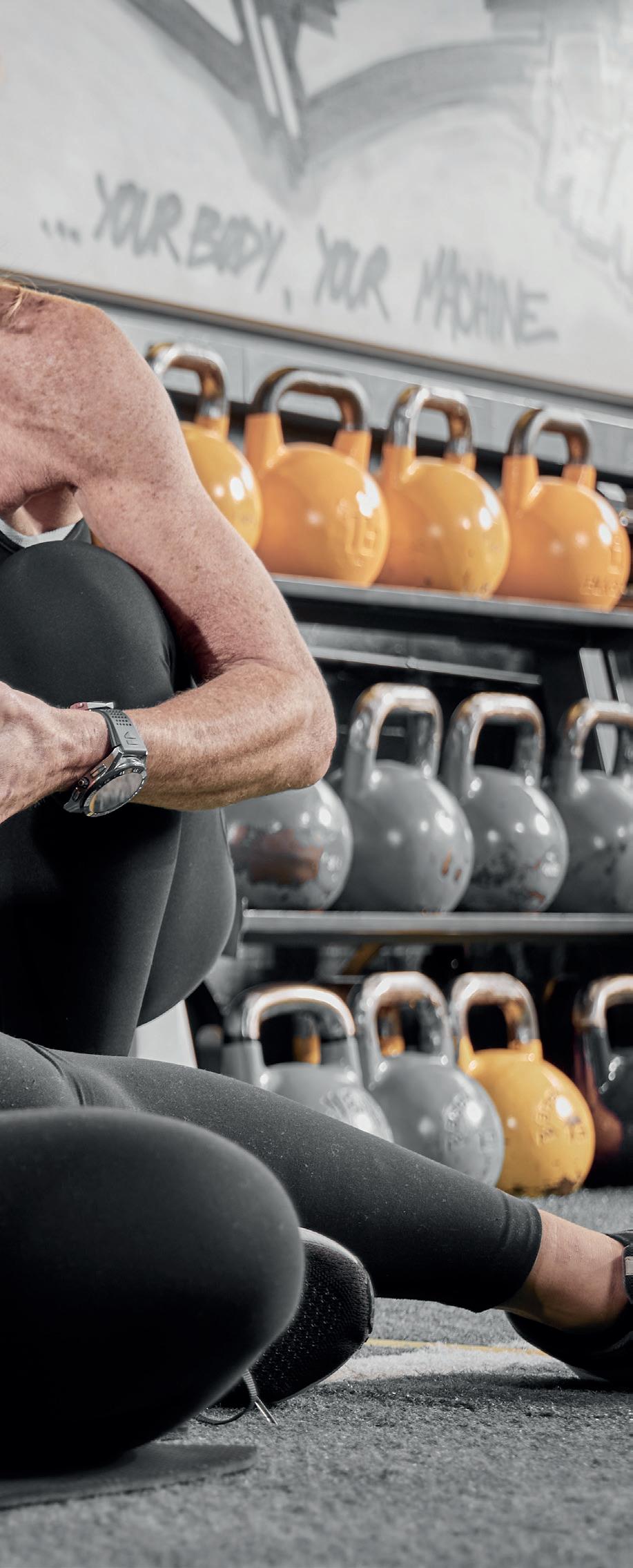
Exercise creates physiological damage: a controlled level of stress
which allows the body to break down and rebuild to a heightened level.
Execise isn’t universally good for us, it’s the recovery systems that swing into action after exercise which are universally good for us. By this I mean the physiological systems which restore energy – that might mean doing very low intensity movement, breath-mediated exercise modalities, taking an infrared sauna, sleeping or walking in nature. Time for us to repair, to grow, to adapt.
Age and life-stage has a bearing on how much to train and the length of recovery time needed. People in their 20s are resilient: humans are designed for prolonged stress with limited recovery at that age. But those in their 30s, 40s and 50s, with multi-factorial demands of life and work, are vulnerable to overtraining. This can be identified via heart rate variability technologies, or if the first morning heart rate is eight to 10 beats higher than baseline.
Over time, a lack of progress or a regression would also suggest overtraining. As does the individual’s available energy, including their physical energy: whether they’re able to wake up and get going without caffeine; the energy they have available to work out; their mental energy and clarity of thought and their emotional energy to sustain relationships. Reduced interest in other people might be an early sign of being under-recovered.
Although heart rate variability trackers can give us a cue, they don’t have a 360-degree view. For example, a tracker might tell you not to go and play padel with your friend, but it doesn’t measure what an emotional uplift you might get by seeing that friend, which could restore you for the next few weeks. It’s up to the industry to coach people on how to make that call, using data as an aid, not a script and bringing recovery to the front of service-level delivery.
41 ©Cybertrek 2023 Issue 7 2023
Knowing what we do today about strain and recovery, the industry has to educate the consumer on when is the time to push and when is the time to pull
A lack of progress or regression could suggest overtraining, says Patrick
PHOTO: MICHAEL SHELFORD
Anna Bogdanova Founder
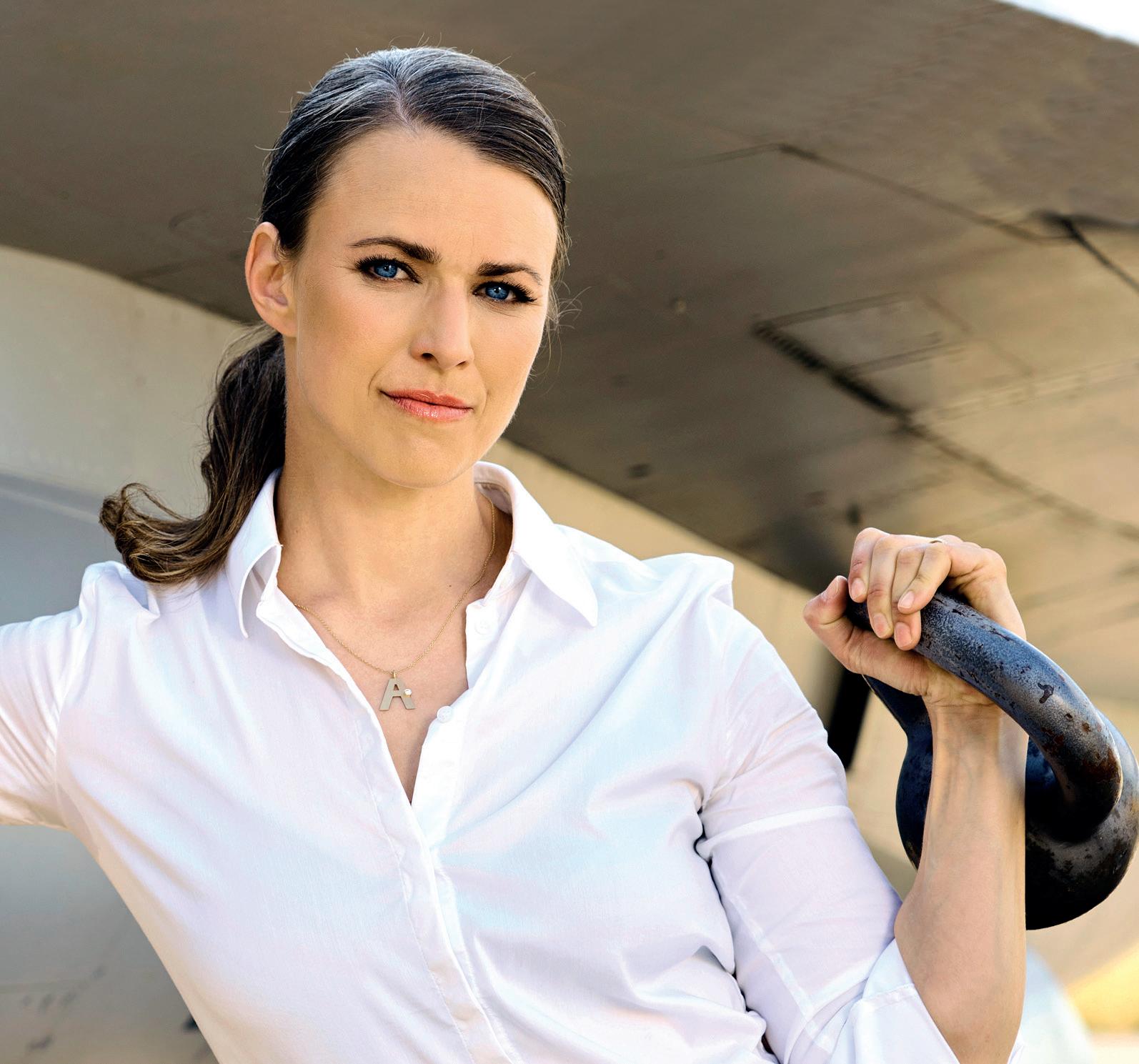
While exercise is one of the best coping strategies in stressful times, it’s important to get the dose right. Our nervous system responds to the sum of all of the different stressors in life, so we need to consider the load of all our clients’ stressors before we add extra stress with training.
Exercise is like an investment – the benefits come afterwards. Trying to use energy which isn’t available – for example having a bad night’s sleep but trying to do the same workout, or exercising while not eating enough to support your energy needs – will result in breaking down more than building up and performance will slump.

Stress creates a vicious circle. It raises cortisol levels, which often
leads to eating something sweet or calorie dense, which spikes insulin, and when the blood sugar crashes the cycle starts again.
Cortisol is a mobilising hormone, which protects the fat stores in favour of using muscle and bone tissue to keep going. But it is just like withdrawing your retirement funds. It can keep you going at an unsustainable pace, until the brain realises you are overspending, and shuts down the overproduction of cortisol and enters protection mode. This leads to going from overdrive to feeling low, lacking in energy; from not being able to eat even when hungry, to feeling hungry even when full; from being proud of running on four to five hours of sleep a night to sleeping all the time. Persisting with the same lifestyle through this will lead to collapse.
The first time I was collapsed with stress, I could only do breathing and sensory exercises and very low volume resistance training (max 25 reps – 5x5 reps for the whole workout), which required minimal energy investment – because if my heart rate went up it triggered my symptoms, as my nervous system
went into alarm that I might start overspending energy again.
Stress is an energy crisis, where we use more energy than is available to us. One of the best recovery strategies I know of is brain-based strength training. A combination of neuroflows – sensory exercises reconnecting brain and body, working with vision, balance, smell, reflexive stability, stimulating the cranial nerve and vagus nerve – to quickly switch from the sympathetic nervous system to parasympathetic state. This creates a feeling of safety in the nervous system and allows you to take the brakes off your body.
TALKING POINT
The 5: the Anna Bogdanova Strength Method
Exercise is like an investment – the benefits come afterwards
Bogdanova says fitness pros should study stress physiology
PHOTO: JAKOB HELBIG
Two kinds of strength exercises are also helpful: complex whole body movement, with low reps and heavy resistance and ballistic exercises. Also, low reps, as these turn the power back on and make the muscles insulin-sensitive again to solve the energy crisis.
During times of stress the brain/ muscle signal is low, so it can be hard to engage the muscle mass required. For this reason it’s important to start very low and build up very slowly, maybe just one heavier rep at a time.
It’s worth exercise professionals educating themselves in the field of stress physiology and how different types of exercise programming create different stress responses in different environments. Think of exercise as a modulator of the neuroimmunoendocrine system that creates a domino effect, rather than a tool for calorie burning.
Encourage clients to listen to their bodies. Scale exercise down to what they don’t have to fear and treat it as a spice rather than a meal, something that can be used in small quantities through the day.
ABOUT WHOOP STRAIN
Whoop is a fitness and health wrist wearable that gives 24/7 health monitoring.
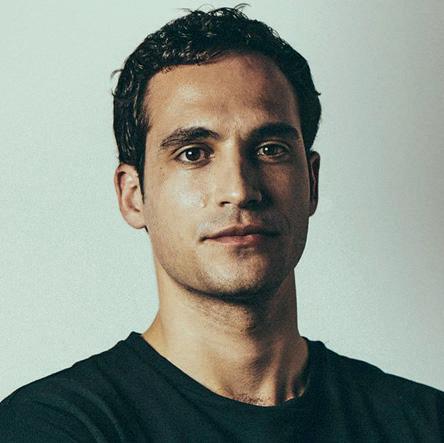
The company has brought the concept of strain to the market to describe the overall stress of living on the body.
Whoop strain is a measure of cardiovascular and muscular exertion that quantifies the amount of physical and mental stress on the body day in, day out, so exercise can be prescribed that accommodates how the body is at that time.
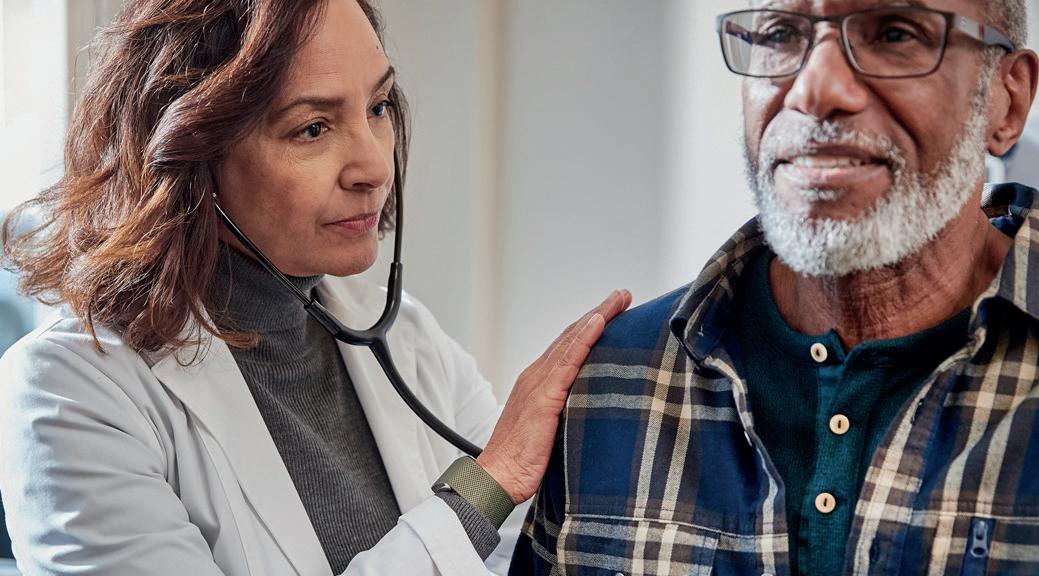
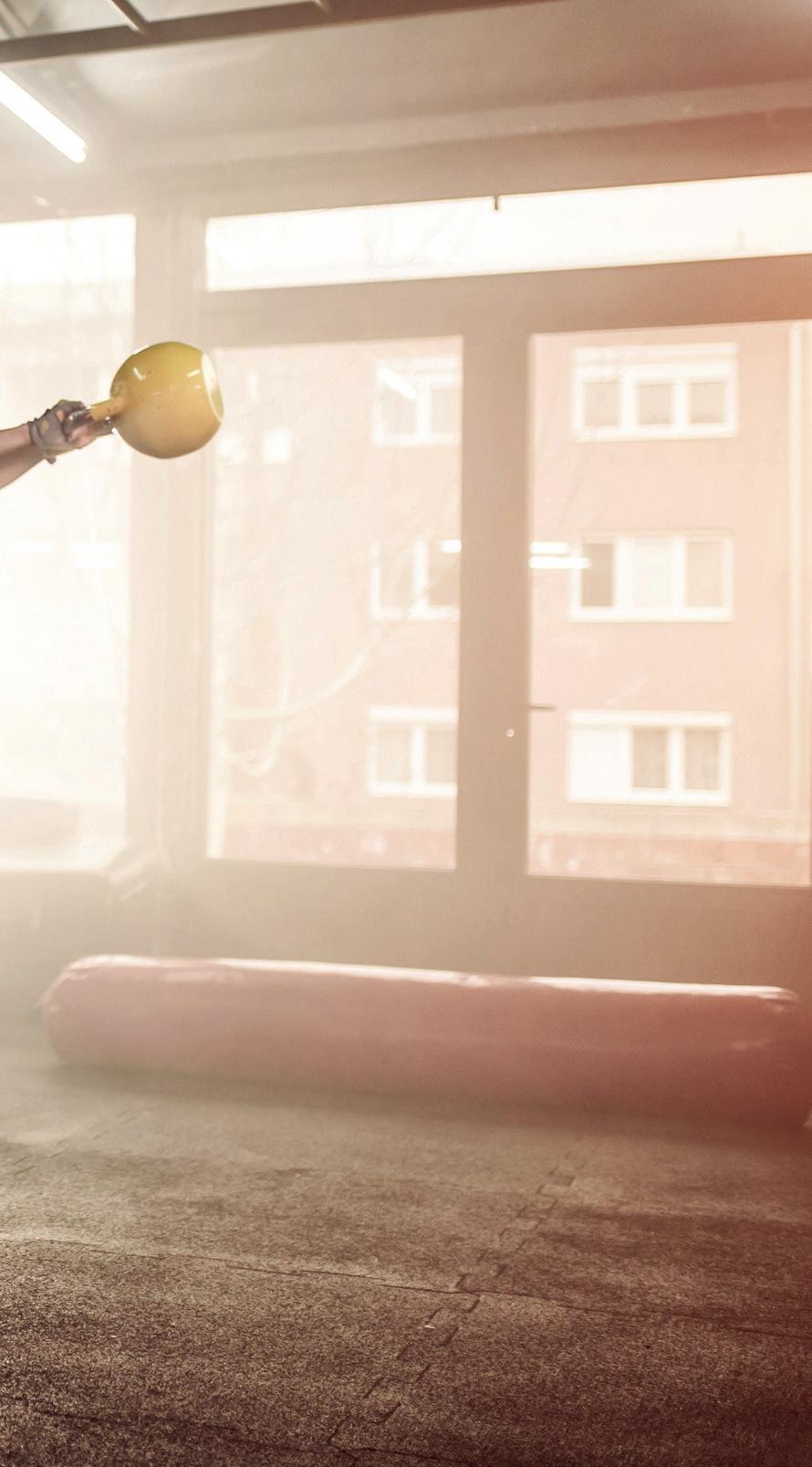
The aim is to exercise optimally for the body, taking into account all aspects of life and to ensure adequate recovery time.
Whoop tracks strain on a 0-21 scale, for the entire day and for specific workouts and activities. Regular daily activities such as work, commuting and parenting can also cause strain, as can stress, anxiety, excitement, or feeling nervous.
Inspired by Borg’s Rating of Perceived Exertion (www.hcmmag.com/borg), strain numbers can be loosely broken down as light, moderate, high and ‘all out’.
n LIGHT (0-9): Minimal stress on the body, leaving room for active recovery
n MODERATE (10-13): Moderate stress on the body, good for maintaining fitness
n HIGH (14-17): Increased stress and activity level, ideal for making fitness gains when training
n ALL OUT (18-21): Significant stress, often overreaching, likely very difficult to recover from the next day
Whoop measures strain based on both cardiovascular and muscular load. Cardiovascular strain is measured via the heart rate on a 24 hour basis – the higher the heart rate gets and the longer it stays elevated, the more strain – from stress or exercise – is accumulated.
Whoop tracks weights, reps and sets during workouts to understand the demands on the musculoskeletal system. Whoop then combines these results to give one complete strain score.
43 ©Cybertrek 2023 Issue 7 2023
Will Ahmed
The Whoop wearable tracks life strain on a 0-21 scale
During times of stress the brain/muscle signal is low, so it can be hard to engage the muscle mass requied
PHOTO: SHUTTERSTOCK/ NELIC
PHOTO: WHOOP
PHOTO: WHOOP
Encourage clients to monitor their training load, either with training logs or performance trackers
Dr Erin Nitschke

Health and exercise
professional and nutrition specialist
American Council on Exercise
Even recreational athletes are at risk of overtraining, especially if they want quick results or have a goal in mind. It’s the trainers’ job to help them establish a balanced programme with gradual progression and to learn to listen to their body – looking for red flags such as sleeping problems, reduced performance or a low HRV score.
Adequate rest should be built into the programme, prioritising sleep, rest days and recovery activities such as stretching, foam rolling, massage, or contrast therapy.
Encourage clients to monitor their training load, either with training logs or performance trackers. Heart rate variability (HRV) trackers are often used as an indicator of the body’s autonomic nervous system activity and overall stress response. A decrease in HRV or a consistent low HRV score may suggest excessive stress and overtraining.
In times of stress, drinking alcohol is frequently used as a coping strategy and while moderate alcohol consumption, in the absence of exercise, does not typically have significant negative effects on
the average healthy adult, it can impact athletic performance by interfering with muscle recovery, causing dehydration, having a negative impact on sleep, impairing cognitive function, slowing down the recovery process and reducing strength, power and endurance.
Inadequate sleep can also slow down recovery and decrease performance in terms of cognitive function, reduced strength, power, endurance and speed. It can also suppress the immune system, increase the risk of injuries and lower mood.
To optimise performance, it’s important to prioritise sleep and establish healthy sleep habits, aiming for seven to nine hours of quality sleep each night.
When a personal trainer suspects a client may be experiencing overtraining, or are at risk of it, it’s important to have open and supportive communication, with empathy, understanding and a focus on the client’s wellbeing. Create an environment where they feel heard and supported without judgment. Provide them with information about overtraining, its signs and symptoms,
signs and symptoms of overtraining’
and the potential negative effects on their performance and overall wellbeing. Help them understand the importance of balancing training (strain) and recovery.
Regularly checking-in with clients about their training, recovery and any signs of decreased performance they’ve noticed is vital. Encourage them to share any concerns or difficulties they encounter. Keep track of their training volume, intensity and progress by regularly reviewing their training logs and assessing whether they may be pushing themselves too hard or experiencing a plateau in progress, despite increased effort. Enquire about their lifestyle factors outside training, such as sleep patterns, stress levels, nutrition and work-life balance.
If you suspect your client is at risk of overtraining, adjust their training programme accordingly, and introduce active recovery sessions, mobility work, or stress-reducing activities into their routine.
44 Issue 7 2023 ©Cybertrek 2023
clients information about the
Nitschke: ‘Give
TALKING POINT
PHOTO: AMERICAN COUNCIL ON EXERCISE
Exercise and stroke risk
Dr Susil Pallikadavath, NIHR Academic Clinical Fellow in Cardiology at the University of Leicester explains the findings of his research into competitive endurance events and stroke risk

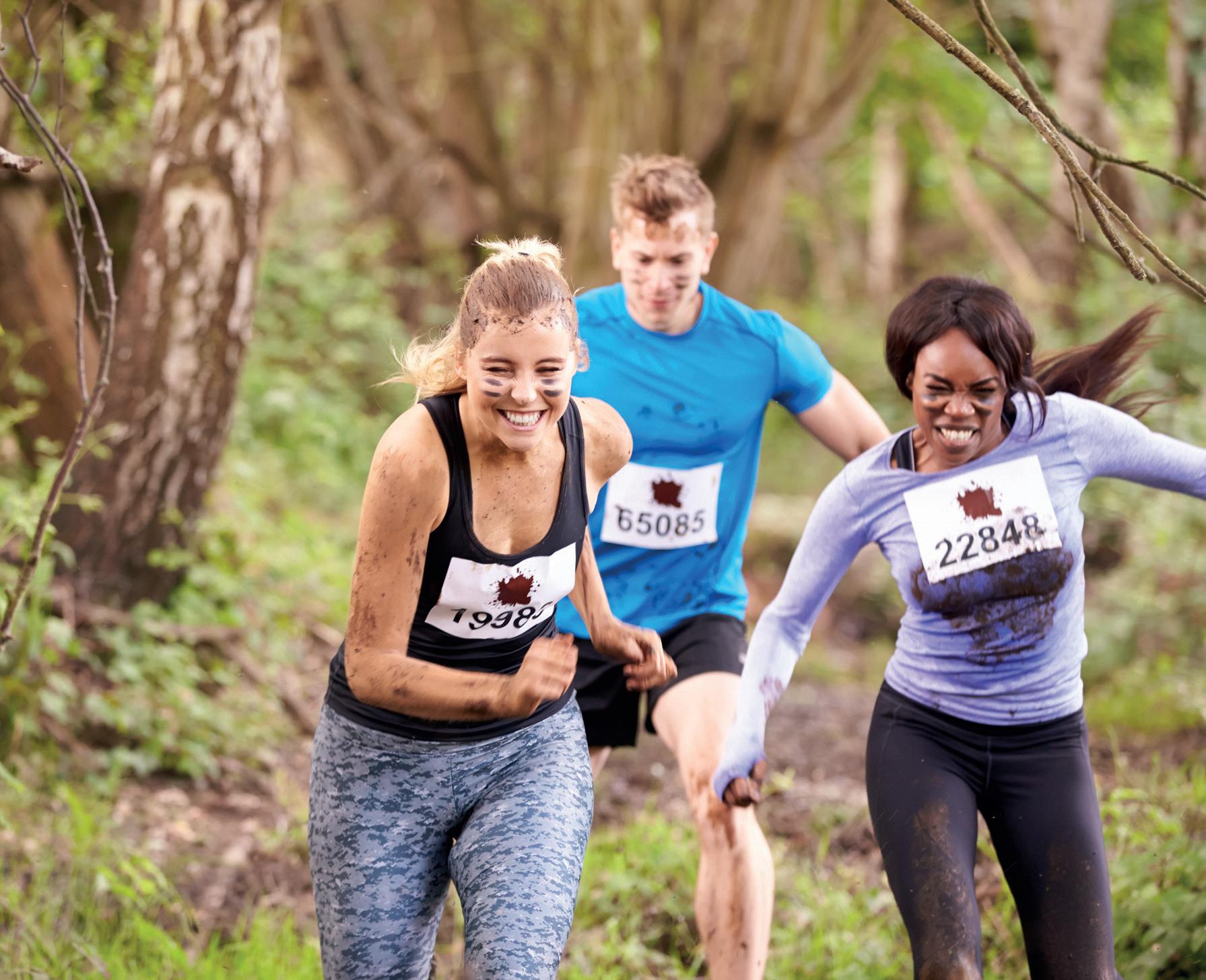
The AFLETES Study: Atrial fibrillation in veteran athletes and the risk of stroke, studied a sample of more than 1,000 individuals, from 41 countries, who had competed in more than one competitive endurance event and were over the age of 40. It revealed that participating in competitive endurance exercise seems to be associated with an increased risk of developing an irregular heart rhythm – atrial fibrillation (AF).
Often, athletes will have a low risk score because exercise lowers many cardiovascular risk factors. However, they also have larger hearts
and slower heart rates. This may mean that we do not capture their true risk of developing a stroke.
Our study showed that athletes with atrial fibrillation seem to be at an increased risk of stroke, even if their risk score was low. Of the respondents, 190 (20 per cent) reported AF and 26 (3 per cent) had had a stroke, of which 14 (54 per cent) had AF. This is early data, but something that we are looking into further.
In many people, AF will not cause any symptoms and may be picked up incidentally by an ECG or sports watch. Usually, this rhythm does not
cause problems in itself. However, it can cause blood to pool and clot. This can later travel up to the brain and cause a stroke. We treat this by offering individuals blood thinning medications and decide who to offer blood thinners to, based on a clinical risk score which takes into account factors such as blood pressure and diabetes.
It’s important to state that the benefits of exercise far outweigh the risks and we do not recommend that any individuals stop exercising based on this study alone. However, it’s important for fitness professionals to recommend to clients that if they have any concerns about their heart, or experience symptoms such as palpitations or chest pain when exercising then they should seek medical attention. l
Dr Susil Pallikadavath is lead researcher on The AFLETES study
TALKING POINT 45 ©Cybertrek 2023 Issue 7 2023
The stroke study examined people competing in endurance events
Dr Susil Pallikadavath
PHOTO: SHUTTERSTOCK/ MONKEY BUSINESS IMAGES
PHOTO: UNIVERSITY OF LEICESTER
BELONGING The benefits of
Why pay for a health club membership and then not use it? This question has never been answered. Now HCM has joined forces with Active Insight to investigate, as Julie Allen reports
The question of why some people pay for a health club membership they don’t use has perplexed health club operators and market analysts for decades. The matter is especially pertinent today, as the cost of living crisis squeezes disposable incomes around the world.
Liz Terry, editor of HCM magazine and CEO of Leisure Media Global, has always hypothesised that people must experience tangible benefits from being a member of a health club even if they don’t use it. Why else would they pay?
She believed that, rather than being something the industry should be apologetic about, the whole issue of ‘sleepers’ is something to be researched and better understood, so the health and fitness sector can gain more insight into what motivates customers, as well as identifying the benefits consumers perceive.
Terry says: “I was very keen to see the issue of ‘sleepers’ being thoroughly researched, to explore the possibility that some people feel powerful benefits from identifying as the kind of person who would have a health club membership – even if they didn’t use it – and that having this feeling about themselves has a real value to them.”
Terry believes sleepers are likely to be gaining benefits in the vital areas of self-identity and hopefulness and that they feel mental health and self-esteem benefits from being a member.

“Hopefulness and a feeling of potential and opportunity are hard for some people to find in today’s world,” she said. “But my theory was that having a health club membership can give people the feeling that there is opportunity there if they choose to take it. Even choosing not to go could be giving people a feeling of agency.”
Terry asked HCM ’s longstanding partner, Active Insight (formerly Leisure-net Solutions) to collaborate on a research project explore this topic and seek to understand why members continue to pay for a service they’re not using. The result is a new study – The Active Insight/ HCM Health Club Sleeper Insight Report 2023
About the research
The research was conducted in June 2023 by deploying Active Insight’s consumer insight panel from a national database and representative sample of 250 people.


For the purposes of the research, a lapsed member was defined as a member of a facility

46 Issue 7 2023 ©Cybertrek 2023
RESEARCH
(public or private) who had not attended in the previous three months, but who was still paying for their membership. They were asked to select the reason or reasons that applied to their rationale for paying for membership but not attending.
‘Feel good’ factors
The findings were wide ranging and varied, touching on social factors, personal health factors, payment-related issues and variables relating to personal aspirations.

The highest scoring reason given by consumers for paying for a health club membership while not attending was “so I can go if I want to”, with an average of 23 per cent stating this.
Importantly, 16 per cent said that having a membership simply made them “feel good”, with a further 10 per cent declaring that the social kudos of being a member of a specific club was a major factor in their decision-making process.
47 ©Cybertrek 2023 Issue 7 2023
More men in the survey said just being a member made them ‘feel more active’
Most noticeable between the sexes is how the social status of being a member of a particular club is scored far more highly by men than women
PHOTO: SHUTTERSTOCK / STEVENK
Also, 16 per cent said they paid “because I think it will encourage me to be more active at some point in the future” and a further 11 per cent said that “it will motivate me to exercise, eventually”.
Fitter, healthier and more active
Nearly 9 per cent agreed with the statement ‘I feel fitter just by having the membership” while 8 per cent agreed that “I feel more active just by having the membership,” and 6 per cent agreed that “I feel healthier by just having the membership”.
The threat of losing a place at a popular health club with a membership limit concerns a surprisingly large number of consumers, with 9 per cent saying “my friends are members, so I don’t want to lose my membership” and 10 per cent agreeing with the statement that they continue their membership “to make sure I have a membership available if the club becomes full”.
Other findings showed that 10 per cent had a health reason that was preventing them from attending and 10 per cent were in a contract.
Corporate wellness schemes were a factor, with 6 per cent saying that not attending wasn’t a problem as “I don’t pay for it, it’s a company benefit”, and 7 per cent saying, “I get cheaper life insurance by having [a club membership]”.
Only 13 per cent of the sample did not find any of the research statements relevant to their situation, meaning the vast majority were able to articulate a reason for their non-attendance.
Differences by gender
While there weren’t any noticeable trends regarding age, the data shows us some key differences between genders.
We found 25 per cent of women saying they wanted to keep the option of attendance open “so I can go if I want to”, against 19 per cent of men.
Turning to the question that they believe “it will encourage [me] to be more active at some point”, 19 per cent of women agreed against 11 per cent of men.

The social status of the club was found to be significantly more important to men than women, with 14 per cent of men agreeing on its importance, versus 8 per cent of women. There was common ground between women and men in a key area, with 16 per cent of both sexes agreeing with the statement ‘it feels good to have a membership’.
Turning to the question ‘I feel more active’ when I have a health club membership, men clearly gain
48 Issue 7 2023 ©Cybertrek 2023
RESEARCH
PHOTO: SHUTTERSTOCK / NICOLETA IONESCU
Women perceive value from a membership even if they don’t use it, as it gives them hope
more benefit from being sleepers, with 14 per cent of men agreeing, versus only 6 per cent of women.
In summary, the most noticeable differences between the sexes related to how the social status of being a member of a particular club and the feeling of being more active through simply having a membership was scored far more highly by men than women.
Meanwhile women tend to ‘hope’ for a more active lifestyle and believe they gain mental health benefits from knowing this option is possible for them.

This study has unlocked a new area of research for the physical activity sector and Active Insight and HCM intend to continue to explore this topic, with ongoing insights, to delve more deeply into the psychology of sleepers and how people experience the perceived benefits of belonging to a health club.
Julie Allen is a director at Active Insight
Table 1: Reasons for paying for a health and fitness membership but not attending, by sex
I can go if I want to Women 25%
Men 19%
It feels good to have a membership
Women 16%
Men 16%
Because I think it’ll encourage me to be more active at some point
Women 19%
Men 11%
I feel good about being associated with the club because of the social status
Women 8% Men 14%
I feel more active if I have a health club membership
Women 6% Men 14%
Source: The Active Insight/HCM Health Club Sleeper Insight Report 2023.
Copyright: Active Insight and Cybertrek 2023
49 ©Cybertrek 2023 Issue 7 2023
The threat of losing a place at a popular health club with a membership limit concerns a surprisingly large number of consumers
Table 2:
Reasons given for paying for a health and fitness membership and not attending
So I can go if I want to 23.2%
Because I think it will encourage me to be more active at some point 16.4% It feels good to have a membership 15.6%
Because I think it will motivate me to go eventually
11.2%
To make sure I have a membership available in case it [the club] becomes full 10.4%
I’m currently in a contract 10.4% I have a health reason which prevents me from going at the moment 10.4% I like the social status of being a member at a specific club 10%
My friends are members, so I don’t want to lose my membership
9.2% I feel fitter by just having the membership
8.8% I feel more active just by having the membership
8.4% I get cheaper health insurance by having it
7.2% I feel healthier just having a membership
6.4% I don’t pay, as it’s a company benefit

6.4% None of the above 12.8%
Source: The Active Insight/HCM Health Club Sleeper Insight Report 2023.
Copyright: Active Insight and Cybertrek 2023
RESEARCH
Some people retain their health club membership because their friends are members

PHOTO: SHUTTERSTOCK / DGLIMAGES
Both sexes agree equally with the statement that ‘It feels good to have a membership [even if they don’t use it]
Life lessons ____
We were very conscious that if it didn’t work, we’d be out on our ears
Mark Sesnan
Thirty years ago, when Mark Sesnan conceived the idea of public leisure services being run as charitable trusts everyone said it couldn’t be done. Kath Hudson hears how he and his team made it happen
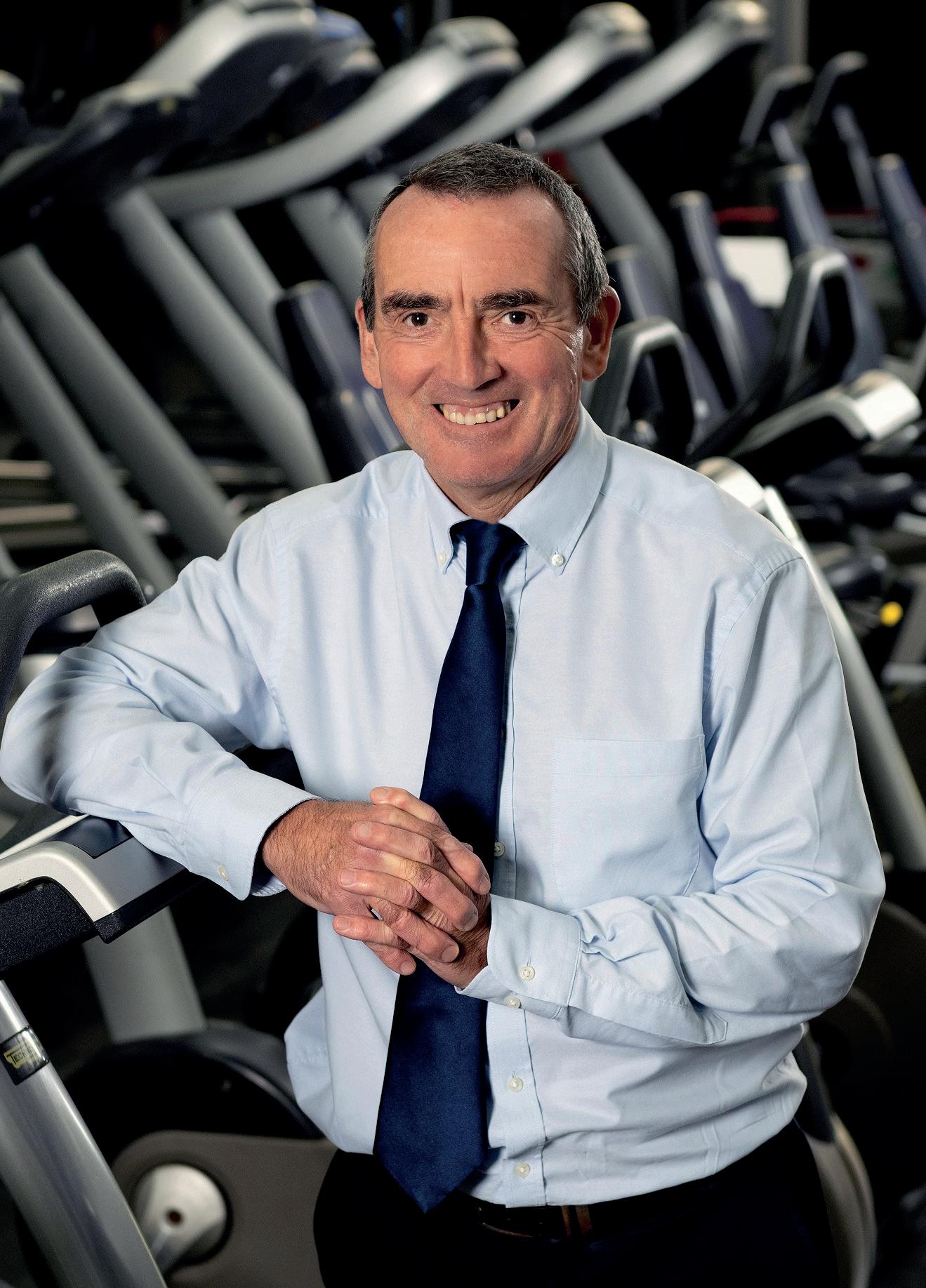
In the early 90s there was a congruence of challenging issues: Compulsory Competitive Tendering had been implemented by the Thatcher government, council’s were facing budget cuts and there was a general push towards privatisation. At Greenwich Council we didn’t want to go down the private contractor, lowest-common-denominator route and thought there must be a better way than cutting services and closing facilities.
At the time no leisure trusts had been spun out of councils in the UK, but we realised that if we were able to operate as a charitable social enterprise it would allow us to pay lower business rates, significantly cutting our costs.

We put the idea to the workforce, the Trade Union and the Labour-run Greenwich Council and everyone liked it, but the legal and financial advisors all said it went against primary legislation and couldn’t be done.
Greenwich council vs the government
Fortunately, the council was in opposition to the government of the time and didn’t support privatisation, so it gave us a six-month deadline to work up a viable business model, figure out the legalities and make the transfer across to the trust. Importantly, we got funding for independent legal advice, which was a game-changer.
TOUGH TIMES
GLL’s Sesnan says their ‘100-year company’ just marked 30 years
PHOTO: GLL
At the time there were many swimming pools run by charities around the country and so we asked the question, if they can
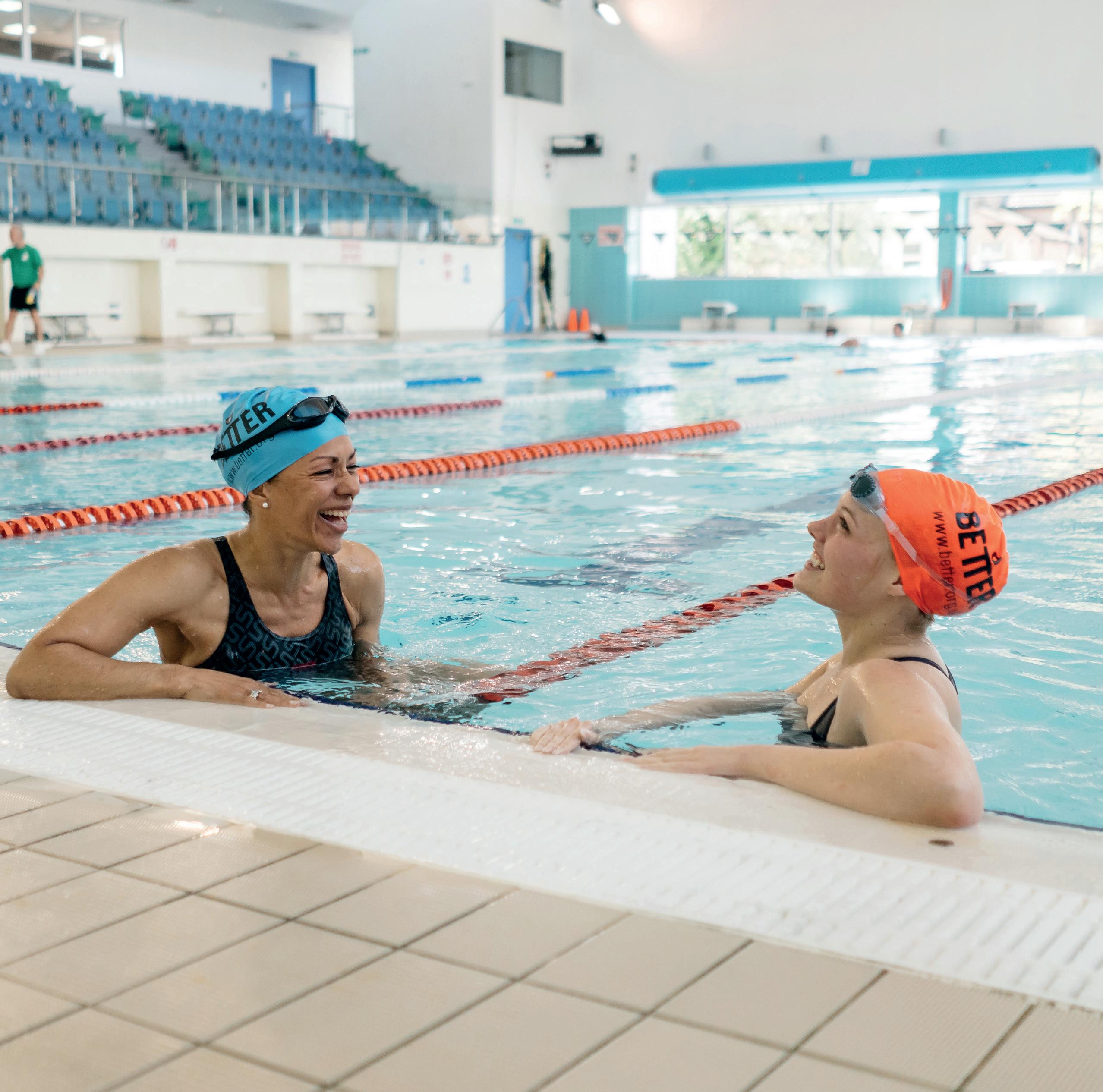
do it why can’t we?
The difference the lawyers identified was that a council couldn’t do it, but if the change to charitable status was instigated by the workforce it would be possible. So GLL was established as a staff-owned co-operative and that’s exactly our structure today. In addition to giving us the required tax status, it means we can never be bought out.
We called ourselves a 100-year company and in July this year we completed the first 30 of those years.
Becoming a trust gave us a huge sense of responsibility. Leaving the council meant losing key support services such as human resources, health and safety, IT, pensions and buildings maintenance
support, so we had to find people to fill all those posts, while starting company bank accounts from scratch, with no money and against the clock – and all our staff had to vote to leap into the unknown. The reward for all of this, of course, was the freedom to be responsible for our own destiny and to act and react in the marketplace.
A time of extreme challenges
Everywhere we turned there were challenges, but to protect the services there was no option other than to make it work. We were very conscious that if it didn’t work, we’d be out on our ears and I knew my career would be over – at least in the short term.
Not only that, there were many vocal naysayers around who couldn’t get their head around the
53 ©Cybertrek 2023 Issue 7 2023
PHOTO: GLL
Sesnan and his team have grown GLL to be the biggest leisure trust in the UK
All our staff had to vote to leap into the unknown
fact that the staff could be trusted to run their own company. Comments such as ‘Putting the kids in charge of the sweetshop’ abounded.
Unwavering belief
At time of transfer there were 10 of us in the top team and it was a steep and harsh learning curve for all of us. We had all come up through leisure services and were still doing our day jobs, but the new pressures meant that we had to acquire a whole new set of skills very rapidly.
The Trade Unions were supportive, as was the council, but its support had to be semi-covert. A year on from the formation of the trust, the [UK government’s] Department for Culture, Media and Sport called in the project to check if it was legally compliant.
This was a really nail-biting time, while we underwent DCMS scrutiny, but their conclusion was that it was a good idea and they were surprised more councils hadn’t done it.
In the end, it worked according to plan, to the extent that we were able to set up our own consultancy called Leisure Partners Limited, to advise the set-up of other leisure trusts.
Now, according to the Sport England Moving Communities insight report, 58 per cent of public leisure centres are run by charitable trusts and we’re pleased – and proud – to have been the pathfinder.

There were many sleepless nights and many lessons were learned, but I wouldn’t have done anything differently. It was really about not taking ‘no’ for an answer when we knew this was the optimum solution. I had to believe in the impossible, believe in myself, surround myself with the best people and believe in them. After that, it was a question of a lot of hard work.
At the time of the formation of GLL, in 1993, we had 110 staff and seven leisure centres. We now have 11,000 staff, 260 leisure centres and 110 libraries, making GLL the biggest such operator in the UK.
More: www.GLL.org

54 Issue 7 2023 ©Cybertrek 2023
TOUGH TIMES
GLL now runs 260 leisure centres and 110 libraries
PHOTO: SHUTTERSTOCK/GROUND PICTURE
Gym Flooring Specialists


Flooring solutions to suit any sporting and fitness space, including:











Impact-resistant rubber tiles in weight training areas.



Sheet rubber and elastic underlays in functional exercise spaces.


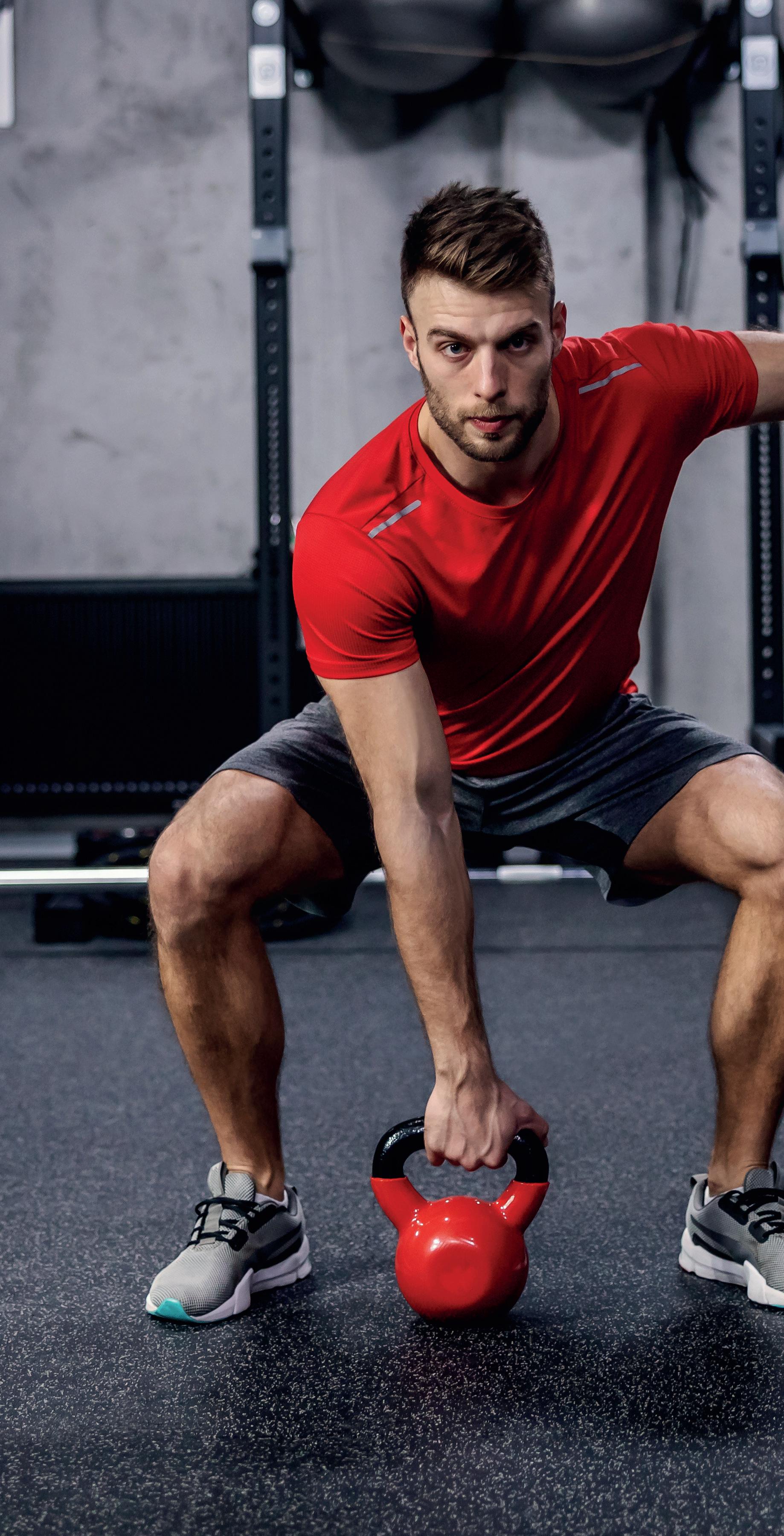
Fully customised sled tracks. Synthetic turfs in multi-functional workout zones.
Hardwood flooring systems in studios.
Seamless polyurethane and vinyl floor coverings.
us now: T: +44 (0)
E: Sales@TVS-Group.co.uk www.TVS-Group.co.uk
Contact
1706 260 220
Project reference: Winchester Sport & Leisure Park. Image: © Hufton+Crow
KNOWLEDGE
Average charges for an adult swim session have topped £5.00 (US$6.45, €5.83) for the first time, as expenditure on swimming and swimming lessons reaches record levels, according to the new State of the UK Swimming Industry Report 2023 from market intelligence outfit, Leisure DB.





The finding bears out industry feedback showing that some operators and consumers are accepting the need to charge more for swimming.
Speaking to HCM recently, Duncan Anderson, CEO of South Downs Leisure, which is managing the new Swim Lanes lido in Brighton UK, explained that swim prices have been adjusted to ‘reflect the true cost of operating a pool’, with rates set at £11 per swim or £50/55/month for membership.
“We needed to charge the correct price at Sea Lanes, to not only fit in with the value proposition of the brand, but also to make it sustainable for the future and to reflect the true cost of operating a pool,” said Anderson.
The right to swim

Speaking to Leisure DB for the new report, GLL founder Mark Sesnan talks about pricing, saying: “Pre-energy crisis, we calculated the actual cost per swim to be around £10,” he says. “Now it’s somewhere between £10 and £15. Meanwhile, we charge customers between £1.00 and £6.00.
“We can’t start charging £10–15 a swim,” says Sesnan. “Swimming is meant to be for everyone. It’s part of the national curriculum. We’re an island nation with a vast inland network of rivers, lakes and canals: it’s important for their safety that everyone can swim.
“We need to wake up and realise that to achieve this, it’s essential that we have good quality pools and a financial model in place that enables public subsidy.”
Freedom Leisure CEO Ivan Horsfall Turner agrees: “Most of the UK’s indoor swimming provision is delivered through the public sector. That’s important to recognise, because you have to look at a public leisure facility as one whole service – a service that delivers physical, mental and social health benefits to local communities, both in the facilities themselves and in the wider local community.
“In that overall service, some products will be higher revenue drivers. Others can and should be subsidised to ensure they are delivered.”
Sesnan adds: “Traditionally, health and fitness was able to subsidise swimming. With pool operating costs rising as they are, that’s no longer possible. Something has to give.

“We’ll be left with fewer pools nationally, and the areas that suffer most will be the areas of deprivation, where there isn’t as much money in the system, and rural areas where there aren’t enough people to justify an intensive programme.”
He concludes: “I believe the future of pools should be much more widely discussed and debated. What is the real need in terms of numbers and types of pools? What should the national provision look like? At GLL we know what works and


INSIGHT 56 Issue 7 2023 ©Cybertrek 2023
Leisure DB has published its State of the UK Swimming Industry Report 2023. Liz Terry looks at some of the key fi ndings
in
St Sidwells Point leisure centre is achieving a 50 per cent saving on water use, a 70 per cent reduction in energy and zero in-use carbon
As an island nation, the UK must have a strategy for swimming say policmakers




57 ©Cybertrek 2023 Issue 7 2023
SHUTTERSTOCK/ROCKSWEEPER
PHOTO:
what is needed, but it’s clear that in many places, councils simply aren’t investing adequately.”
Environmental challenges
Space & Place’s Architects’ Keith Ashton offers a reality check around environmental impact: “There isn’t a sports facility nor swimming pool being designed or built today that isn’t envisaged to still be standing in 2050,” he says. “Yet so much of what our industry is doing right now is not fit for a zero carbon future.
“Across the UK, there are local authorities where over 50 per cent of their total carbon emissions are discharged just through their leisure buildings.
Referencing a recent S&P project – the Passivhaus St Sidwells Point leisure centre in Exeter, UK –that’s achieving a 50 per cent saving on water use, a 70 per cent reduction in energy, and zero in-use carbon, Ashton adds: “This was no ordinary project, yet this approach needs to become ordinary. Quite simply, we must all agree – right now – that sustainability-focused investment today is good for our future.” (www.hcmmag.com/stsidwells).
Leisure DB also reports on the tech that’s making an impact on the swim customer experience, from AI lifeguarding – which is saving on wage bills while mitigating staff shortages –to online bookings and the invaluable data they provide and learn-to-swim-tracking apps.
Government funding for swimming
The UK government’s Swimming Pool Support Fund is providing £60m to local authorities in England with swimming pools:
Phase I - Revenue: £20m is available to support facilities with swimming pools with increased cost pressures. The closing date for applications was 11 August 2023.
Phase II - Capital: £40m will be made available for capital investment to improve the energy efficiency of public facilities with pools in the medium to long term. The launch date for applications is September 2023.
The power of swimming lessons
Minton says swimming lessons have proven pivotal in helping pool operators stay open. “What clearly emerges is a huge opportunity to further optimise pool capacities and revenues, with many operators reconfiguring pools and timetables to accommodate more swimming lessons,” he explains, while Marc Jones from Fitronics says: “Demand for swimming lessons is surging, with a huge backlog of children who couldn’t learn during COVID.”
Everyone Active now has 180,000 learnto-swim students going through its leisure centres every week, while at 1Life, which is now part of Parkwood Leisure, average class levels are at 115–120 per cent of pre-COVID levels.

In the report, 1Life COO Steve Bambury is straight-talking in his view that: “For public leisure centres, swimming is a balancing act. Lessons are where the money is. The rest of the activities, such as casual use and wellness-focused activities, are generally loss leaders.
“With the continued high costs of energy, pool chemicals, staffing and so on, it’s getting to the point that councils – not themselves in a position to financially support us – are willing to allow more flexibility to dedicate more pool hours to lessons, to drive the revenues that ensure pools remain viable and open.”
He adds: “We have to be realistic: having 2,500 kids whose parents pay £30–35 a
INSIGHT
Demand for swimming lessons has surged due to the backlog created by the pandemic
month for swimming lessons is really the only way for our pools to be viable now.”
GLL shows this may not have to be the case for all operators, however, as in spite of its growing lesson provision and revenues, lessons account for just 50 per cent of its pool-side revenues, with casual swim driving an impressive 30 per cent.
Yet almost universally, operators are looking to maximise learn-to-swim revenues, with some best practice coming from Parkwood Leisure. “We’ve introduced online booking for swimming lessons, including a dedicated automated waiting list facility that notifies a parent as soon as a space comes available in class,” says operations director Alex Godfrey. “For every child who joins a class one day sooner, we drive an additional £1 in revenue.”

Biggest operators
In addition to analysing the price of a swim and the economics of swimming lessons, State of the UK Swimming Industry Report 2023 ranks operators by size, identifying Nuffield Health as the UK’s number one
private sector pool operator by number of sites with a pool and GLL in the top spot in the public sector. In the public sector, an average of 51 per cent of all pools in the UK are managed by a trust, with the figure in Scotland the highest at 67 per cent.
Opportunity for innovation
The report identifies opportunities for the sector to increase revenues by adopting growth tactics.
Bethan Laker of The Leisure Experts says: “Currently, the sector lacks the know-how when it comes to turning pool operations into profitable ventures.”
RLSS and Swim England Qualifications board member Helen Bull echoes this, saying: “The industry now needs to do things differently. The current situation reflects a lack of investment and a lack of joined-up action.”
State of pool stock
In spite of concerns about pool closures, the report shows little change in the number of pools operating in the UK, with the total number down only 1.8 per cent in the 12 months to the end of March 2023.
59 ©Cybertrek 2023 Issue 7 2023
Swimming lessons have proven pivotal in helping pool operators stay open
PHOTO: SHUTTERSTOCK/MONKEY BUSINESS
Industry thoughts on pools
“Quite simply, we must all agree – right now – that sustainabilityfocused investment in swimming pools is good for our future”
Keith Ashton S&P

“I believe the future of pools should be much more widely discussed and debated. What is the real need in terms of numbers and types of pools? What should national provision look like?
Mark Sesnan GLL
“You have to look at a public leisure facility as delivering physical, mental and social health benefits to local communities”
Ivan Horsfall Turner Freedom Leisure
“Having 2,500 kids whose parents pay £30–35 a month for swimming lessons is the only way for our pools to be viable now”
Steve Bambury 1Life
“What clearly emerges is a huge opportunity to optimise pool capacities and revenues, with many operators reconfiguring pools and timetables to accommodate more swimming lessons”
David Minton
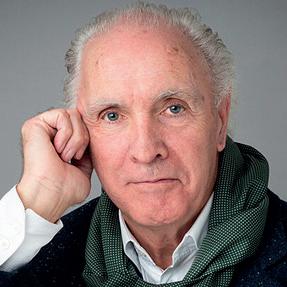
Leisure DB
“The sector lacks the know-how when it comes to turning pool operations into profitable ventures”

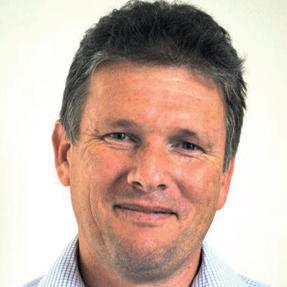

Bethan Laker
The Leisure Experts
This compares to a fall of 5.1 per cent between 2019 and 2022, indicating that operators are finding ways to keep pools open, even with the pressure of energy prices, although the 5.1 per cent included pools that had not yet reopened following lockdowns, but were likely to, so these numbers are not directly comparable.
“What’s surprising in our 2023 figures is that we haven’t seen a more significant decrease in pool numbers,” says Minton. “There’s been less of an overall reduction in pool stock over the past 12 months than in the year directly following COVID. However, “High energy costs will undoubtedly cause more casualties,” warns Minton. “It’s important to note that our figures include pools temporarily closed but slated to re-open and the coming 12 months will be critical, as big decisions are made on the future of pools across the UK.”

State of the UK Swimming Industry Report 2023 also includes a breakdown of pool numbers and regional coverage, openings and closures, public and private sector analysis and commentary on trends. l
More: www.Leisure DB.com/publications for both the full paid-for report and free Spotlight report 15 per cent discount with promo code SWIM15 until 30 September 2023

60 Issue 7 2023 ©Cybertrek 2023
INSIGHT
Casual swims can still make up a good proportion of pool revenue
It’s surprising we haven’t seen a more significant decrease in pool numbers
PHOTO: SHUTTERSTOCK/GROUND PICTURE
WHAT ARE THE STEPS OF OUR REFRESH?



Equipment stripped down
Worn parts replaced
Frame sandblasted
Powder coated in any colour
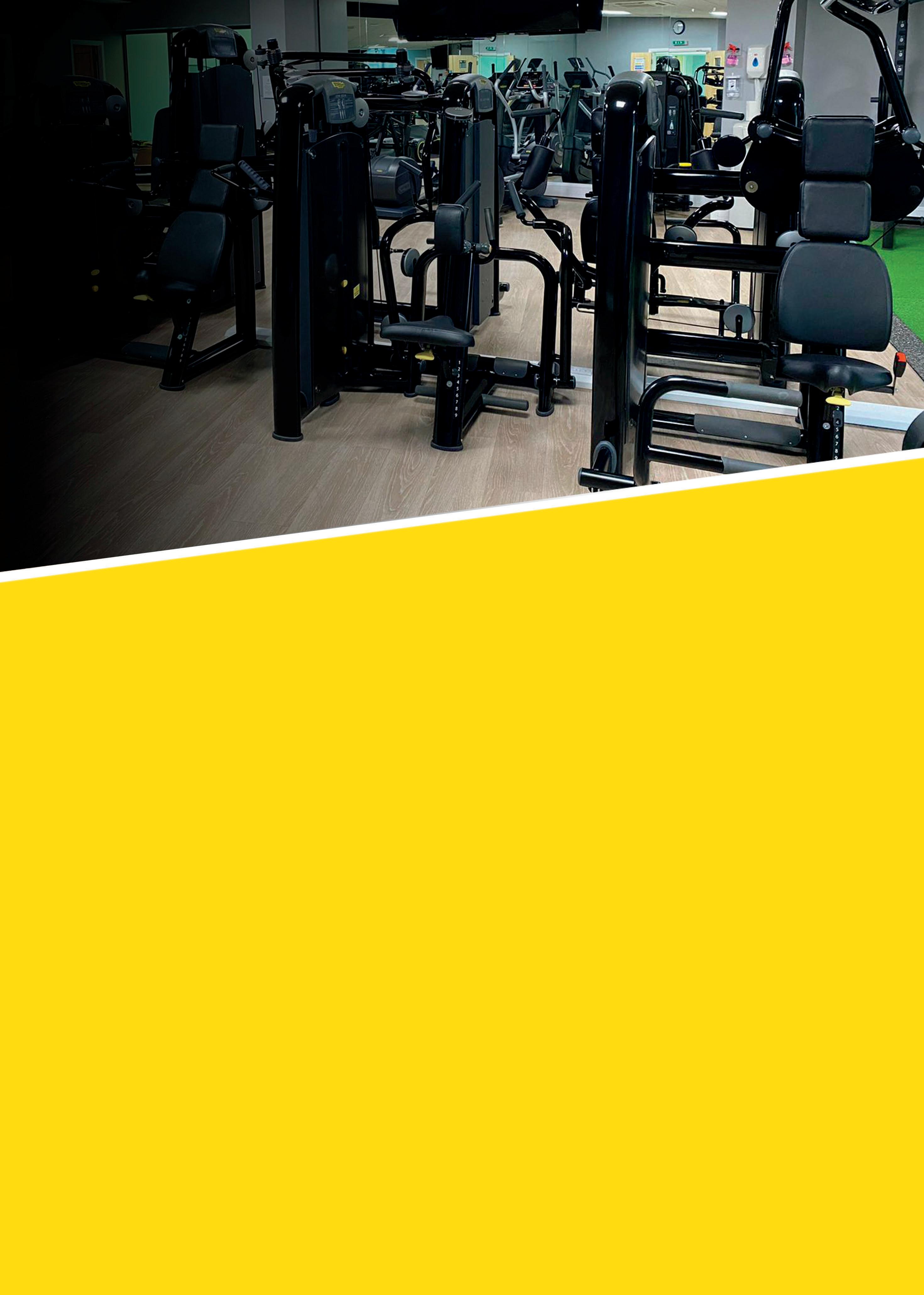
Pads re-upholstered

Equipment rebuilt and tested
Installed on site
12 month warranty for complete peace of mind

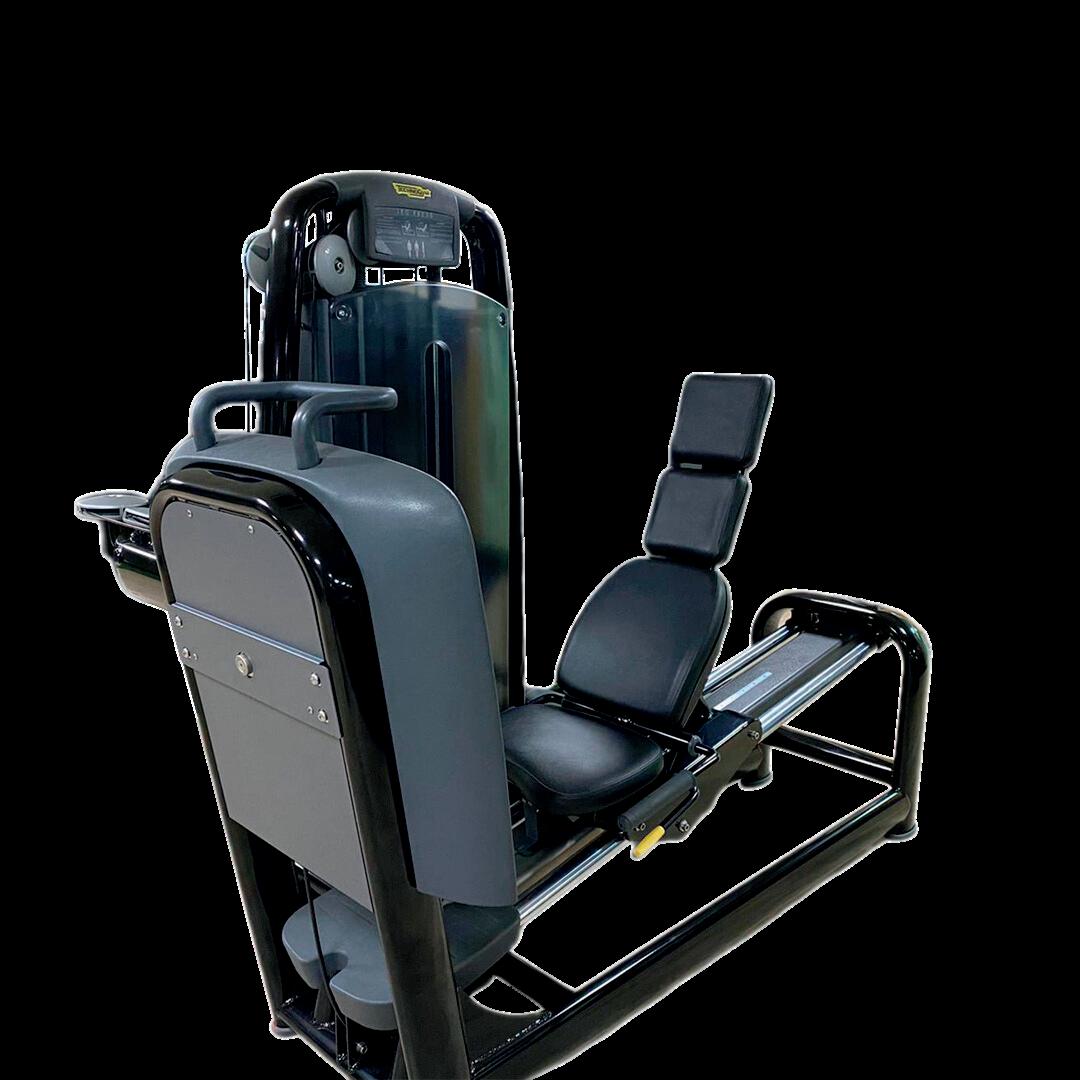
BOOK YOUR REFRESH TODAY

01257 264 738 info@servicesport.co.uk scan the QR codetobook yourrefresh
BEFORE
*Terms and conditions apply. Offer applies to refresh orders placed between 1st September and 30th September 2023.
AFTER

INTERVIEW GLL is the largest social enterprise in the sector, operating 375 facilities across the UK
PHOTO: GLL
You can’t commoditise what is, in essence, a health and wellbeing service
Peter Bundey Mark Sesnan

As GLL celebrates its 30th anniversary, its CEO and its founder look back at key milestones and share the headlines of a new fi ve-year plan, as Kate Cracknell reports
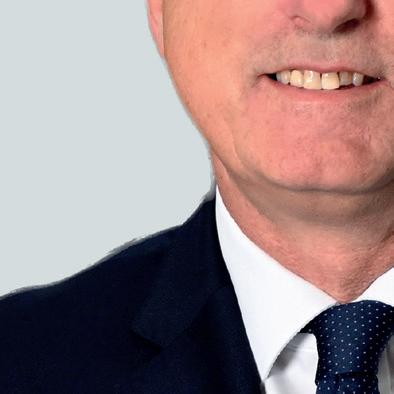

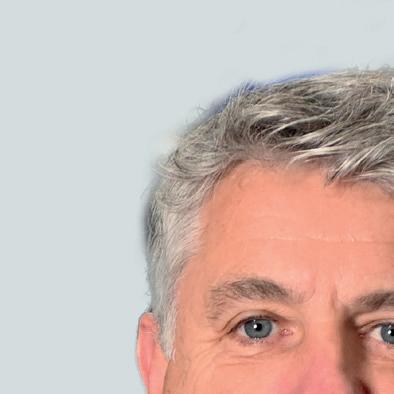
Why was GLL created?


Sesnan: A spin-out from Greenwich Council in 1993, GLL set out to disrupt compulsory competitive tendering (CCT), which was never going to be the solution for the sector.
You can’t commoditise what is, in essence, a health and wellbeing service – something that should exist in the community. It shouldn’t be a thing that people make money out of. It can be monetised, of course, but there has to be a balance.
That’s why local government was running public leisure centres and I supported that; all key GLL people worked for Greenwich Council at the point of transfer.
However, in those days, local government had money and there wasn’t commercial competition. As things changed, we recognised
the need for a new model – one that was able to maximise social and financial outcomes.
With GLL, we set out to create and prove this new model: socially minded but pragmatic, using the toolbox of the private sector to make public community services work better.
Over the last 30 years, we’ve facilitated communities across the UK to run their services better, providing help and support centrally with local teams running services. Our underlying mission has remained the same throughout and it will still be there when I’m gone, because people in the company believe in it: we exist to improve the physical, mental and social wellbeing of local communities.
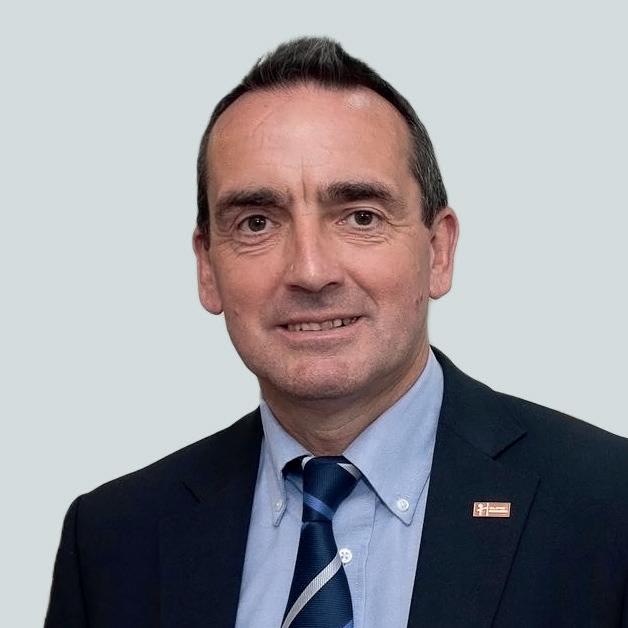
Bundey: We’ve never wanted to be just another company in the marketplace. We set out with a wider set of ambitions and objectives and

63 ©Cybertrek 2023 Issue 7 2023
Peter Bundey
GLL
GLL
PHOTO:
PHOTO:
Mark Sesnan
have always been true to them, seeing social enterprise as a better way of doing business that fits the delivery of public services in particular.
It’s an ethos that’s encapsulated in our Better brand, which as we grew geographically was something our partners embraced: they wanted to support better lives and better communities.
Sesnan: We’ve shown that you don’t need private sector investors, going as far as giving our staff 100 per cent ownership of GLL: one person, one share, one vote. It means everyone is invested in our success. GLL is non-profit distributing – we reinvest all profits into the business – but the governance is owned by the staff and has been for the last 30 years.
It will be for the next 70 if we stay true to our principles, which we intend to. We talk about being a 100-year company; we’re not in it for the short term.
What does the organisation look like now?
Bundey: We’re the largest social enterprise in the sector, operating 375 culture and leisure venues across the UK: 240 leisure facilities, 120 libraries and 15 children’s centres. We work with councils and communities from Belfast to Cardiff, Cumbria to Cornwall, as well as operating our own asset-based estate of around 15 facilities.

INTERVIEW
GLL is the UK’s biggest operator of public sector swimming pools
PHOTO: GLL
We exist to improve the physical, mental and social wellbeing of local communities
Decarbonsing to save money and hit sustainability targets is a priority
Over the years, we’ve also brought in a lot of smaller trusts to become part of the GLL family. We see ourselves as the forerunners of the social enterprise trust movement that has now established strong credibility within public services across the UK. And as the largest organisation in our sector, we believe we have a responsibility to be an exemplar, innovating and working not just to satisfy our customers, staff and clients, but also working and lobbying on behalf of the sector.
That’s something Mark always set out for GLL: the intent to be a collaborative organisation that works beyond what one might normally expect it to do, identifying where it can positively influence the agenda at a national or local government level.
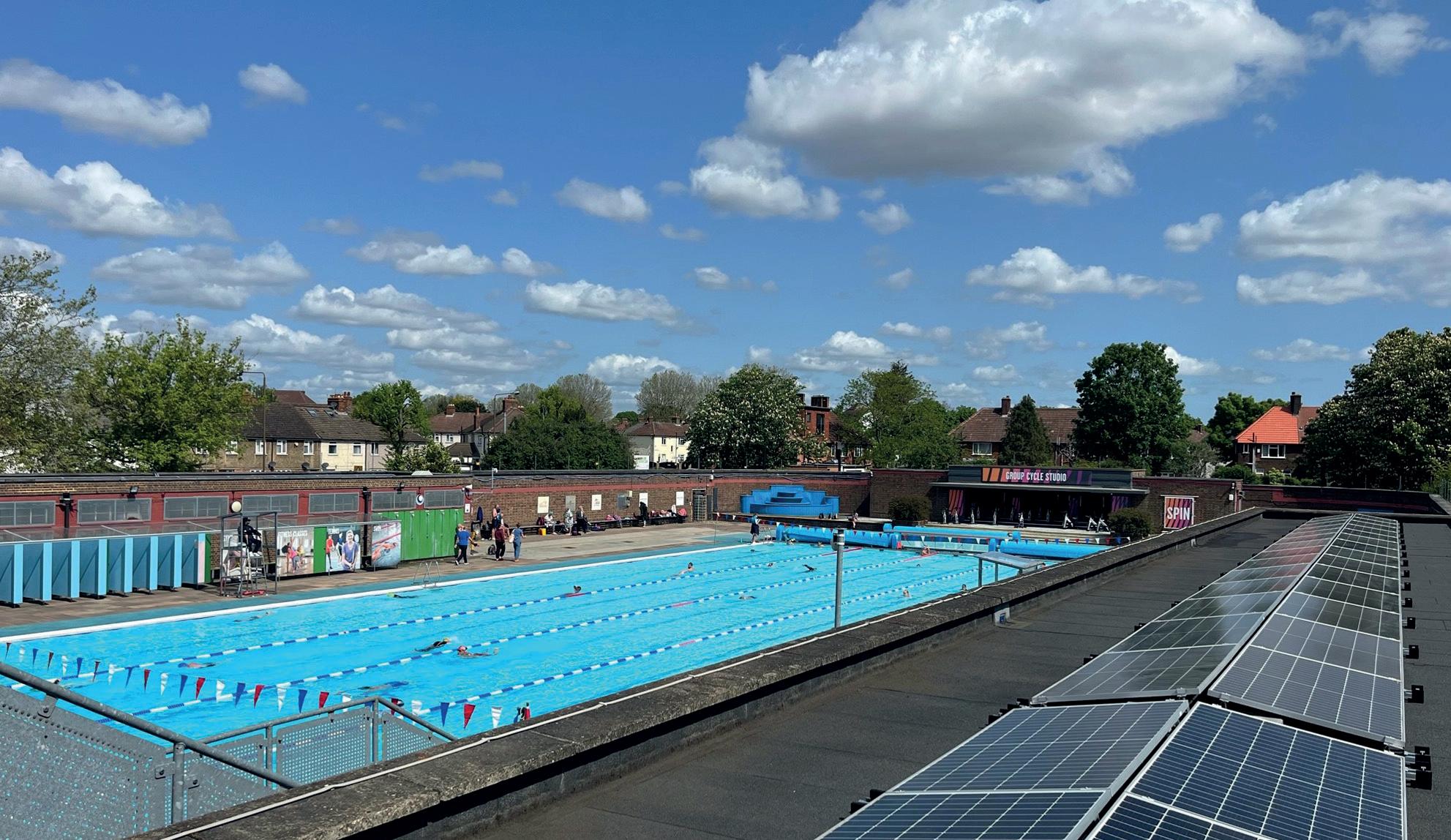
Tell us more about your lobbying.
Bundey: For years, we’ve been pushing to have leisure recognised as a statutory service. I just don’t understand why, with today’s health agenda and pressure on the NHS, that isn’t be the case. We’ll certainly continue to lobby for it until it happens, because if leisure becomes a statutory service, local authorities will have to ensure it’s adequately funded.
Sesnan: Meanwhile, it’s been out of the COVID frying pan and into the fire of the energy crisis for our sector. Having lost £20m off our balance sheet during COVID, GLL was doing OK: we were back to about 80 per cent of our previous

65 ©Cybertrek 2023 Issue 7 2023
PHOTO: GLL
income; the sector generally was at about 65–75 per cent. Whoever you were, though, it certainly wasn’t the best time to find out your second largest cost, after staff, was going to treble almost overnight. For GLL, energy went up from around 10 per cent to about 25 per cent of our costs. Running swimming pools is particularly challenging, because in the UK you can’t run pools without heat. Very roughly, the cost to heat a 25-metre pool has gone up from about £100k to about £250k a year.
Bundey: We lobbied hard to get government help for the sector, campaigning on all fronts to save swimming pools, as operators and local authorities were taken to the brink of affordability. Eventually government said it would give £60m – not a huge amount, but something – yet nobody’s seen a penny of it. Some of the smaller independent pool operators in particular are relying on that funding to keep them afloat. They’ve told the banks it’s coming. It’s been one of the biggest frustrations of the past 12 months.
Sesnan: On a more positive note, I’m proud of the way the health and fitness sector came together through COVID, galvanised by UK Active. Now, coming out of the other side, we’re also seeing collaboration in re-setting the agenda
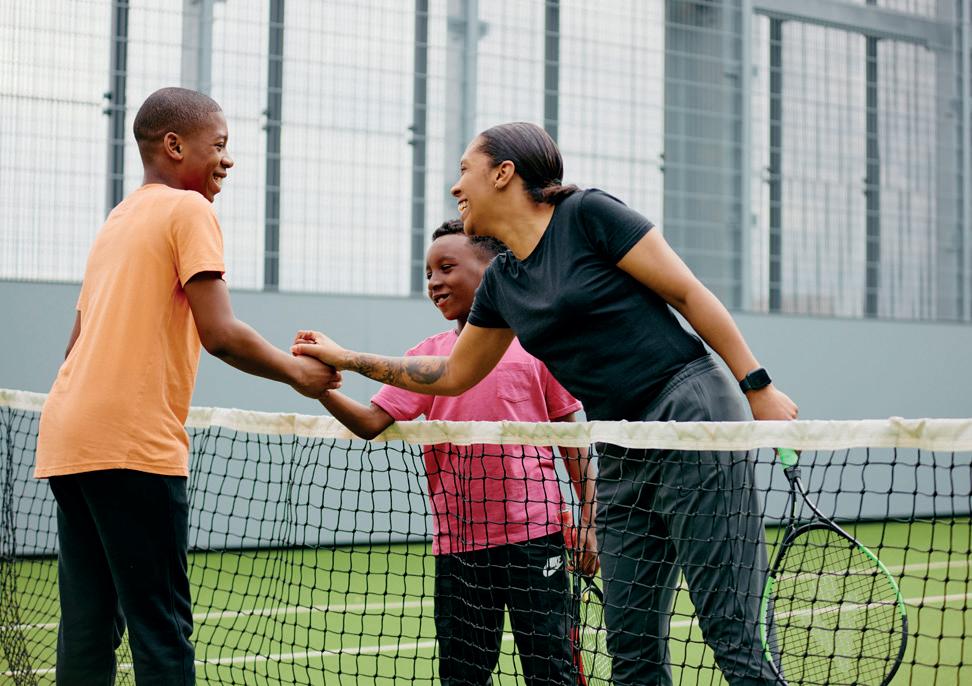

and taking seriously some of the issues around health. Public and private sectors agree on many things: the need to keep facilities open through COVID, to keep them open through the energy crisis and to protect the sector in the long run. Moving forward, though, we need to work harder to galvanise the whole sport and physical activity sector into one powerful voice. We have Sport England, dozens of NGBs, CIMSPA, CLUK, SRA, the Activity Alliance and of course UK Active, to name just a few. What they don’t do is come together and say: ‘We are the sector – this is what we need.’ That’s what’s missing: nobody is doing the whole thing. Bundey: There’s a real need to be collaborative as we look at how we can work within the health agenda, whether that’s prehab or rehab, musculoskeletal issues, Long-
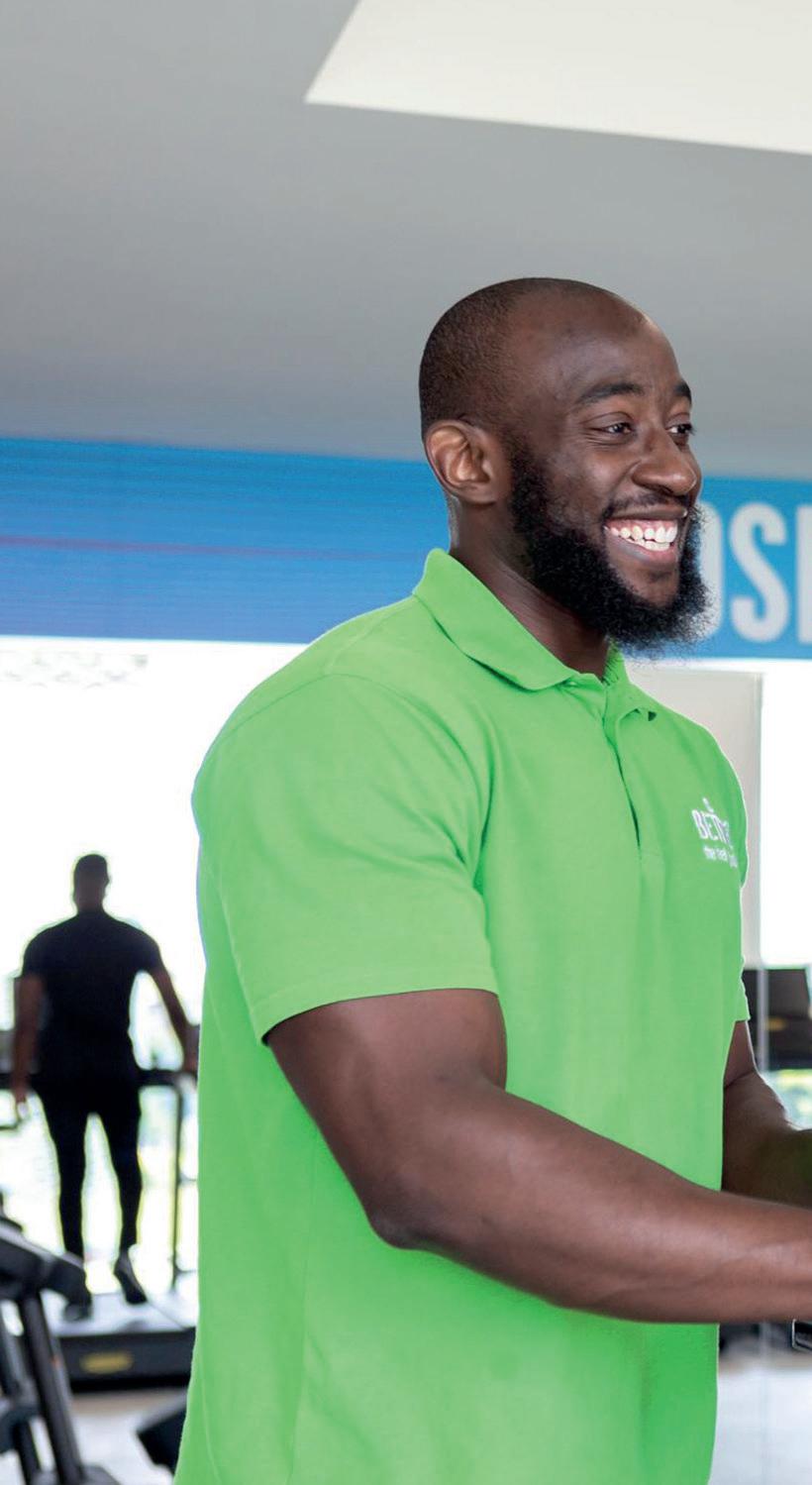
66 Issue 7 2023 ©Cybertrek 2023
INTERVIEW
GLL has just signed a new five-year deal with Technogym
The trust runs leisure centres, libraries and kids’ centres
PHOTOS: GLL
COVID or simply living well and taking the pressure off the NHS. At GLL, we’re certainly already working on hubs and programmes that we can deliver outside a clinical setting.
As a sector, we simply have to ensure people understand the value of what we do. It isn’t discretionary. It deserves statutory recognition.
What are your thoughts on councils taking leisure back in-house?
Sesnan: I’m totally against this and I don’t think councils should be allowed to get away with it without proper scrutiny. They need to be able prove that it’s in the best interests of residents, both financially and in terms of service capability. Spending huge sums of money to bring services inhouse for purely political reasons is wrong
and cannot be a priority for councils with big social challenges and limited funds.
Not only do most councils lack the expertise to run the services in-house, but independent consultants have warned councils it will cost them more.
In the case of Tower Hamlets, this was estimated at be an additional £2m a year; there’s nothing to say it will be any different in others.
This money is being spent purely because somebody believes that bringing leisure centres in-house will somehow make them better, even though there’s no evidence of that whatsoever.
For us, we had come to the end of these contracts and it’s absolutely fine if councils don’t want to work with GLL any more: we’re not the cheapest and frankly we can’t be, with everything we do. But get another operator in. Don’t take
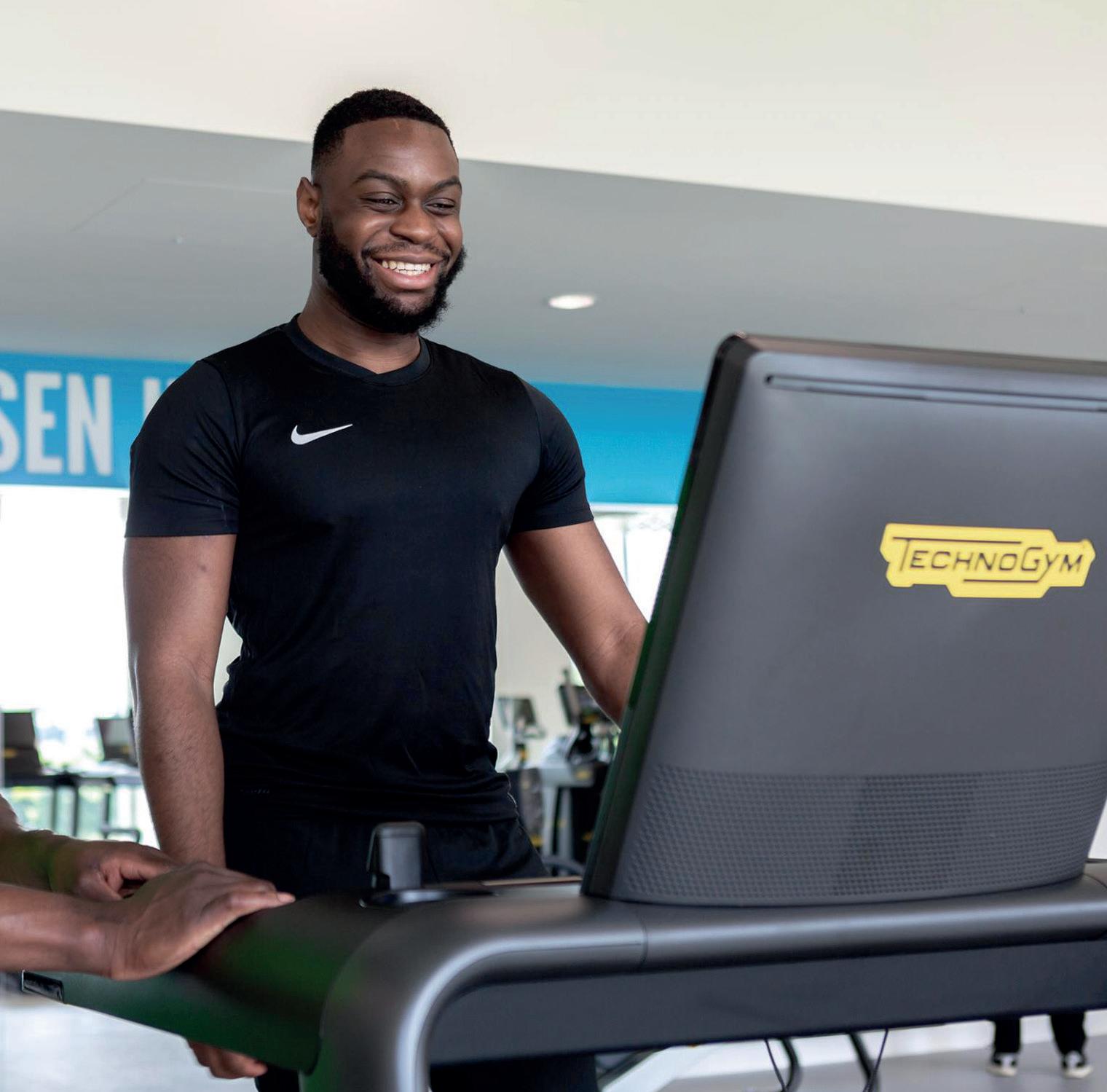
67 ©Cybertrek 2023 Issue 7 2023
For years, we’ve been pushing to have leisure recognised as a statutory service and we’ll continue to lobby until it happens
PHOTO: GLL
largely successful leisure centre services and deliberately choose to spend £2m more a year to run them yourselves. These are complex businesses in a competitive sector and councils just aren’t set up to run them. I’m afraid this decision will impact them more than it will us.
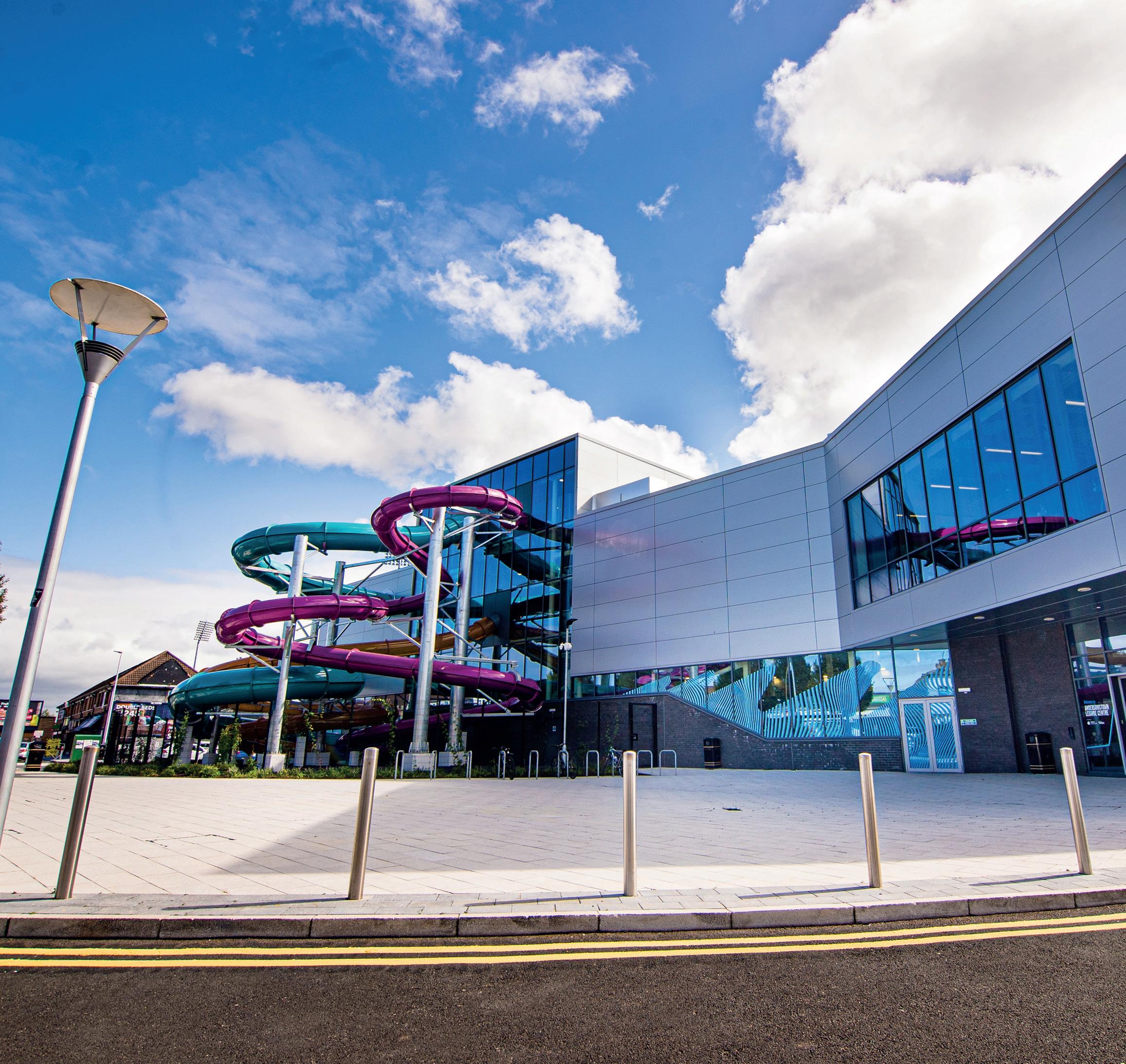
Bundey: It’s an occupational hazard of operating within a public service that at times, decisions are made for political reasons rather than valuefor-money or what’s best for the service. But we move on and we focus on the willing partners that are happy to be part of our new five-year plan, which is all about innovation and impact and strengthening communities and health.
Tell us about your five-year plan
Bundey: We’re on a constant journey to keep challenging and improving ourselves: we’re happy to criticise ourselves, often before anyone else does, as we believe that’s the way you improve.
Over the next five years,
looking at delivering £2bn of social value
Over the last 30 years, we’ve been disruptors and have driven our own agenda. As Mark now moves into a special advisory role – and in this watershed moment brought about by the perfect storm of COVID and the energy crisis – it’s the perfect opportunity to re-establish our company values and cultural identity and look forward to the next five, 10, 30, 70 years.
On 2 November – at a House of Commons event to mark the 30th anniversary of GLL, the 15th anniversary of the GLL Sport Foundation and our 10th anniversary of operating libraries – we’ll reveal more about our five-year plan. It’s different from previous plans and shares a series of exciting initiatives that we’ll be refining and rolling out over the next five years (see briefing overleaf).
Sesnan: For me, this plan is about establishing a USP in a market where everyone spots and copies good ideas. What is GLL? How are we different from other operators? Why
68 Issue 7 2023 ©Cybertrek 2023
INTERVIEW
we’re
The focus is on adding value to local communities
PHOTO: GLL
Lowdown: The GLL Sport Foundation
We’re very proud of the GLL Sport Foundation, which we set up in 2008 when we kept coming across young, talented athletes who given up their sport because they couldn’t afford to train or compete,” says Bundey.
“As part of our community engagement work – part of our efforts to address inequalities not only in health, but also in opportunity – we wanted to help these young people fulfil their sporting potential and achieve their dreams.
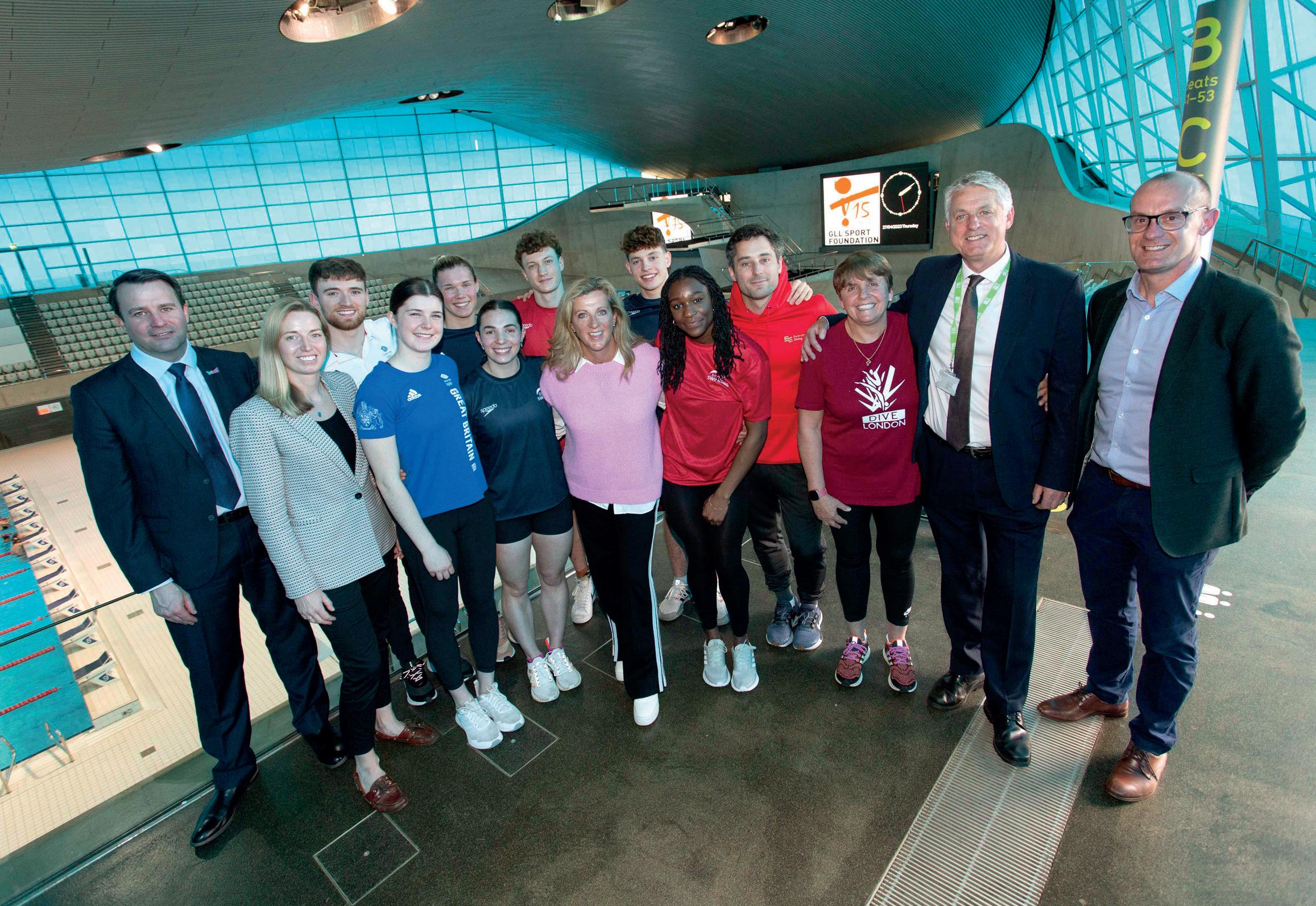
“We began to offer access to our facilities and looked to our suppliers to join us with financial bursaries. We soon realised that, even though everyone in
our scheme is in the top 10 of their age group nationally for their sport, we were often their only source of funding. Elite sport simply isn’t as well funded as people tend to think: 89 per cent of our athletes get no other funding whatsoever.
“The GLL Sport Foundation is now the biggest independent sports scheme for athletes in the UK, by far: we’ve given out 25,000 awards over the last 15 years, equating to £14m of value in cash and kind, and between them our athletes have won 85 medals at Olympic and Paralympic Games.
“We also continually evolve what we do, in close collaboration with our patron Sally Gunnell and our board
of athletes, to ensure we understand how we can best make a difference. We’ve introduced physiotherapy and sports injury services, for example, and are teaming up with universities to look at the science behind performance. We’re also piloting a couple of injury prevention masterclasses.
“This year, to mark the foundation’s 15th anniversary, we’re announcing a new partnership with a charity called Switch the Play, so we can offer mental health and wellbeing support to athletes, even career advice. We’re trying to make our support as wraparound and athlete-focused as possible.”
More: www.gllsportfoundation.org
69 ©Cybertrek 2023 Issue 7 2023
Sally Gunnell OBE (front centre) is patron of the GLL Sport Foundation
PHOTO: GLL
are we successful? Why should you buy our services and support our agenda?
This rethink is about the family, about health and wellbeing, about the communities we work in. It’s not about how many bits of gym kit we’ve got, or how many members. It’s about adding value.
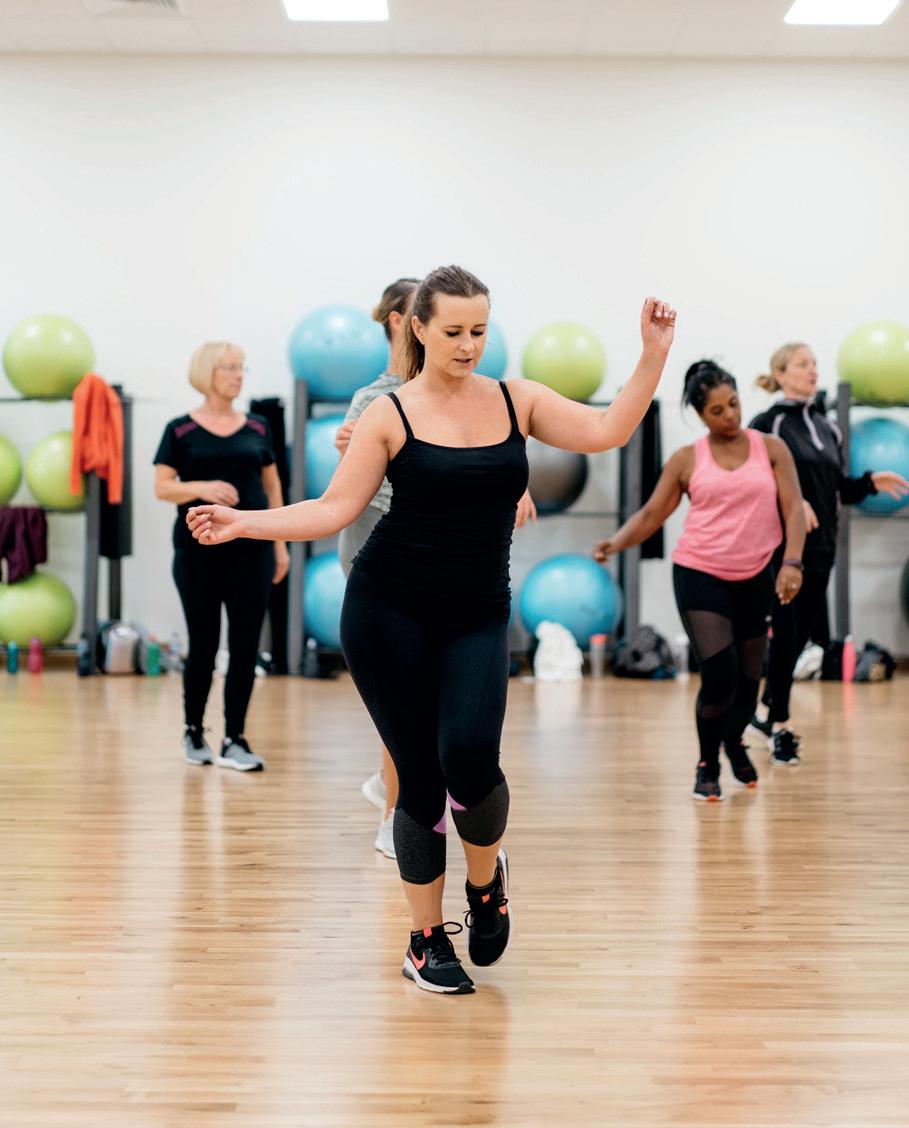
How do you quantify your social value?
Bundey: As we’ve proven over the last 30 years, social enterprise is a very powerful way of delivering social change and social value.
Over the next five years, we’re looking at delivering £2bn of social value, which we can break down by borough and ward.
Our social value model, which we developed with 4Global, Experian and Sheffield Hallam, is based on government statistics relating to the value of physical activity in health and wellbeing education, crime diversion and so on – calculations are based on how often people are active – as well as the broader value of cultural activity library services.
Sesnan: Everything is open to discussion and debate, but for me, what’s important is the direction of travel. To all our partners, we say: your social value needs to improve every year. And that’s only going to happen by increasing your range of activities, to in turn engage more and more disadvantaged socio-economic groups, minority groups and younger and older people. Just filling your gym with 20- to 44-year-old white males won’t improve your social value.
NEXT 5 YEARS
Peter Bundey talks about the GLL innovation plan
1. Product innovation
“We’re piloting new concepts”

We’re creating product innovation centres where we’ll work with suppliers to pilot new concepts and ensure we have a family of products to appeal to all ages. We’re already working in the areas of eSports and immersive activity.
2. Charitable foundations
We’re going to launch more foundations, the first of which will be the Literary Foundation to promote writing and the role of libraries in society. Further down the track we’ll also launch our Futures Foundation, which will be agile and free to support changing social agendas and a wide range of social initiatives – things such as mental health in young people.
I’m really excited by some of the things we’re already doing in our libraries, refreshing layouts to engage younger people, introducing physical activity and running initiatives to encourage and support local start-ups, for example.
3. Promoting ethical business
“We’ll be working with an ethical supply chain”
We’re looking to create trailblazer centres and facilities, working with fledgling local organisations – particularly social businesses – to help them incubate and accelerate their business models. This will help GLL nurture and work with an ethical supply chain, but will also promote ethical business generally within our local communities.

INTERVIEW 70 Issue 7 2023 ©Cybertrek 2023
It’s not about kit, it’s about adding value
“The Futures Foundation will be free to support changing social agendas”
4. Further education
6. The environment
will be at the heart of planning and design”
We’ll be linking with universities and colleges around the country to drive awareness of social enterprise among students, including an understanding of where it comes into play and its value and importance.
5. The health agenda
be a lot more preventative health programming across the business”
There’ll be a series of projects launching over the next five years around health interventions and health products, with lots more preventative programmes.
We recently achieved a 75 per cent completion rate in a new ‘Escape Pain’ programme, and are working on an ‘Add Five Years to Your Life’ programme at the moment.
The key is to speak in a language that’s understandable, appeals to a broad age range and really means something to people.
Moving forward, we’ll be talking to supply partners about how we innovate and move on this important agenda, as well as replicating what we’ve done at Charlton Lido.

There, we operate a green gym that’s fully powered by renewable energy, with on-site solar panels generating more watts across the year than we need to run the gym – including air conditioning.
We’re putting sustainability at the heart of our planning and design, and we’re already seeing people really appreciate that.
7. People first “We’re launching a series of career promises”
We have 10,000 employees and are accredited as a Living Wage employer. We’re now launching a series of career promises, as well as flexible options for staff to say how – within the bounds of running a business – they’d like to work. That will include a focus on wellbeing, as well as volunteering, giving staff the time to get involved. It won’t just be binary – their time or company time – but blended. l
71 ©Cybertrek 2023 Issue 7 2023
“We plan to educate students in the value and importance of social enterprise”
“There’ll
“Sustainability
PHOTO: GLL
GLL runs the Olympia Leisure Centre and Spa in Belfast
CORE GLUTE DRIVE














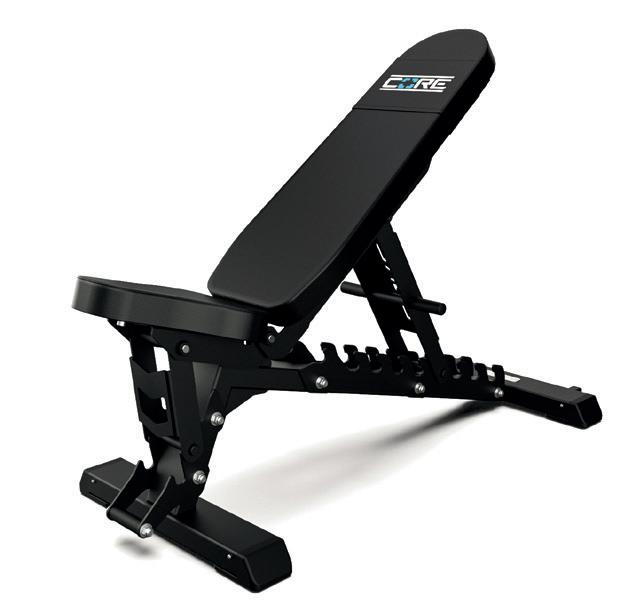







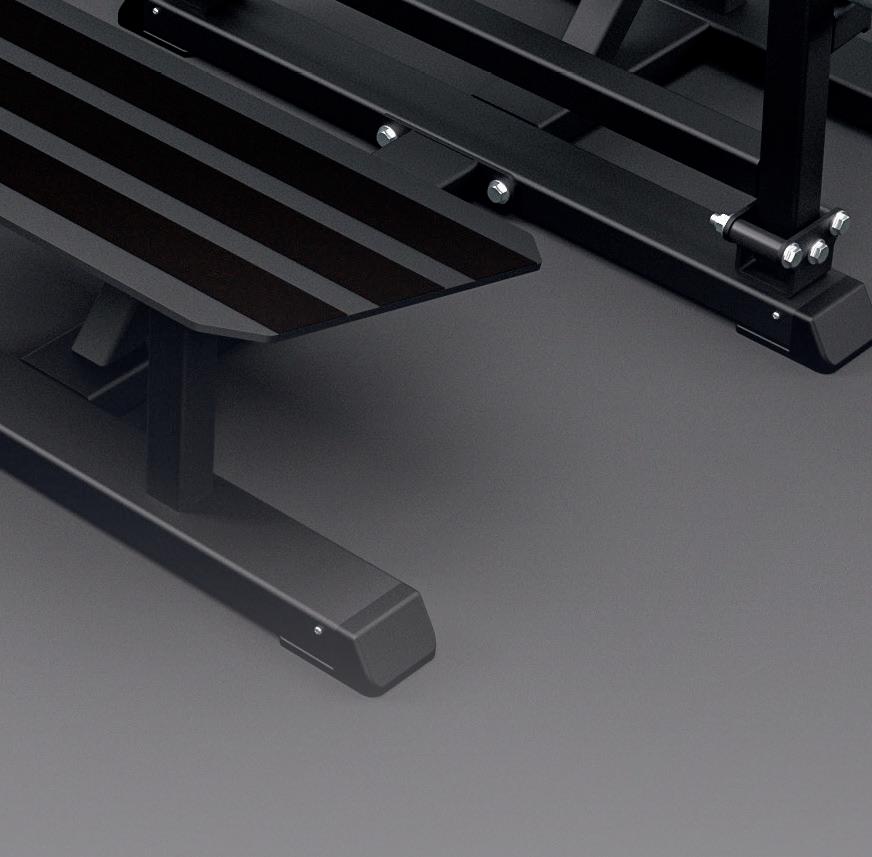


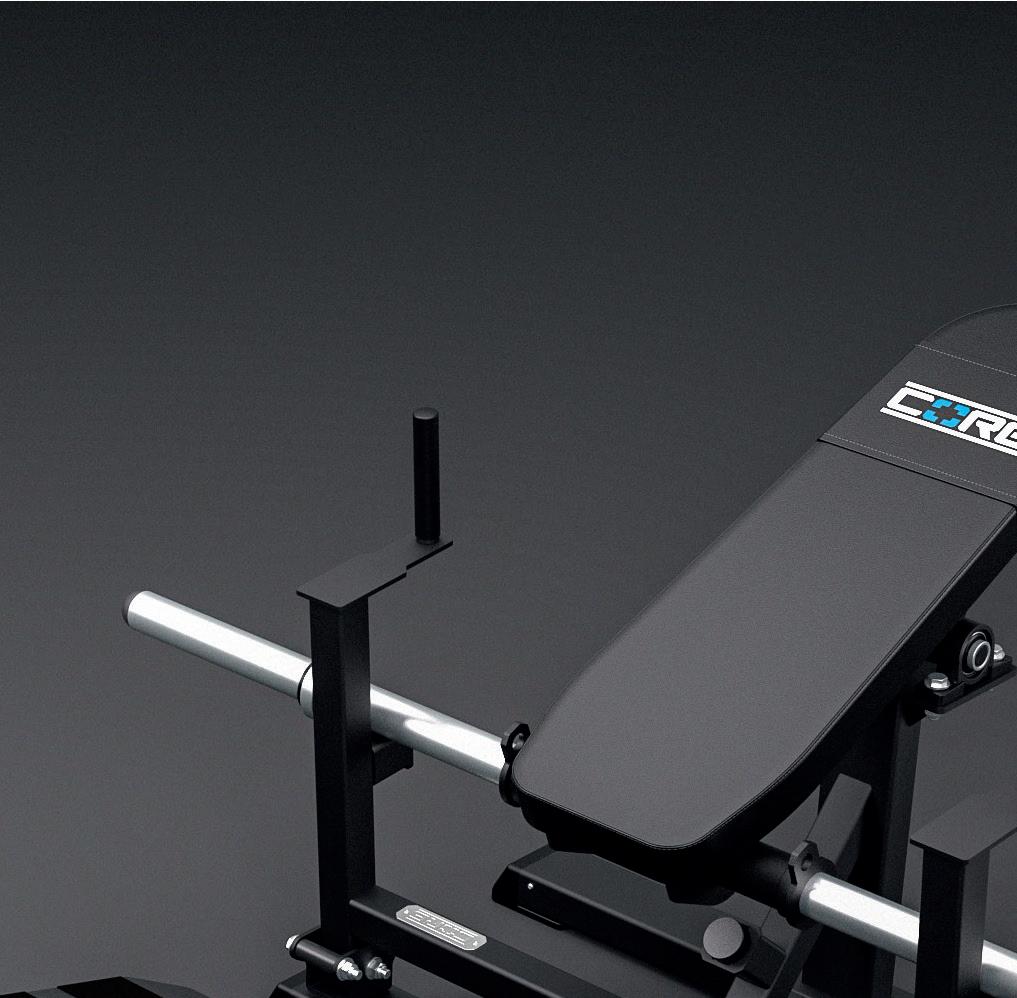
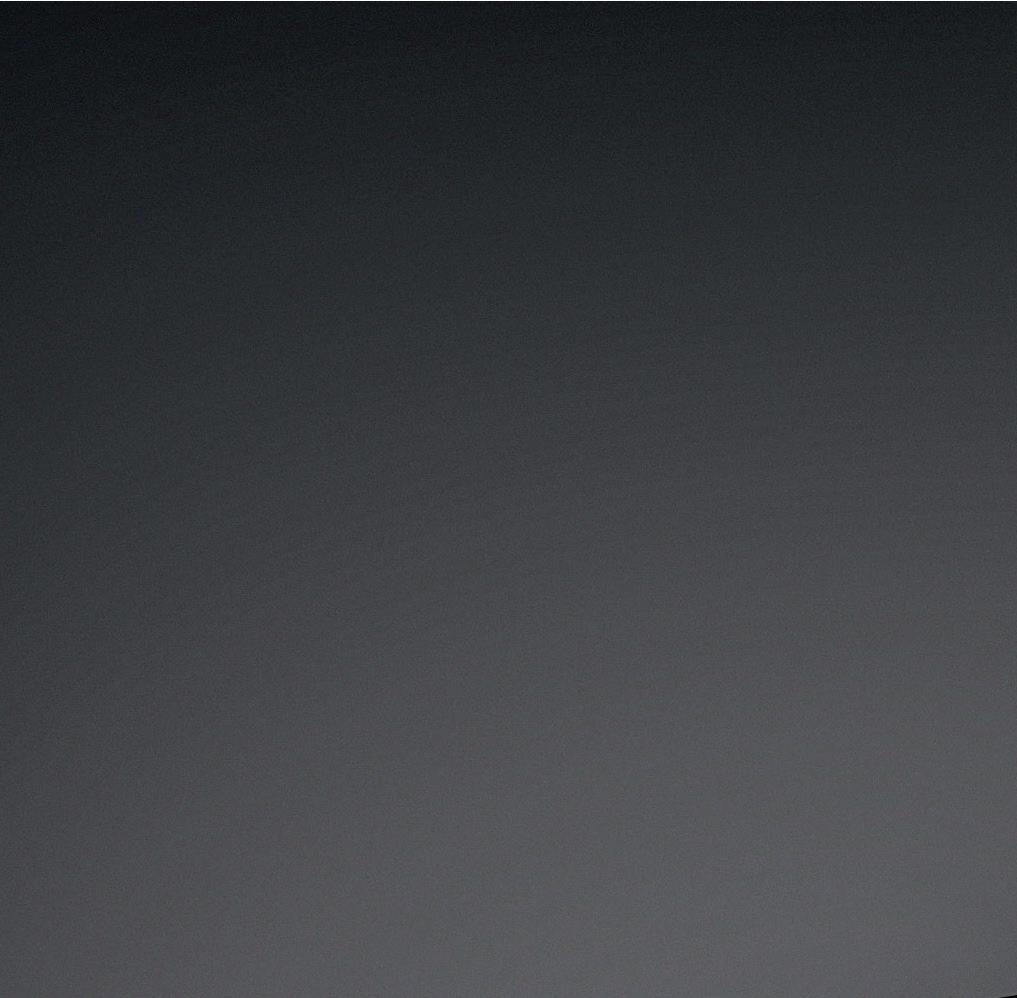
■ ■ ■ ■ ■
Kitted out
PSLT is working with Rise Fitness to deliver the kit for the roll-out of its new gym chain
Rise Fitness is growing its presence in the fitness world with gyms dedicated to busier areas of towns and cities.
To keep up with the high number of members that have chosen Rise as their gym, the team wanted to install British-made, futureproofed high-quality gym equipment.
Rise Fitness approached PSLT after reviewing the quality of equipment and short lead times in terms of the supply of its strength and plate-loaded kit and quickly started the process of integrating the brand into its floor space.
A powerful collaboration Core Gym Equipment from PSLT can now be seen in all Rise Fitness gyms across the country, and with an expanding range of British-design and manufactured equipment, Rise has been keen to add more to its sites.
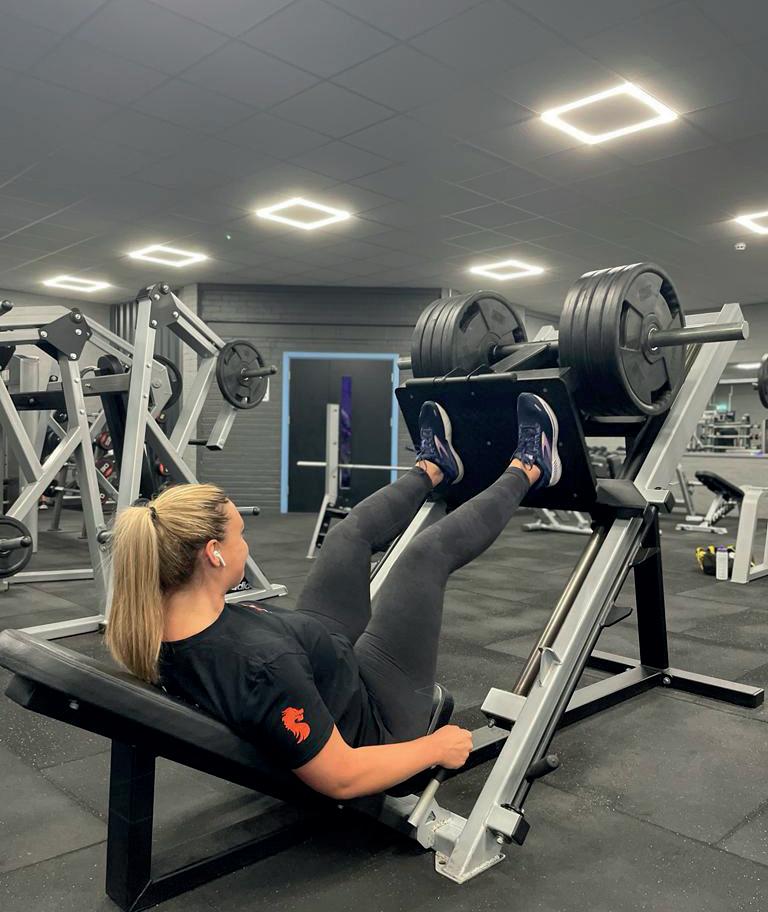
Fitness isn’t just about strength and with the growing number of athletes training at Rise Fitness sites – one of which is located at the football grounds in Telford, Shropshire –PSLT was able to provide all CV and functional training equipment from its Core Gym Equipment line to ensure people at every level of fitness can train in all areas of the gym.
Rise Fitness made it clear to the PSLT team that finish-quality, durability and a competitive price point were key to the purchase of equipment for their first gym and now PSLT and Rise are working together on the fifth location and have built a great
relationship for future new sites for the provison of kit from the Core Gym Equipment line.
Tom Grimshaw from Rise Fitness says: “We first took delivery of our plate-loaded kit two years ago when we kitted out our fourth gym.
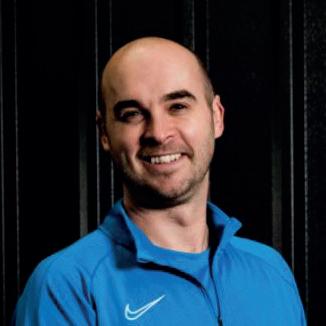
“Having used better-known suppliers for years, we’ve been pleasantly surprised and impressed with the quality of the kit. We wouldn’t use anything else now as we look to grow our stable of gyms.
Loved by members
“Our members love the kit, it’s hardwearing, extremely user-friendly, easy to clean, it looks seriously impressive and most importantly for a gym owner, it’s very reasonably priced. “We’re continually upgrading our kit to Core Gym Equipment and looking at ways to fit extra kit onto the gym floor.” ●
More: www.HCMmag.com/CGE

73 ©Cybertrek 2023 Issue 7 2023
S HO W CAS E • SUP P LIER • SC
Rise Fitness is rolling out using Core Gym Equipment from PSLT
We’ve been impressed with the quality of the kit. We wouldn’t use anything else now
Tom Grimshaw, Rise Fitness
PHOTO: CORE GYM EQUIPMENT
PHOTO: RISE FITNESS
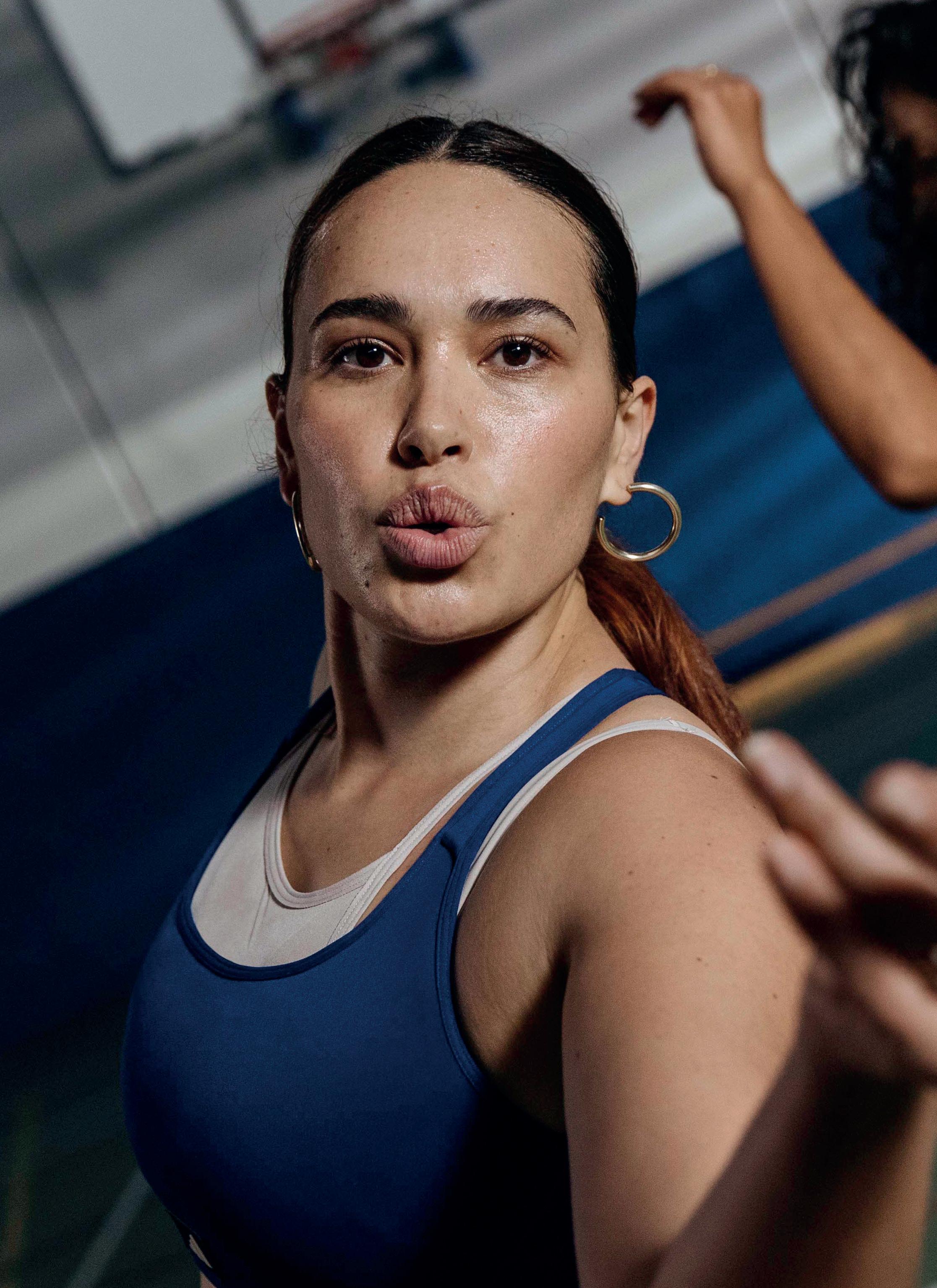
ev 74 Issue 7 2023 ©Cybertrek 2023
GEN Z are often referred to as ‘Generation Active’ PHOTO:
As the largest generation ever, Gen Z will have a bigger impact on the fitness market than any cohort before it
JAK PHILLIPS/LES MILLS
Gen Z code Cracking the
Progress is impossible without change; and those who cannot change their minds cannot change anything.”
So said Irish playwright George Bernard Shaw, his words more resonant now than ever –particularly when it comes to fitness.
In a famously trend-driven industry, an operator’s ability to adapt and embrace changing consumer preferences is a key determinant of sustained success.
If the pandemic was defined by clubs’ agile use of technology to keep members moving, the next phase of growth will undoubtedly be driven by operators’ ability to appeal to Gen Z.
As the largest generation ever, Gen Z will have a bigger impact on the fitness market than any other cohort before it. Indeed it is right now, with 30 per cent of Gen Z already using fitness facilities, while a further 25 per cent are planning to join.
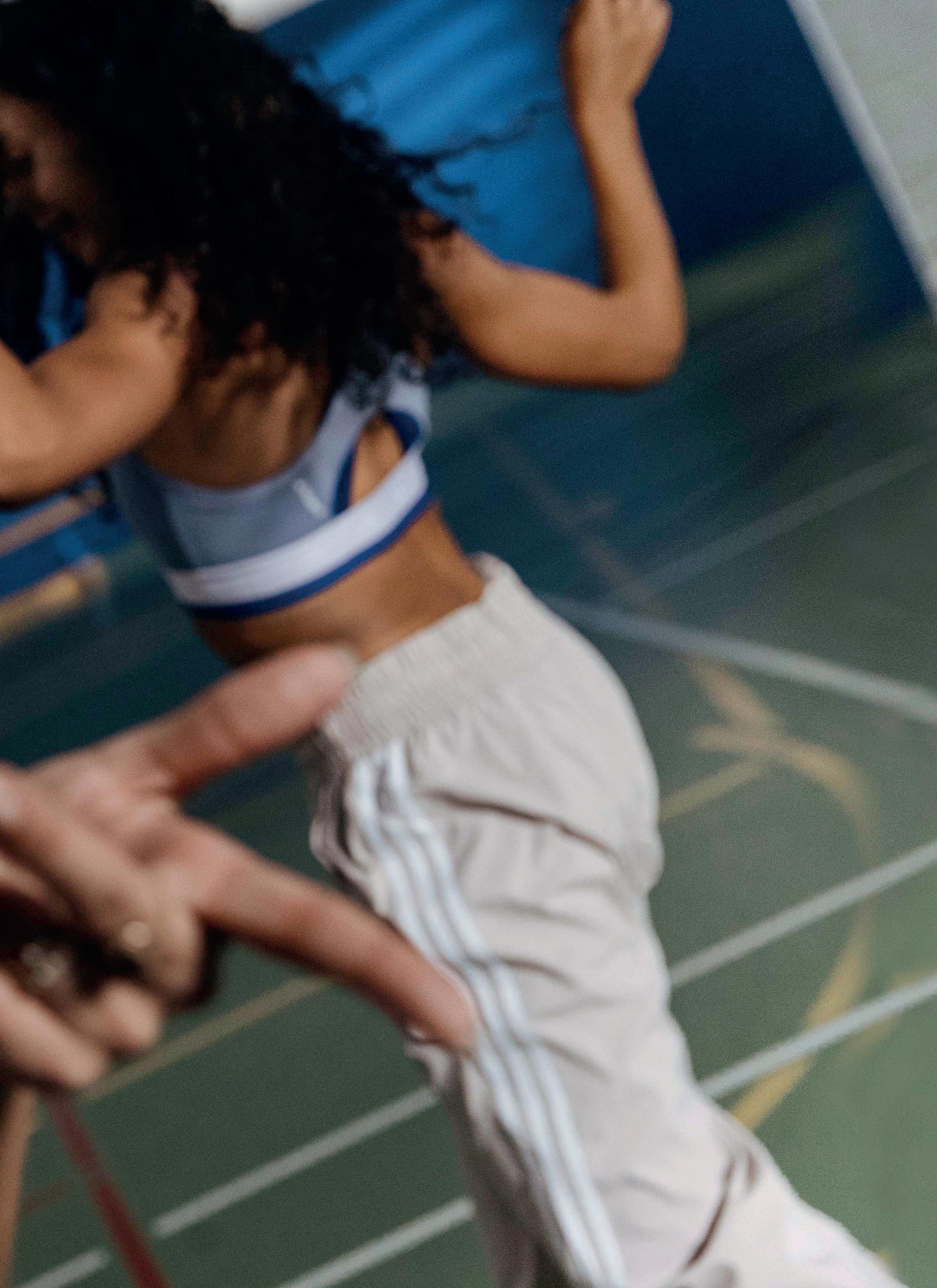
This is one of the findings from Gen Z Fitness: Cracking The Code – a new global report examining Gen Z exercise habits, their motivations to work out, and the barriers holding them back.
The independent research report – commissioned by Les Mills – is the biggestever study into Gen Z fitness, combining quantitative and qualitative insights from more than 4,000 people aged 16 to 26 across North America, Europe and Asia. It examines the generational shift sweeping fitness and outlines how providers must continually evolve to keep pace with the expectations of young consumers.
A landmark report fi nds clubs can unlock growth by engaging Gen Z. So how should operators shape strategies to meet their needs?
Jak Phillips investigates
Key research findings
So what are the key takeaways? Firstly, researchers identified a massive untapped market in the form of Gen Zers.
Having helped shape a culture where fitness has become a social media mainstay, Gen Z is frequently referred to as ‘Generation Active’ – and 36 per cent of them are already exercising regularly. But this is just the tip of the iceberg. A further 50 per cent of Gen Z want to work out regularly, but say they need help getting started. Nurturing this untapped market requires an intimate understanding of the varied challenges they face.
Gen Zers have grown up watching their parents yo-yo diet, follow fads, and flit from one short-lived fitness kick to another. Driven by extrinsic motivators such as ‘bikini bodies’ and ‘no pain, no gain’ mantras, they modelled a version of fitness that left very little room for joy. As a result, Gen Zers who are yet to enter the fitness market perceive exercise as being hard work. Despite this, they understand the value of exercise – listing their top two reasons to start as wanting to become fitter and healthier.
In contrast to their parents, Gen Z see fitness as a far more holistic experience, driven by a desire to maintain mental wellness and be part of a community. Four of Gen Z’s top five reasons to exercise are linked to health and happiness, with this demographic demonstrating a strong appreciation for the holistic benefits of activity. That said, they still want to look good, with 47 per cent listing ‘improving their appearance’ as a key reason to work out.
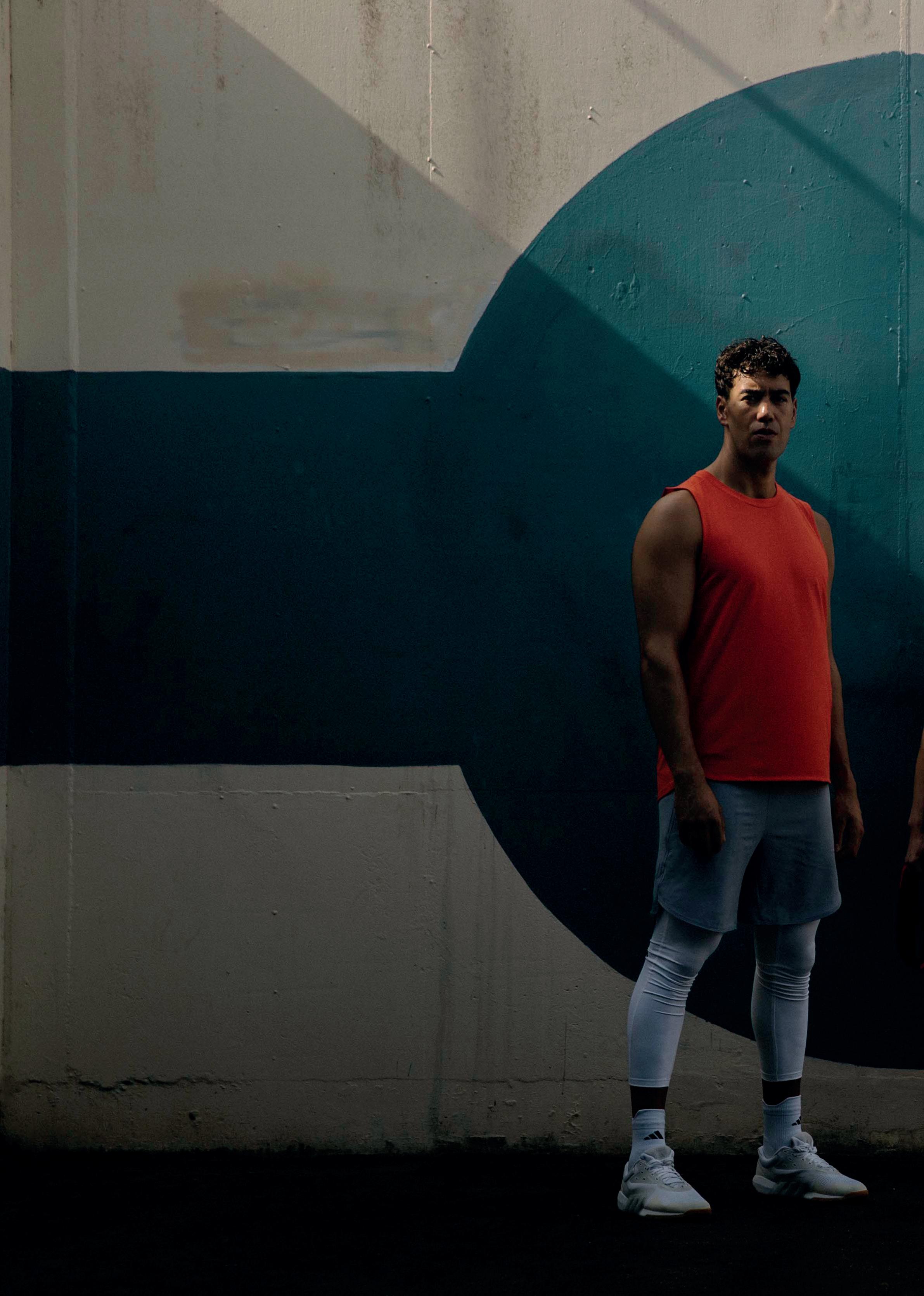
They are 77 per cent more likely to ‘splurge’ on fitness than their parents according to the research and those who exercise spend a median of US$95 a month on doing so.
Smartphone-fi rst approach

Understanding these motivational drivers is crucial for operators aiming to engage Gen Z. Their affinity for their phones (55 per cent use phones for over five hours per day) means clubs have a constant opportunity to gain their attention and build trust if they can cut through with engaging content. Among non-exercisers, 68 per cent want to start working out at home first, so providing fitness at their fingertips through accessible and engaging digital workouts is a great way for clubs to amplify their brand’s reach and drive meaningful connection.
With 48 million Gen Zers on TikTok in the US alone, researching trending hashtags and creating platform-specific content that reflects their values is a great way to get in front of them and start to tell your brand’s story.
76 Issue 7 2023 ©Cybertrek 2023
RESEARCH
Gen Z see fitness as a holistic experience driven by a desire to maintain mental wellness and be part of a community
PHOTO: JAK PHILLIPS/LES MILLS
Gen Z Headline Stats





36% ARE EXERCISING REGULARLY, WHILE 50% WANT TO START



30% OF GEN Z ARE REGULARLY USING FITNESS FACILITIES
92% OF GYM USERS DO AT LEAST HALF THEIR WORKOUTS IN THE GYM
72% OF REGULAR EXERCISERS ARE DOING BOTH GYM AND OUT OF GYM WORKOUTS
44% OF REGULAR EXERCISERS USE PAID FITNESS APPS OUTSIDE OF THE GYM



81% OF ALL GYM GOERS ARE DOING GROUP WORKOUTS
Researchers found Gen Zers have a strong preference for working out with others

77 ©Cybertrek 2023 Issue 7 2023
Top 5 reasons for working out:
1. Be fitter
2. Get healthy
3. Improve appearance
Meanwhile, mixing up your content and channels offers a great opportunity to reach a broad audience and keep your messaging fresh.
As well as bringing the fun, highlighting the credibility of your club’s brand and the science underpinning your programming can help you to cut through the masses of online misinformation about fitness and exercise and build trust with your target audience.
Under the Infl uence
When it comes to online fitness, Influencers are living up to their name by holding significant sway over Gen Z regular exercisers. 71 per cent are using a fitness influencer’s free digital platform inside the club, while 76 per cent look


78 Issue 7 2023 ©Cybertrek 2023
RESEARCH
4. Feel better / feel good
1 2 3 4 5 49% 48% 47% 47% 44%
5. Reduce stress
PHOTO: JAK PHILLIPS/LES MILLS
Source: Les Mills Gen Z Fitness: Cracking The Code Report
Source: Les Mills Gen Z Fitness: Cracking The Code Report
to influencers for workout guidance at home. But this doesn’t have to be a global megastar like Kayla Itsines. Gen Z consider an influencer to be anyone who represents a brand they’re interested in – meaning gyms have significant opportunities to amplify their own star instructors to drive awareness and win fans.

According to another recent report from ABC Fitness, over half (55 per cent) of Gen Z agree that promoting trainers and instructors as local fitness influencers is a high-impact way to create a strong sense of community. With this in mind, shining a spotlight on the rockstars in your club’s team is a surefire recipe for creating authentic content that showcases the connection Gen Z are looking for. Your members are also a great
Gen Z Fast facts
36% are already exercising regularly
50% want to work out regularly, but say they need help getting started
Of these 50%
36% plan to start exercising in the next 3 months
14% want to start exercising but feel intimidated
30% are working out in fitness facilities
47% list ‘improving their appearance’ as a key reason to work out
68% of non-exercisers want to start working out at home
72% of regular exercisers take a hybrid approach to exercise
People who train on a hybrid basis do 67% more workouts than gym-only exercisers
61% of Gen Z gym goers have been members for between six months and two years
81% of Gen Z gym-goers are taking part in group workouts
64% of Gen Z working out regularly say they like to vary their workouts and discover new ones
source of content. Highlighting powerful personal stories can help to nurture Gen Z prospects and accelerate their consideration journey.
The ability to lean in and meet the nuanced needs of the untapped Gen Z market is crucial for winning their business. But what about those who are already working out?
79 ©Cybertrek 2023 Issue 7 2023
Health clubs have significant opportunities to amplify their star instructors to drive awareness
Online influencers hold significant sway over Gen Z’s exercise choices
Source: Les Mills Gen Z Fitness: Cracking The Code Report
Gen Z preferences – activities being done in the gym
1. Pin-loaded and/or cable machines
2. Group fitness workouts/classes
3. Free weights (dumbbells, barbells, plates)
4. Cardio machines (treadmills, bikes)
5. Body weight training
6. Functional training (CrossFit-style)
7. Personal training

8. Small group training
9. Reformer Pilates
10. Yoga
11. Mat Pilates
12. Swimming


Flex appeal
Having grown up with Amazon Prime and Uber Eats at their fingertips, Gen Zers expect flexible fitness solutions so they can work out wherever, whenever and however they want. With 72 per cent of regular exercisers taking a hybrid approach that sees them training both in and out of the gym, they expect an omnifitness experience of live and digital workout options to suit their lifestyle.
When health clubs strike the right balance, Gen Z will stick around. People who train on a hybrid basis are 40 per cent more likely to have been a gym member for 3+ years compared to gym-only exercisers. They also manage to do 67 per cent more workouts than gym-only exercisers (5.5 per week on average, vs 3.3).

Meanwhile, the report finds Gen Z gymgoers overall to be more loyal than they’re given credit for: 61 per cent of club members have been with their facility for between six months and two years. By combining live inclub exercise offerings with at-home digital solutions, fitness providers can join the dots to support Gen Z’s preference for choice, social connection and workouts on demand.
This makes maintaining their fitness routine easy on days when getting to the gym isn’t.
Strength in numbers
While digital fitness options have become a basic expectation, the report finds a strong Gen Z preference for working out with others. As Gen Z continues its rapid ascent up the fitness food chain, 82 per cent of all regular exercisers are using the gym (up from 64 per cent in 2021) . Given their appetite for connection and community, it’s no surprise Gen Z are drawn to the supportive environment of the studio. Over 80 per cent of Gen Z gym-goers are taking part in group training, citing the energy of the group, fast results and the guidance of an instructor as key factors attracting them to the studio.
Unsurprisingly, the strength training trend is also driving Gen Z into the studio, ranking top of their preferred classes. But Gen Zers are also paying close attention to their wider wellness, with recovery and mindfulness sessions following close behind. They’re prepared to spend more on Pilates, with 63 per cent preferring reformer classes,
80 Issue 7 2023 ©Cybertrek 2023 RESEARCH
12 11 10 9 8 7 6 5 4 3 2 1 82% 81% 81% 78% 71% 70% 69% 66% 63% 57% 55% 51%
Source: Les Mills Gen Z Fitness: Cracking The Code Report
Gen Z preferences – most popular group workouts
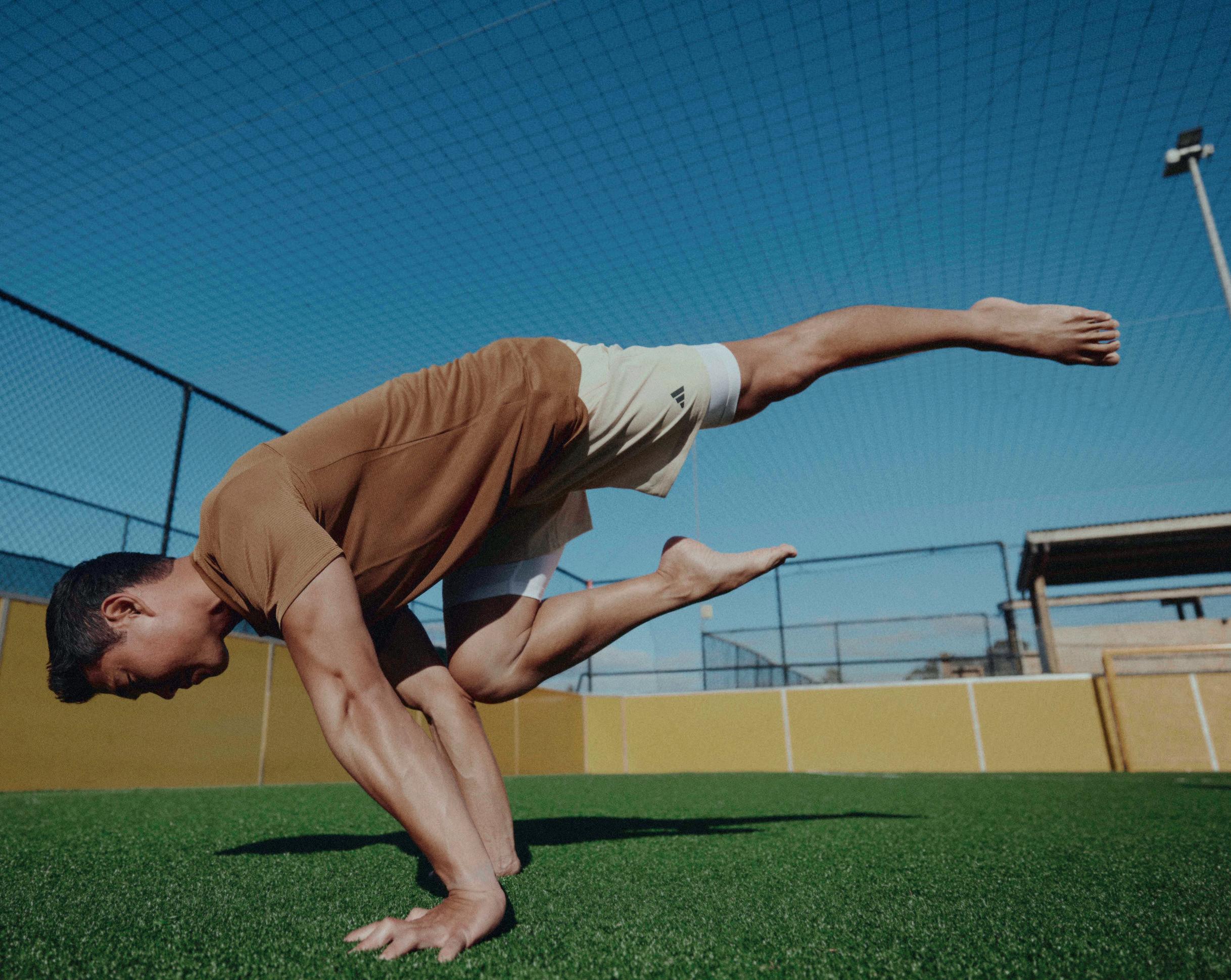
81 ©Cybertrek 2023 Issue 7 2023
1. Strength training
2. Stretch/mobility
3. Yoga
4. Boxing
5. Core conditioning
6. Functional training
7. Other cardio/aerobics
8. Indoor cycling
9. Martial arts
10. Dance
11. HIIT
12. Step aerobics
13. Pilates (with reformer)
14. Mat Pilates
14 13 12 11 10 9 8 7 6 5 4 3 2 1 50% 35% 33% 31% 30% 29% 28% 26% 24% 23% 23% 19% 17% 16%
weight training and functional training are popular Gen Z activities
Body
PHOTO: JAK PHILLIPS/LES MILLS
Source: Les Mills Gen Z Fitness: Cracking The Code Report
Gen Zers expect flexible solutions, so they can work out whenever and however they want
vs 55 per cent who prefer mat. Continuing the theme of variety, 64 per cent of those working out regularly, strongly agree that they like to vary their workouts and discover new ones, suggesting that timetables with an optimal number of choices are key to keeping Gen Zers happy and engaged.
And if health club operators can keep Gen Z engaged en masse, we could be on the brink of a major industry inflection point.
Crossing the chasm
In his famous TED talk, renowned business consultant Simon Sinek discusses the Law of Diffusion of Innovation, citing 15-18 per cent penetration as the tipping point that must be reached to achieve mass market success and acceptance of an idea.
By ‘crossing this chasm’ as Sinek puts it, you reach a large enough number of people that the majority of the population are then ready to follow suit and fully embrace your services. Assuming he’s right, our sector’s current penetration rate – which ranges from around 6 per cent in the Middle East to roughly 21 per cent in the US – puts it within touching distance of mass adoption.
Consider then, that Gen Z Fitness: Cracking The Code found 30 per cent of Gen Z are already regularly working out in fitness facilities – a far higher propensity to do so than the rest of
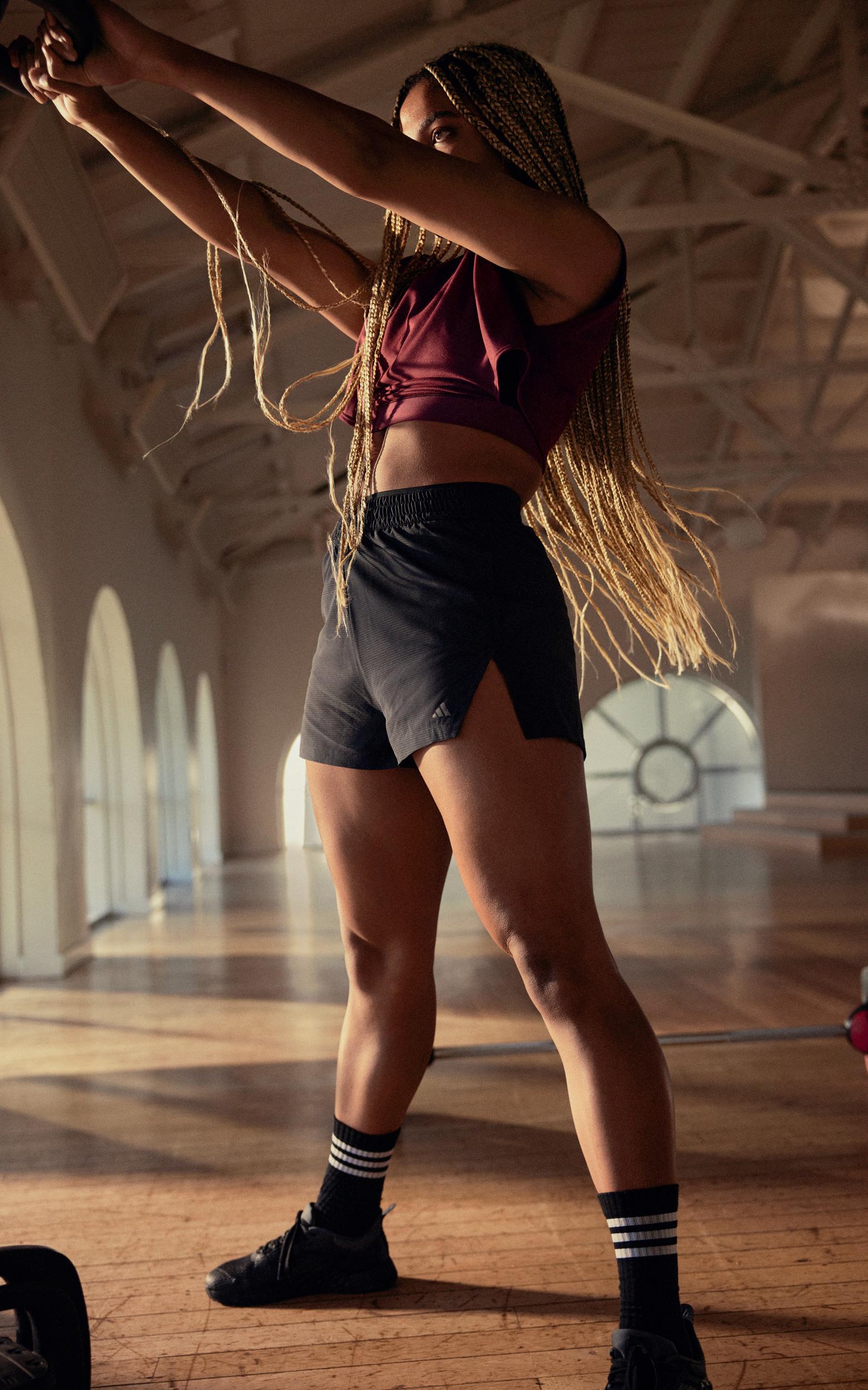
The survey found 30 per cent of Gen Zers are already regularly working out in clubs
the adult population. As more Gen Z come of age (the youngest are still only 11) we can expect to see incremental increases in club penetration that take us past Sinek’s magic 18 per cent mark. Better still, by changing our approach to engage the 50 per cent of Gen Z who want to start working out, we can deliver unprecedented progress and write an epic story even Bernard Shaw would be proud of. l
Jak Phillips is global content and PR director at Les Mills
n More: www.HCMmag.com/LesMillsGenZ
82 Issue 7 2023 ©Cybertrek 2023 RESEARCH
64 per cent of those working out regularly, strongly agree that they like to vary their workouts and discover new ones
PHOTO: JAK PHILLIPS/LES MILLS
TEST AND TRAIN BODY AND BRAIN
APPLICATIONS IN MEDICINE AND SPORTS
The SKILLCOURT® is a diagnostic and training system that accurately captures the movement of individuals in space using artificial intelligence and specialized sensors. It trains visual, cognitive, and motor skills through targeted exercises. Based on scientific findings, it has successfully developed a training program that improves abilities such as concentration, memory, responsiveness, and orientation.




















Based on scientific knowledge, it has been possible to offer a training program that improves abilities such as concentration, memory, responsiveness, and orientation.
NEUROREHABILITATION




Tests and exercises for effective and motivating rehabilitation
RETURN TO WALK-RUN-PLAY
Systematic process to reintegrate athletes into competition as well as for knee and hip replacement patients
FUNCTIONAL DIAGNOSTICS










Qualitative and quantitative analysis of posture and movement
Used by Champions League clubs, clinics, universities, fitness centers and rehab & performance centers.



GET MORE INFORMATION
www.skillcourt.training
FOR ALL PILATES
Although Pilates is starting to attract more diverse audiences, many operators find their core demographic is still young women. How can we broaden the reach? Experts share their advice

Beyond the core female market, Pilates can be adapted to appeal to men, sportspeople and seniors
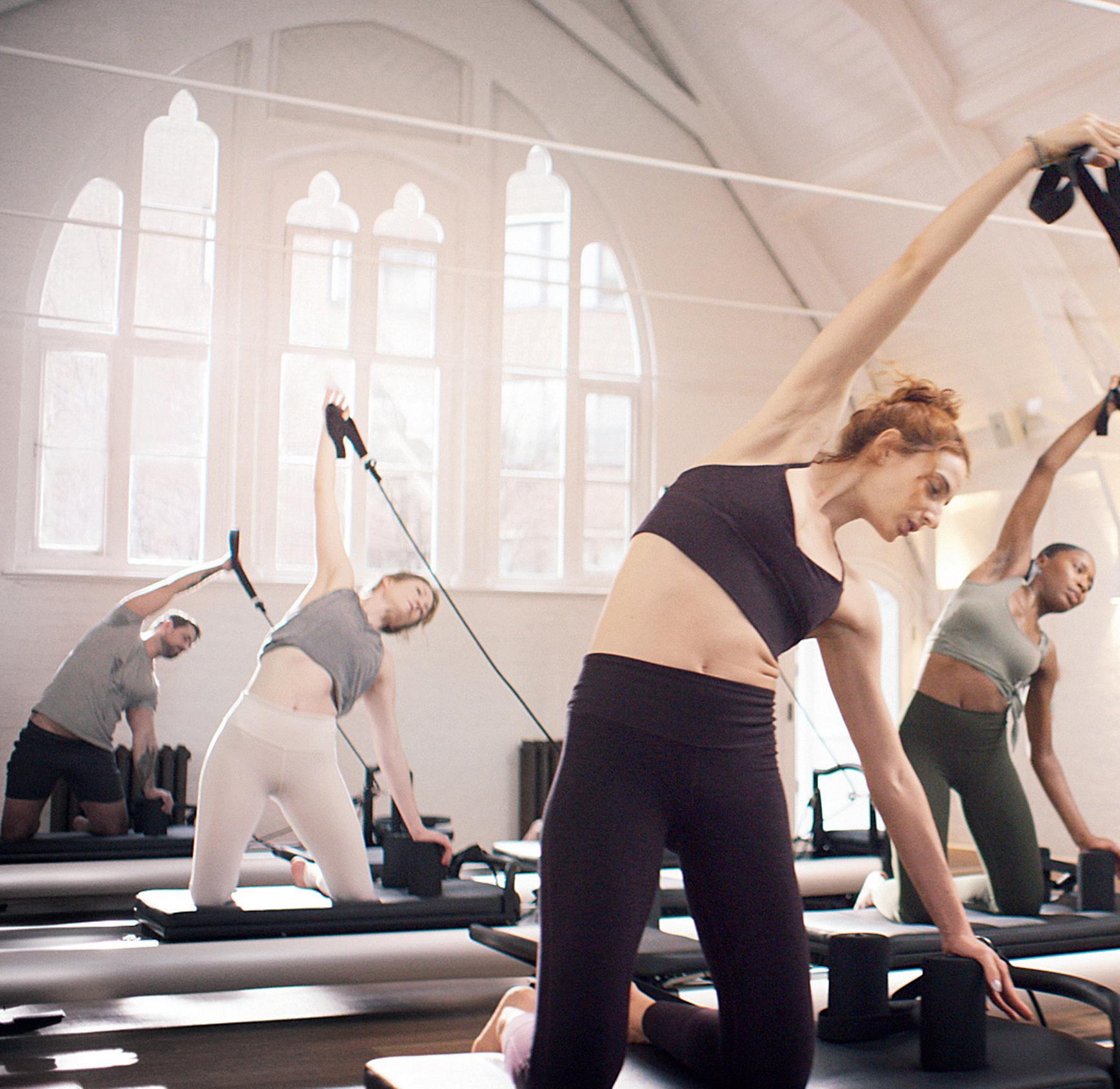
STUDIO
PHOTO: HEARTCORE
Jessie Blum Heartcore
Often it’s the fear of not fitting in that keeps men and older people away from Pilates studios. Offering curated classes that cater for these audiences and their needs can be a great icebreaker and door opener. These can include men-only classes or a sportspecific classes, a beginner or slower-paced session or a series to learn the ropes and help people achieve their goals (however big or small they may be).
As a business, I think it’s important to communicate clearly what you can offer and be available for questions and/or conversations to instil a sense of trust, safety and confidence in these audiences.

Talk to these audiences in their natural habitats. For example, hold an introductory ‘men only’ Pilates session at your local sports club, or offer a gentler paced session at a local senior home or in a church hall to help raise awareness of the benefits of Pilates and start building a community.
Our work as operators is to create welcoming, supportive and inspiring environments and options for everybody to thrive in. I also think that teachers need to feel empowered with knowledge and sensibility to welcome and guide these audiences with an individual approach so everybody feels understood, included, encouraged and accomplished. It all comes down to creating meaningful, personalised experiences.
Tell us about trends and changes to Pilates audiences
What we’re noticing at Heartcore is an increased age gap – in a good way! We’re seeing an equal rise of younger and more mature members moving side by side, each working to their own potential and all looking to feel and be stronger from the inside out. It’s very powerful to witness and reaffirms how incredibly adaptable, inclusive and beneficial Pilates can be.
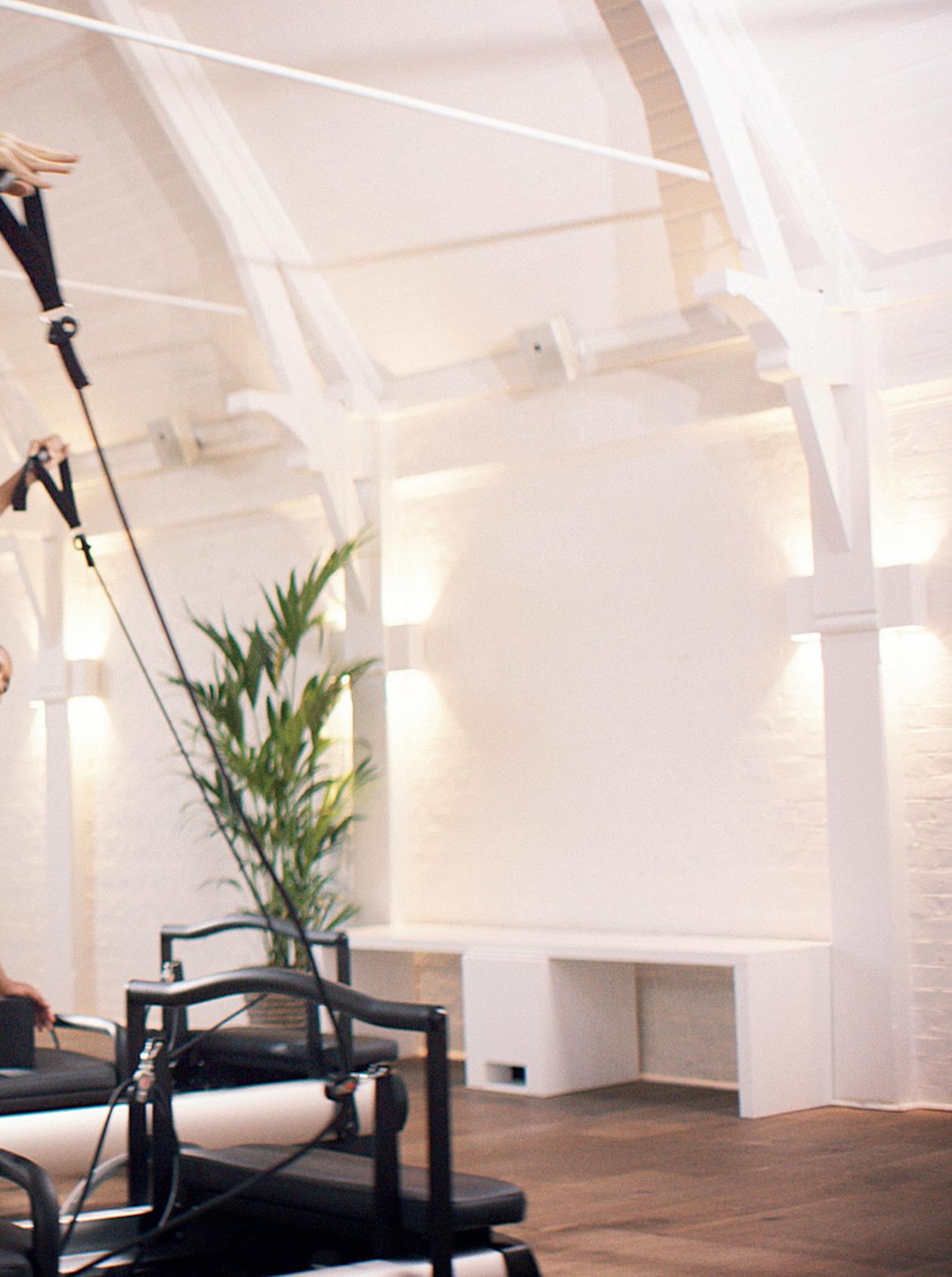
85 ©Cybertrek 2023 Issue 7 2023
We’re seeing an equal rise of younger and more mature members, each working to their own potential
Jessie Blum PHOTO: HEARTCORE
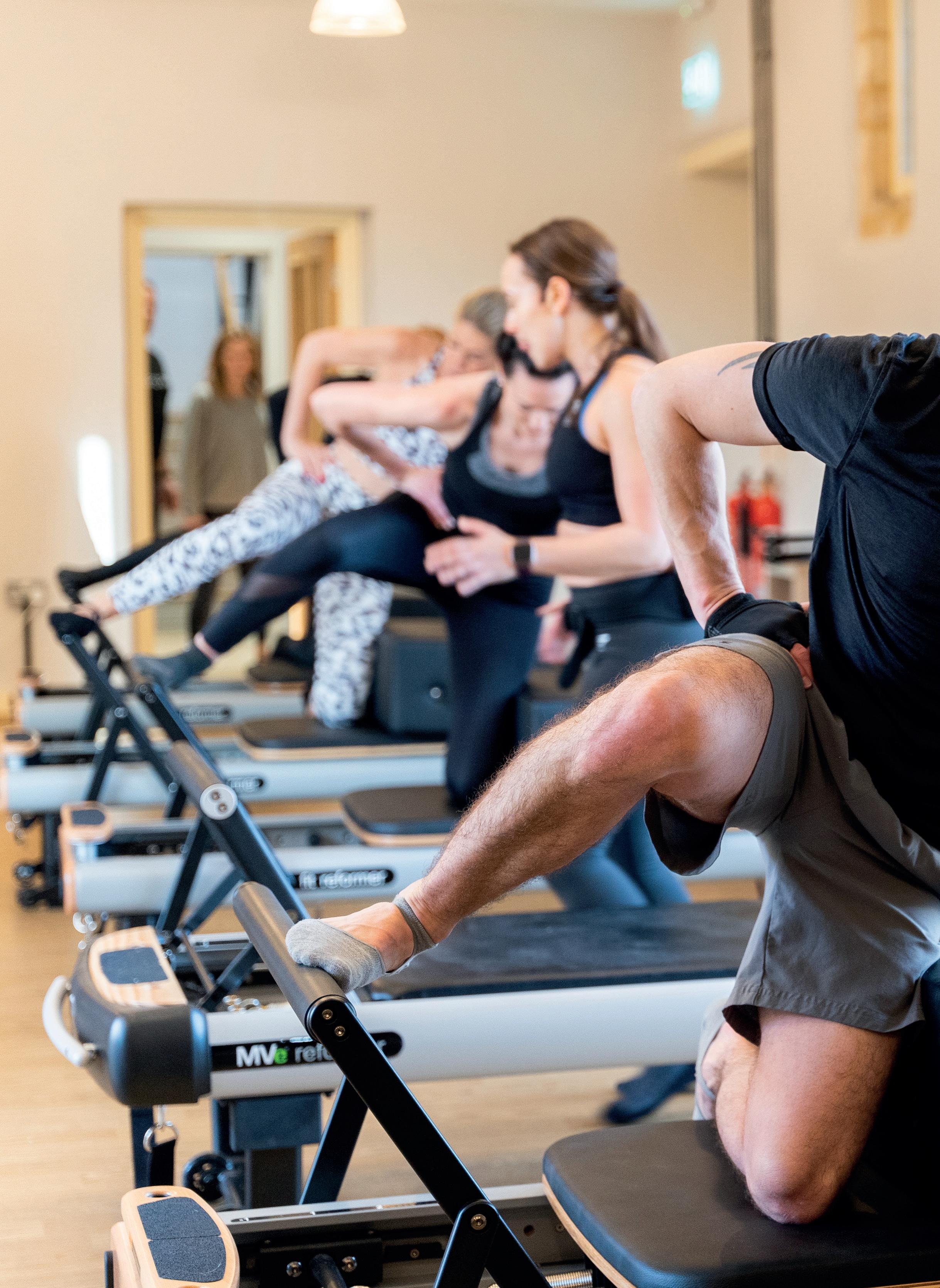
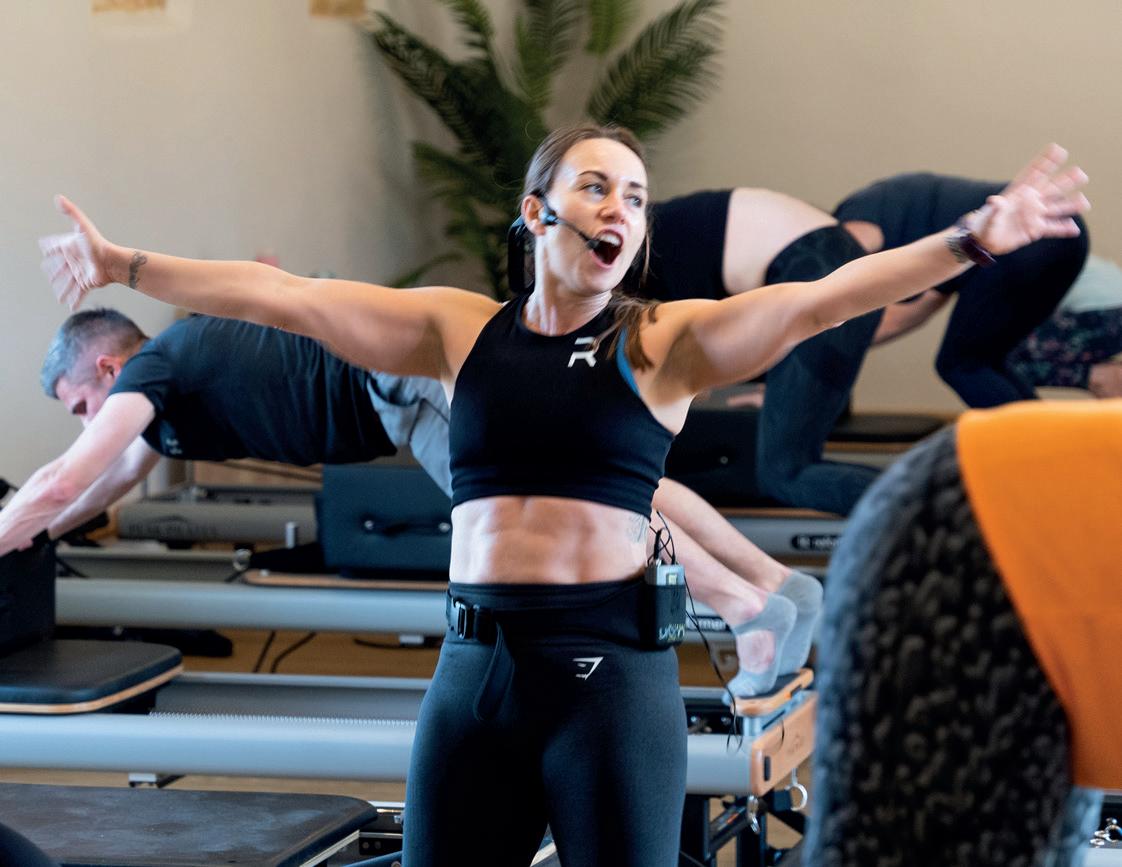
Growing your male Pilates membership may start with attracting them to train with their partners
TIM
/
UK /
PILATES
TIM
/ GYMKIT UK / PEAK PILATES
a warm and inclusive environment is key
PHOTO:
STEELE PHOTOGRAPHY
GYMKIT
PEAK
PHOTO:
STEELE PHOTOGRAPHY
Creating
Studios should work in partnership with physiotherapy and chiropractic practices
Howard Braband GymKit UK/Peak Pilates
Peak Pilates ran a very positive campaign in 2022 titled ‘Men + Pilates’ where imagery and key messages were used to highlight the physical benefits of Pilates for men. More exposure of these key messages will certainly help to continue to develop the attraction for men.
My advice is to be subtle when marketing to your male audience. Stay smart and sophisticated in your message, imagery and offer and consider the specific benefits that may be attractive to them.
From what we’ve seen, the studios that have been most successful in growing their male membership are those that have attracted men to train with their partners, encouraged by their wives, female friends and girlfriends. Spending quality time together and sharing healthy lifestyle activities such as Pilates has been a growing trend.
Peak Pilates has also seen an increase in interest from sportspeople such as professional footballers, cyclists, runners and triathletes who now recognise that Pilates is a valid part of their training routine.
Pilates is recognised by many healthcare professionals, such as physiotherapists and chiropractors. Studios should work in partnership with physiotherapy and chiropractic practices to encourage both men and older people to try this form of exercise.

Ultimately, creating a welcoming and inclusive environment is key. By tailoring marketing efforts, diversifying class offerings and providing targeted incentives, operators can successfully attract men and older individuals, helping them discover the immense benefits and joys of Pilates.
How are audiences changing?
We’ve noticed that audiences are gradually changing. Many men have discovered the numerous benefits of Pilates, including improved strength, flexibility and overall fitness. As the understanding and awareness of Pilates continues to grow, more men are realising its value and incorporating it into their fitness routines.
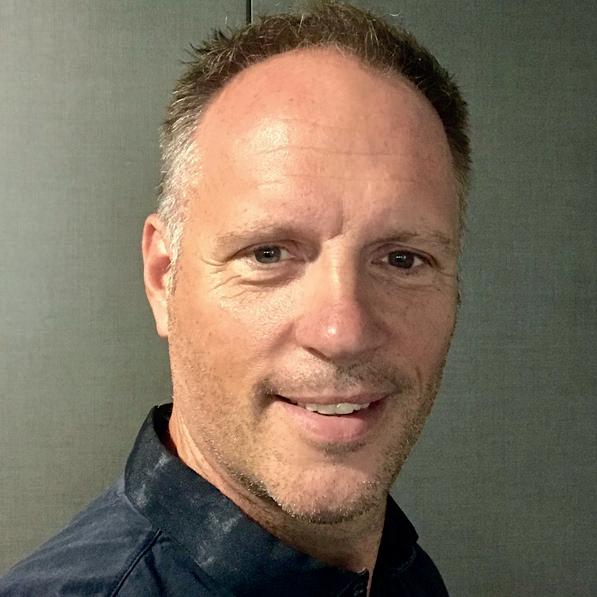
87 ©Cybertrek 2023 Issue 7 2023
Howard Braband
PHOTO: HOWARD BRABAND
James Anderson Physical/Merrithew
It’s about building awareness of what Pilates actually is and what it can help with. Some people’s perceptions may be that it involves a relaxed lie-down in a church hall, but Pilates can be a challenging full-body workout that builds strength, endurance and agility. It’s why athletes and sports people across a wide range of sports use it to develop conditioning and injury resistance. It’s also an important message for men: elite male sports stars are turning to Pilates in their droves these days. It definitely isn’t just for women.
For those not interested in improving sports performance, operators can promote the postural benefits of Pilates: if you’re sitting at a desk most of the day, Pilates can help you de-stress, improve posture and build a stronger core. For older people, Pilates is great for mobility, functional movement and rehabilitation. Customisable to individual needs, it’s a form of exercise for life.
PHYSICAL/NELSONPHOTOS
What kit would you recommend?
To attract more men, Pilates reformers and stability chairs should be top of the equipment wish-list. Here, the tension can be adjusted to make the resistance more challenging. Range of motion can also be increased to progress training. Male participants will quickly realise it’s a much tougher workout than they expected, plus they’ll soon reap the rewards of enhanced performance across all their athletic pursuits. Mat-based Pilates can also be surprisingly challenging; operators can migrate men into these classes in addition, once they’re hooked on the benefits of Pilates.
What trends are you seeing?
Significant growth in demand for Pilates – and particularly reformer Pilates – among elite male sports teams and athletes, who are incorporating it as a regular part of their training regimes.
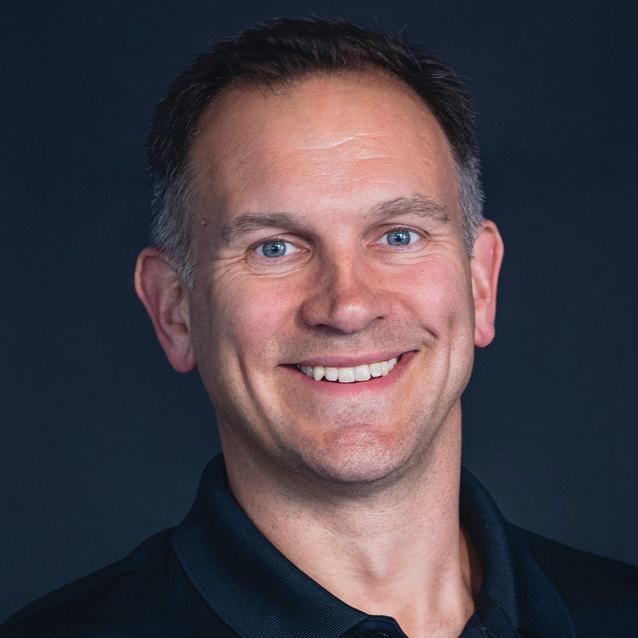
I’d go so far as to say Pilates is fast becoming a must-have for professional athletes – a valuable way to improve performance across a wide range of sports by developing strength and conditioning and helping to prevent injuries. We’ve recently supplied Pilates reformers to Premier League football teams and footballers, as well as Premiership rugby teams and players, for on-site and at-home training sessions.
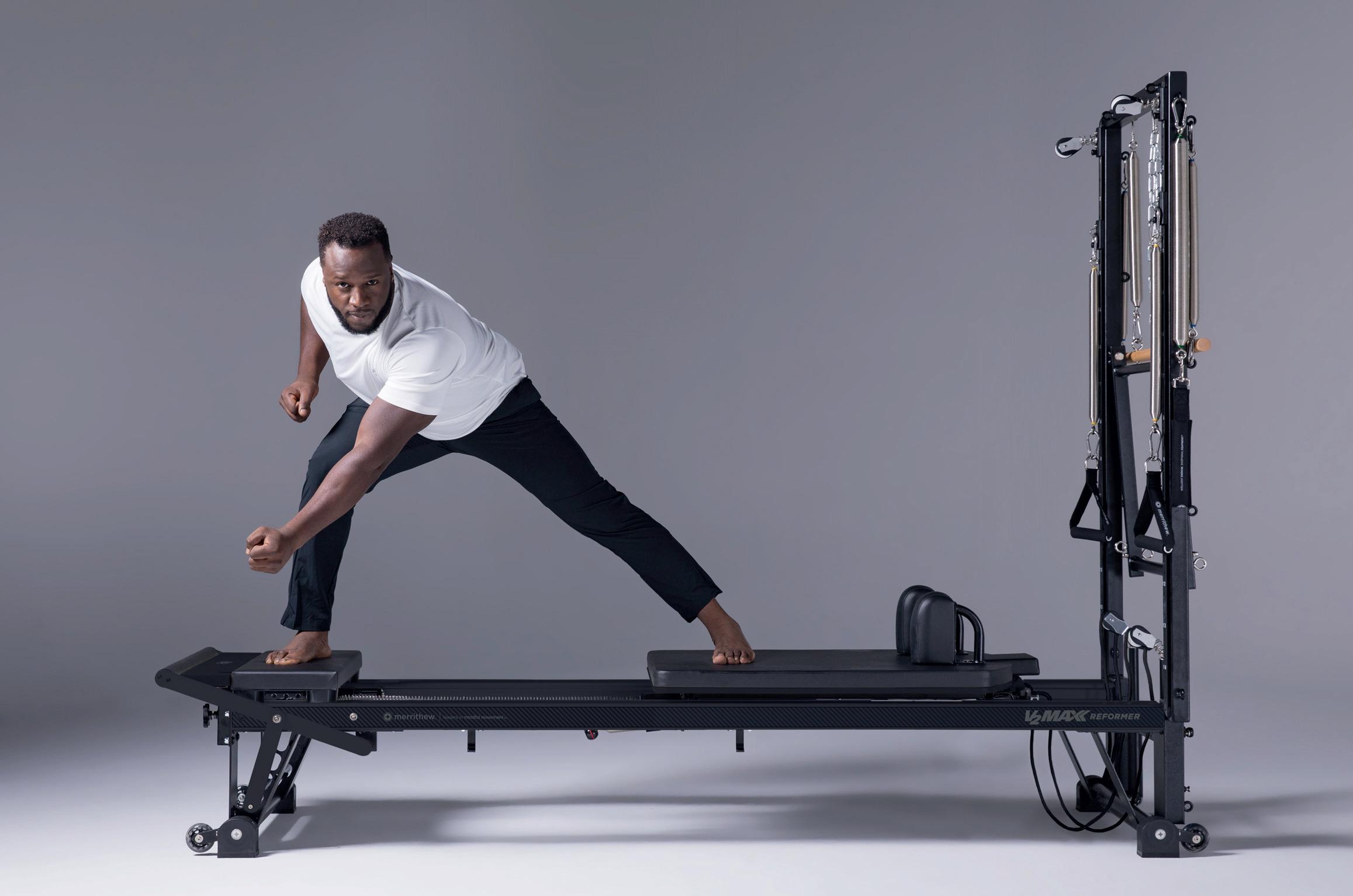
STUDIO
Reformers can be adjusted to give a more challenging workout to men
Male participants will quickly realise it’s a much tougher workout than they expected
PHOTO:
James Anderson
PHOTO: PHYSICAL / MERRITHEW
Joy
There are two key benefits of Pilates; performance and longevity. Pilates keeps men and seniors doing what they want, longer. Whether it is playing golf, running marathons or cycling, Pilates helps individuals maximise their performance by making them more flexible, stronger and with greater balance and coordination. It’s also a proven injury-prevention activity. This is why Pilates is used by professional athletes across all sports.
Similarly – and yet for very different reasons –Pilates is a perfect activity as we age. It has a distinct neuromotor component and is ideal for training and maintaining balance, coordination, strength and flexibility. Pilates is low-impact and adaptable to all bodies, regardless of age and ability. The highly focused nature of Pilates heightens self-awareness and enhances physical ability in men, women and seniors.
In the past Pilates was limited to a specific and fortunate few, it was hard to find, highly individualised and studios were particular and fussy. Now, the value-add of pilates is recognised, appreciated and sought after. Pilates has become accessible and available, and equipment classes are popular.

Some may still hold the notion that because Pilates is low-impact, it is not a ‘true’ workout and doesn’t provide real benefits. Targeted and tailored group classes, taught for the specific needs of the male client or the older client, are helping to break down these barriers.
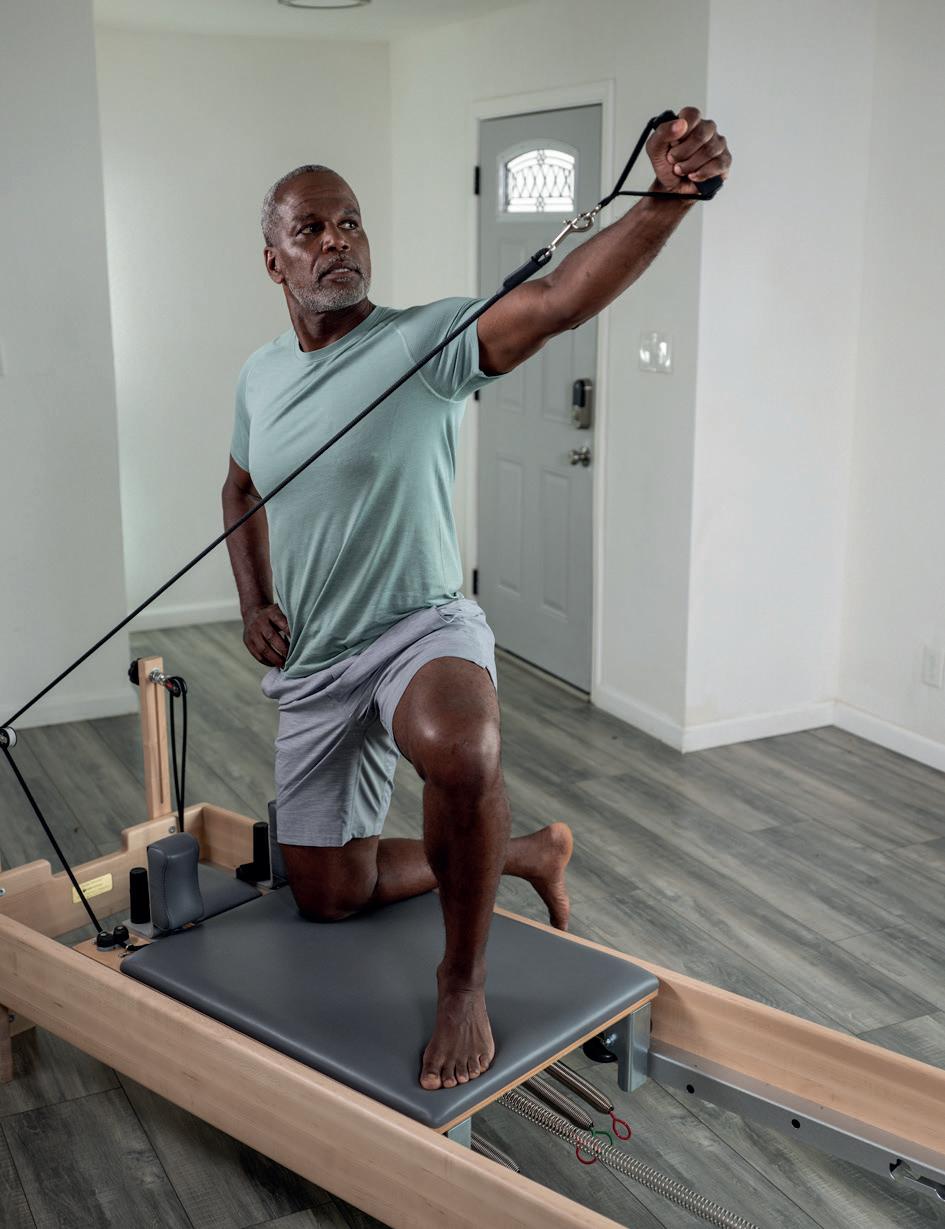
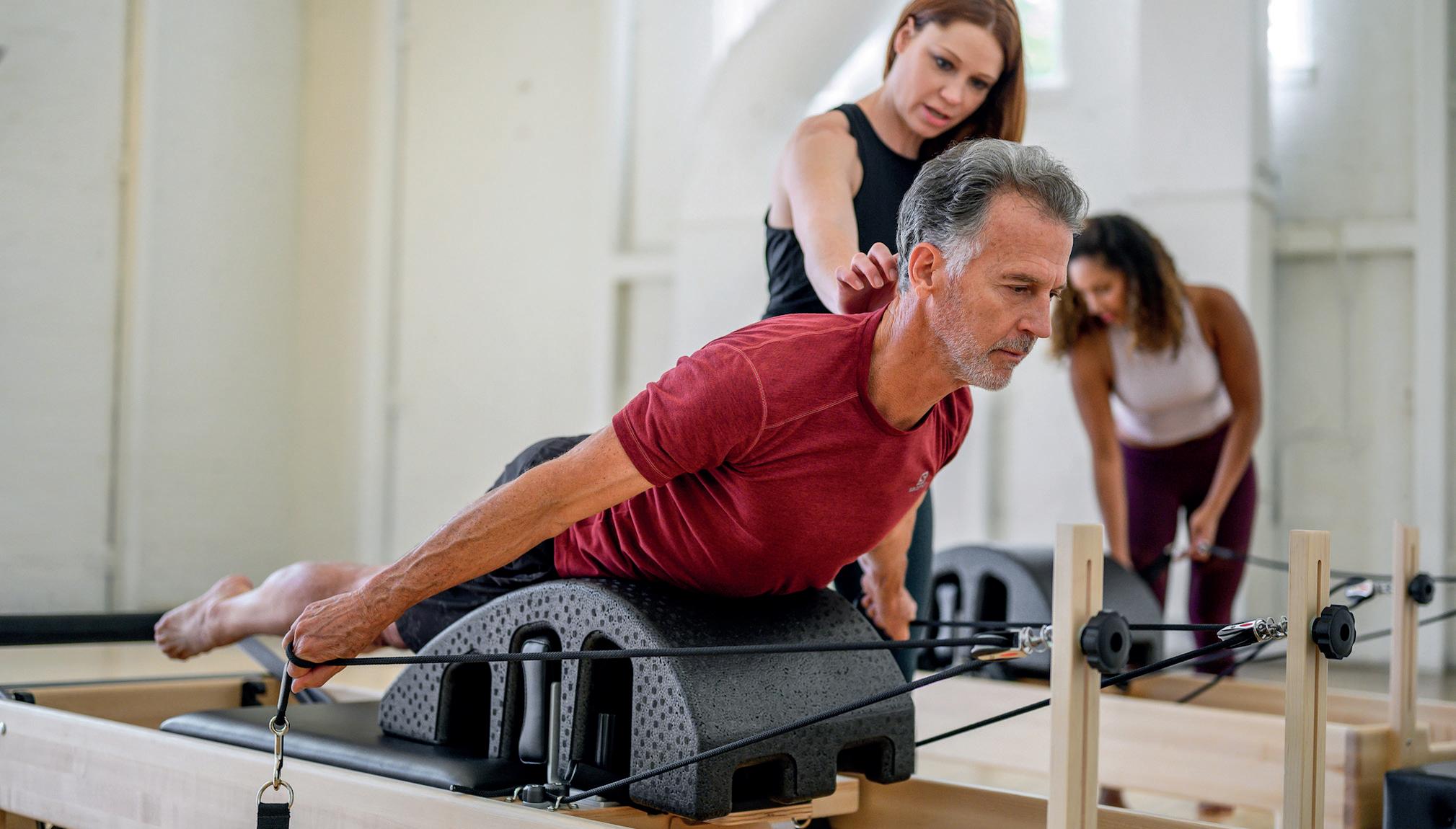
What kit would you recommend?
In the near future, we see group chair classes coming. The Pilates chair is versatile, space-saving, economical and gives a satisfying, full-body workout. It’s less wellknown than the reformer and as it grows in awareness, I expect we’ll see greater demand and see it emerging as a new way for clubs to differentiate themselves.
89 ©Cybertrek 2023 Issue 7 2023
We expect to see group chair classes coming in the near future
Puleo Balanced Body
Pilates can help seniors pursue their favourite activities for longer
PHOTO:BALANCEDBODY
Joy Puleo
Pilates is adaptable to all, regardless of age and ability
PHOTO: BALANCED BODY
PHOTO: BALANCED BODY
Ed Botha BASI Pilates

Traditionally Pilates has been portrayed as an exercise form for women and dancers. This is partially due to the way that it has been advertised. Pilates publications and studios have had mostly females on their covers or posters. I think having male-focused and olderfocused advertising would be great for the industry.
Men and the older population need to be educated on the functional benefits of Pilates, not only the aesthetic results. This could be done using images or articles on how Pilates can improve flexibility, or even your golf swing.

I would love to see more classes that are specifically designed to cater for males. Men and women move very differently. Usually that which is easy for a female in a Pilates class can be really challenging for a man. This is as a result of male and female centres of gravity being very different. This needs to be accounted for when programming a Pilates session. Some men and older people don’t really know what Pilates is.
The most common question we get asked is: “is it like yoga?” Again, this comes down to educating the public through informative articles and advertising. Going to your first Pilates class can be very intimidating, especially if you’re the oldest or the only male. I’ve been teaching Pilates for over 20 years and some of my closest friends think that what I do is only for females. I advise any Pilates operator to hire at least one male instructor.
What kit would you recommend?
You would want to use Pilates equipment that’s adjustable to fit the modern body. People have become much larger and also taller over the last few decades. Some traditionally-manufactured Pilates equipment might not be suitable for clients who are well over six feet tall. This would really restrict the ability to teach and perform many of the wonderful Pilates exercises purely for the sake of tradition. l
90 Issue 7 2023 ©Cybertrek 2023
I advise any Pilates operator to hire at least one male instructor
Men need to be educated on Pilates’ functional benefits
STUDIO
PHOTO:BASIPILATES
Ed Botha
PHOTO: BASI PILATES
RBX RUBBER PUMP SET NEW
� IDEAL FOR MULTI-PURPOSE GROUP FITNESS WORKOUTS, PUMP CLASSES AND INDIVIDUAL STRENGTH TRAINING
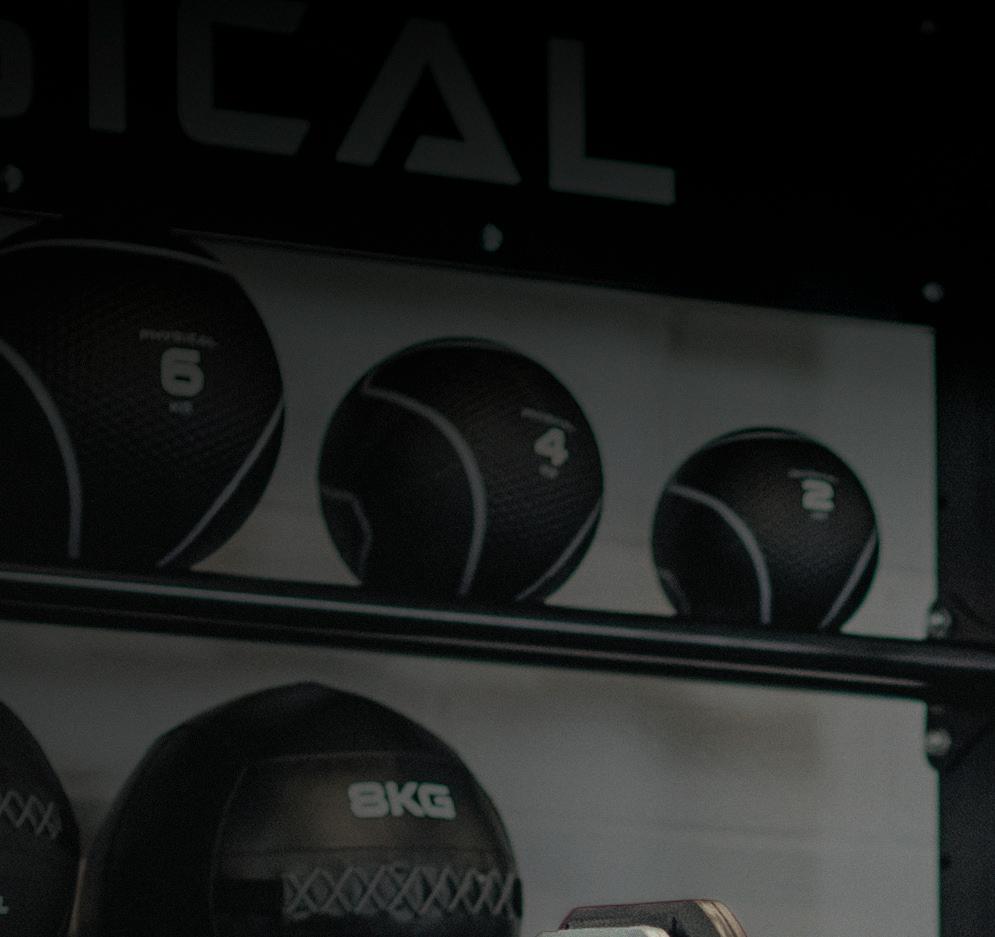
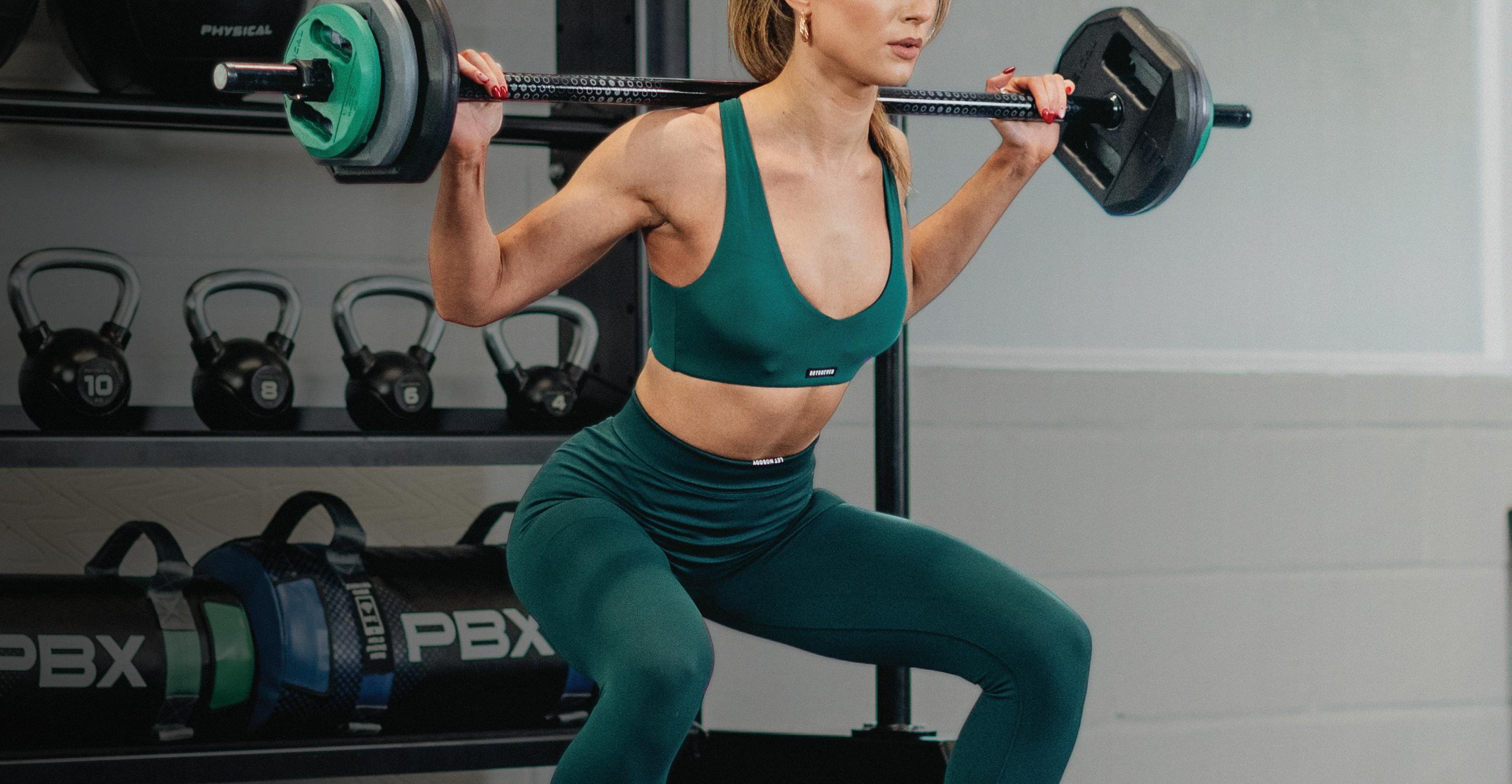
� SUITABLE FOR COMMERCIAL GYMS, STUDIO CLASSES AND HOME GYM WORKOUTS

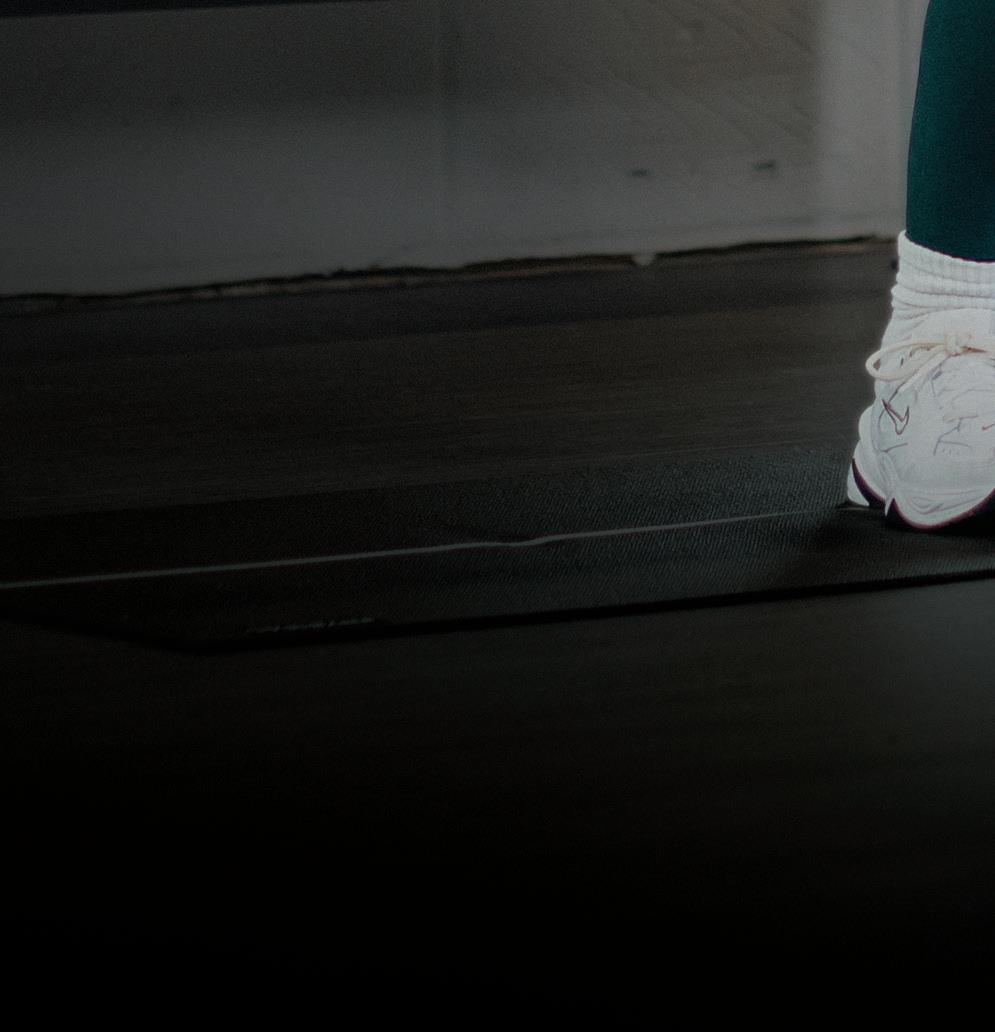
� ALSO AVAILABLE AS PERFORMANCE URETHANE PUMP SET
PHYSICALCOMPANY.CO.UK







Physical, The Works, Wycombe Road, Stokenchurch, Buckinghamshire HP14 3RR
01494 769 222 - sales@physicalcompany.co.uk

For more insight, or to get in touch with the companies featured, visit www.fitness-kit.net and type in their keyword
Product innovation
Steph Eaves rounds up the latest health, fitness and wellness kit
Booty Builder’s Hack Squat Machine is part of a new circuit, says Tracy Morrell
Booty Builder’s hack squat machine has been designed to supercharge leg workouts, targeting quadriceps, glutes and hamstrings, leading to notable strength gains.
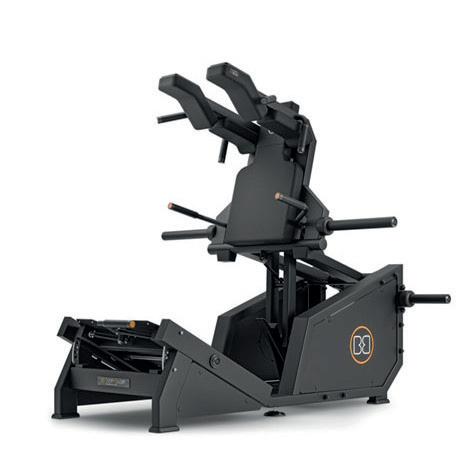
“This innovation offers unparalleled benefits for health club members seeking results-driven workouts that deliver tangible progress,”
says Tracy Morrell, director of distributor, React Fitness.

Unlike traditional barbell squats, the Booty Builder hack squat is engineered to reduce strain on the lower back – a positive for individuals with lower back issues or those recovering from injuries.
The machine guides users through a controlled, stable movement, making it a good choice for beginners entering the world of strength training or those looking to refine their technique.
The hack squat enhances posterior chain workouts
Tracy Morrell
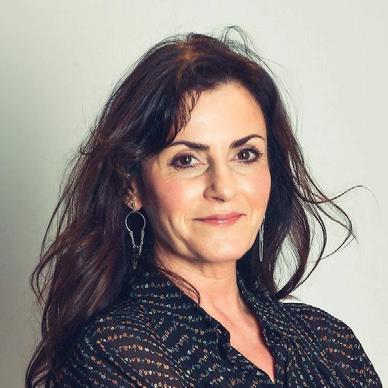
The hack squat goes beyond the standard, enabling reverse squats and single-leg variations, so trainers can deliver creative programmes.
“By incorporating this machine into your facility, you provide members with a powerful tool to excite ‘leg day’ and enhance posterior chain workouts,” says Morrell.
Neurosonic’s Juha Suoniemi presents the Gen2 vibration lounger
With the aim of reducing stress and delivering faster recovery and better sleep, Neurosonic has unveiled its Gen2 lounger, which uses low-frequency wholebody vibration to activate the parasympathetic
nervous system, helping lower heart rate, blood pressure and stress levels.
The improved model has been designed with stronger, more effective vibrations to aid sleep quality and body restoration.
A new activation programme has also been added, complementing those focused on relaxation and recovery, as well as an updated app interface where users can track their own data and view recommendations.
CEO Juha Suoniemi says: “We believe it has the potential to make a real difference to people’s lives by helping them relax, sleep better and cope with stress in a natural and healthy way.”

fitness-kit.net keywords
The new model has stronger, more effective vibrations
Juha Suoniemi
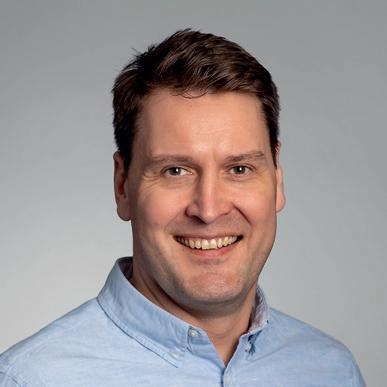
A Gen2 mattress can be used on its own or overlaid on existing beds, while a Gen2 motorised reclining chair is also available.
The hack squat is one of seven items of an expanding range of equipment that make up the Booty Builder Circuit. Neurosonic fitness-kit.net keyword
FITNESS-KIT.NET
React Fitness
● The lounger is from Finnish company, Neurosonic
● The Booty Builder Hack Squat
PHOTO: REACT FITNESS
PHOTO: REACT FITNESS
PHOTO: NEUROSONIC
PHOTO: NEUROSONIC
Open gym management systems have emerged as the driving force behind the success of modern fitness clubs and Xplor Gym stands at the forefront of this digital revolution, enabling them to cater to the diverse needs of their members and stay ahead in an increasingly competitive market.
“Xplor Gym is a trailblazing gym management software that empowers clubs to offer an extensive lineup of fitness experiences through seamless data integration,” says James Barter, head of partnerships.

“By collaborating with some of the top fitness brands globally, including Technogym, Egym, FitnessKPI, 4Global, ClassPass and many more, we’ve built a diverse ecosystem and that allows clubs to easily build their ideal value proposition, deliver personalised experiences and move fast in a rapidly-evolving market,” he says.
The power of data
As an open software solution, Xplor Gym gives fitness clubs unmatched flexibility and control over their data. An open API allows for smooth integration with different applications and software. This flexibility empowers operators to create a
system bespoke to them and their members, whether that’s designing their ideal member signup process, class booking system, or delivering unique fitness experiences, the opportunities are endless.
Barter adds, “Clubs can say goodbye to the limitations of isolated data systems and being tied to inflexible processes and workflows, thanks to Xplor Gym’s open software that lets data flow seamlessly between different platforms. It’s incredibly powerful for fitness operators of all sizes.”
Building a stronger industry ecosystem
By choosing an open gym management system, clubs benefit from true scalability. As fitness clubs change and grow, Xplor Gym adapts to
meet changing needs and accommodates expanding operations. This futureproof approach lets fitness facilities stay relevant and thrive in the ever-evolving fitness landscape.
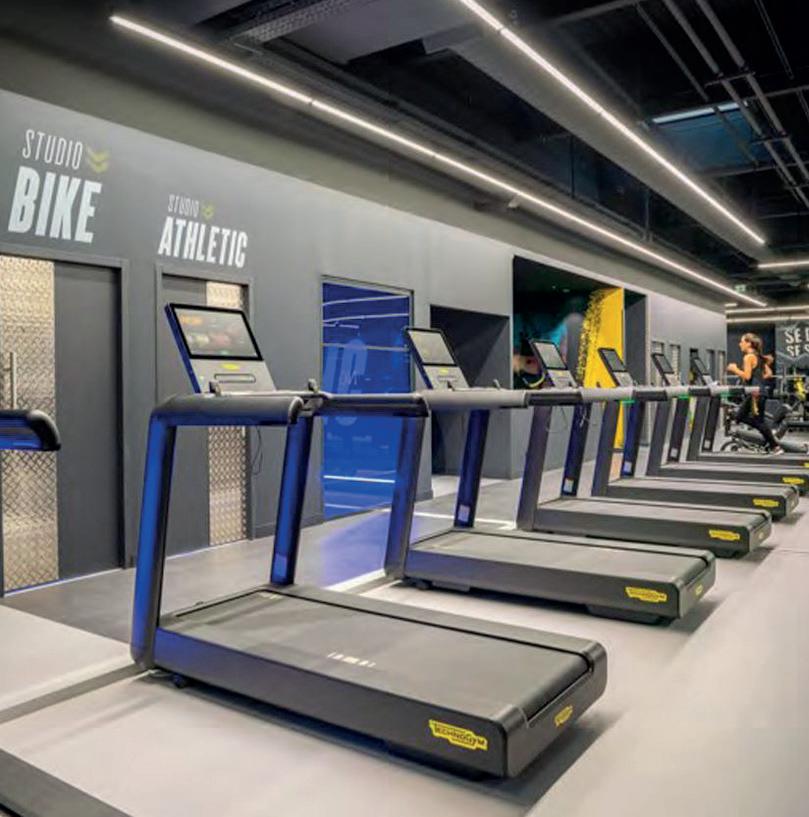
The Xplor ecosystem
By switching to Xplor Gym, your club will become an integral part of a thriving industry ecosystem. Xplor Gym partners with the best brands in the industry and that gives clubs access to all the essential software and hardware needed to truly elevate performance.
For a personalised walkthrough of the Xplor Gym open software, book a demo at www.xplorgym.co.uk
fitness-kit.net keywords
http://lei.sr/u0m7O Xplor gym
93 ©Cybertrek 2023 Issue 7 2023 PROMOTION
Xplor Gym’s open software is empowering fitness clubs to unlock new opportunities for growth, says James Barter
Xplor Gym is trailblazing gym management software that empowers clubs to offer an extensive lineup of fitness experiences through seamless data integration
James Barter
● The Xplor Gym API enables integrations with partners such as Technogym
PHOTO: XPLOR
PHOTO: XPLOR
Foam steam bath creates a new recovery experience, explains Phillip Rock

Klafs, the sauna, pool and spa manufacturer, has brought the Espuro foam steam bath to market.
“With Espuro, operators can create a very special experience that’s never been seen before,” says CEO Phillip Rock.

“It will give them a USP that customers will remember with great enthusiasm.”
Entering the steam bath, users are greeted with relaxing light and music before fragrant foam fills the room to waist height.

Bubbles glisten and float in the air, creating childlike bathing fun, while nourishing lather cleanses the body.

Its patented formula has been developed for Klafs using natural ingredients.
Foam bubbles glisten in the light and float in the air
Phillip Rock
During this time, the body is gently warmed by the steam and the experience culminates with lukewarm rain from above which washes the body and dissolves the bubbles.
The XT3 sled has a monitor that allows users to track workouts, says David
The XT3 Plus multi-surface prowler sled has launched in the UK, with adjustable magnetic resistance which creates a bi-directional force, meaning the resistance is present no matter which side of the sled is pushed or pulled.

The handle configuration at the back also allows it to be pushed from a variety of angles, while the front handle is designed for performing low-angle pushes.



There are anchor points at the front and back to accommodate attachments such as ropes, straps and harnesses.
Bulcock
The special foam is produced by an integrated unit, which can also be retrofitted into existing Klafs steamrooms.
David Bulcock
David Bulcock, director at Gym Gear, said “The XT3 from Xebex is already hugely popular in the United States and we’re confident operators and members the UK will love it just as much.”
The sled has horizontal and vertical rear handles, allowing for wheelbarrowstyle training and an optional monitor that allows users to track workouts, create interval
programmes and connect to third party apps. The sled has a footprint of 45” x 28”, and can be stored vertically at 28” x 24”.
94 Issue 7 2023 ©Cybertrek 2023 FITNESS-KIT.NET Klafs fitness-kit.net keywords
Gym Gear fitness-kit.net keyword
The XT3 from Xebex it is already hugely popular in the United States
● The fragrant foam creates a nourishing lather
● The XT3 can connect to third party apps
PHOTO: KLAFS
PHOTO: KLAFS
PHOTO: KLAFS
PHOTO: GYM GEAR
PHOTO: GYM GEAR
STRENGTH


JORDAN dumbbells and racks have been renowned in the industry for more than 30+ years for their quality and durability.


We’ve invested in engineering dumbbells that last, sourcing the highest quality materials such as Premium Urethane, SBX Rubber, Structural Steel, Heat Treated Steel and Superior Chrome and Precision Cut Knurled Finishes to ensure longevity for your gym and exceed design quality.
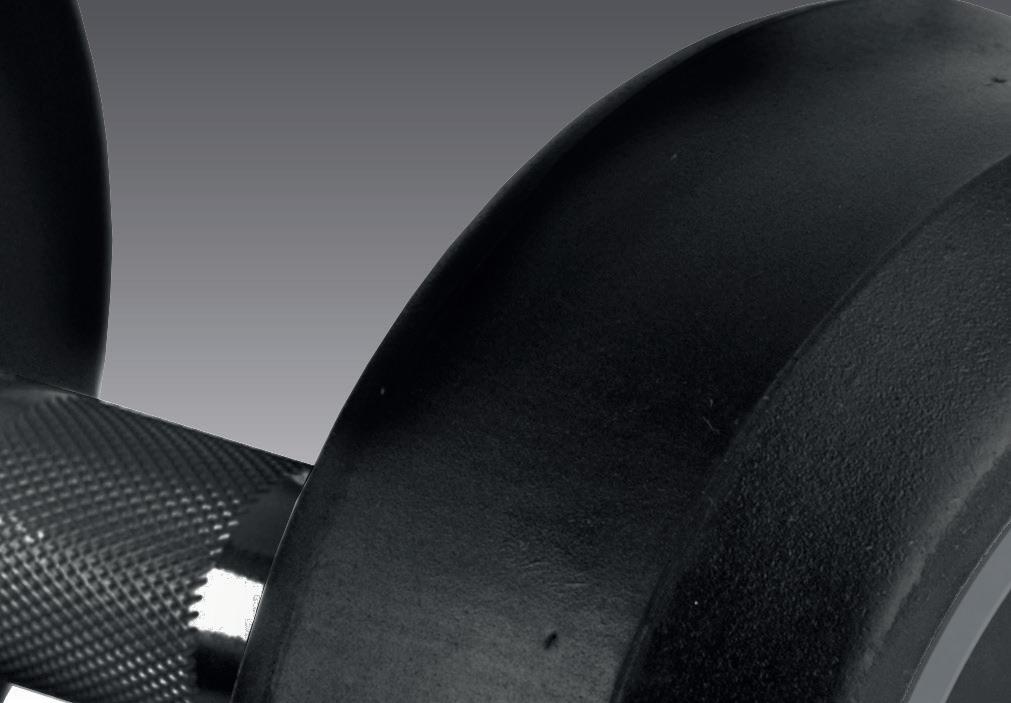


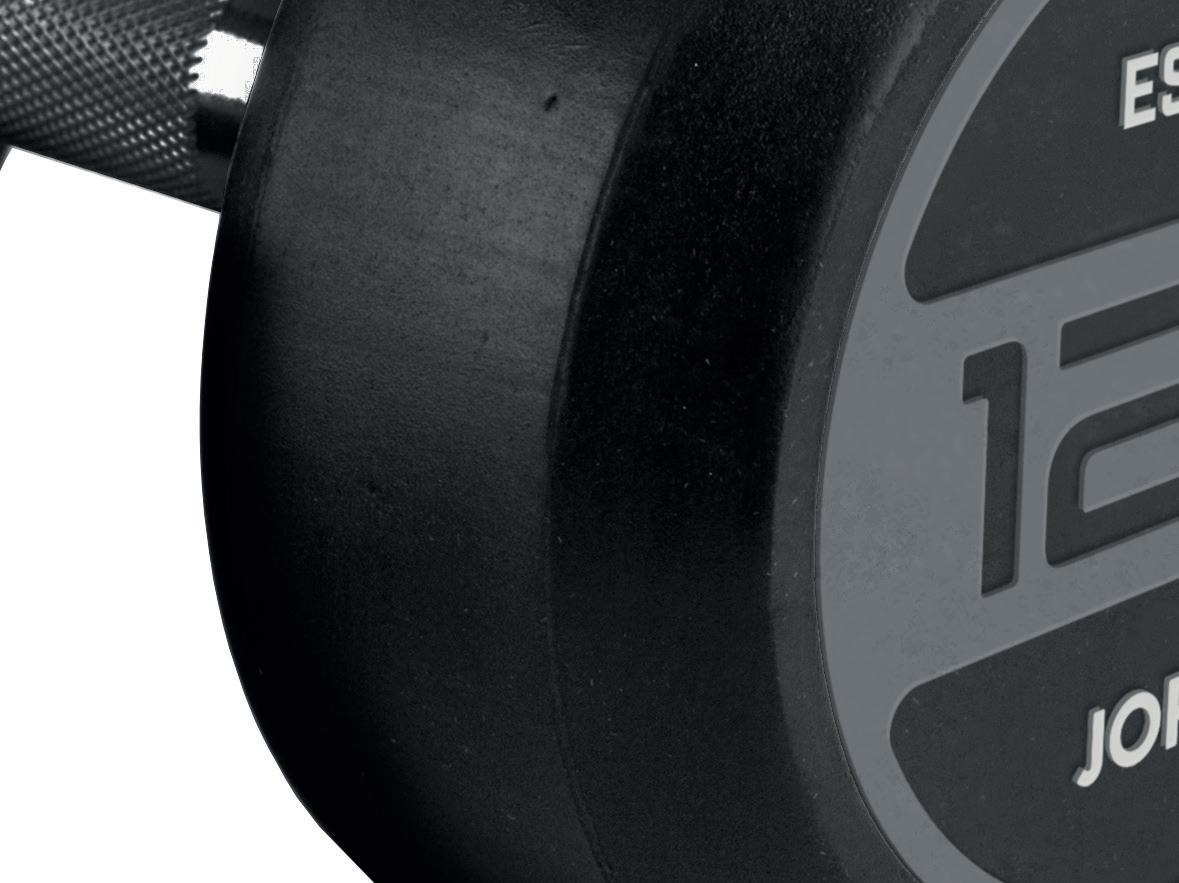
Building on the strength of our design and manufacturing capabilities, we are also able to offer our unique dumbbell customisation service, providing your brand with an opportunity to truly stand out in your gym space.

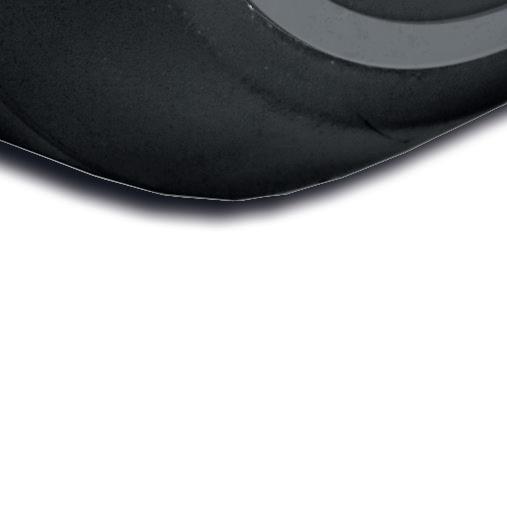


Go to www.jordanfitness.com and take a look at the free weight solutions we can supply to help you excel in strength for your members.

Issue 3 2023 ©Cybertrek 2023
+
FIND A SUPPLIER







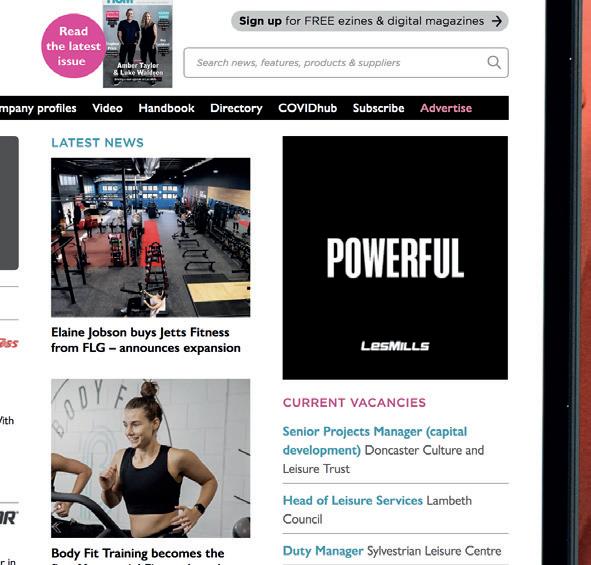










CLICK HERE to search for a supplier on HCM’s Company Profiles Hub CLICK HERE to visit the HCM Handbook Company Profiles Tap into HCM ’s comprehensive supplier directory and profiles to get in touch with the industry’s leading suppliers of products and services to power your business



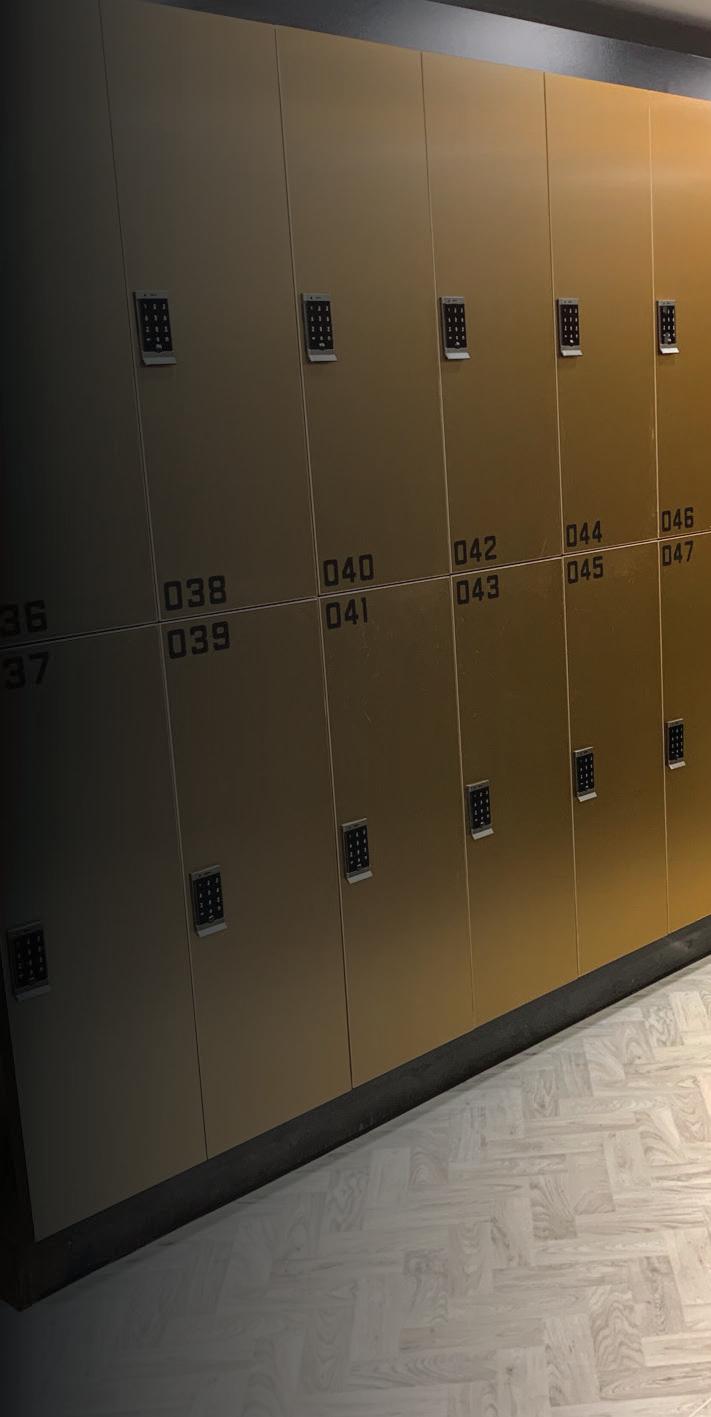
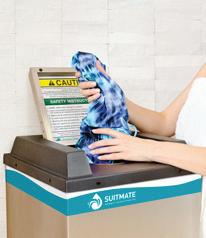



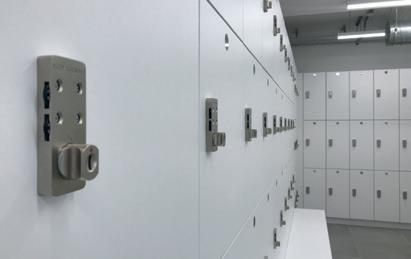



DIRECTORY FLOORING www.tvs-group.co.uk Contact us now: Office: +44 (0) 1706 260 220 Email: Sales@TVS-Group.co.uk Gym Flooring & Acoustic Solutions www.TVS-Group.co.uk www.regupol.com www.regupol.com Fitness Flooring and Acoustic Flooring in Gyms FUNCTIONAL TRAINING / FLOORING www.safespacelockers.co.uk SUPPLIERS OF HIGH QUALITY CHANGING ROOM SOLUTIONS FOR THE FITNESS AND LEISURE INDUSTRY Contact us today for more information T: 0203 651 1500 E: info@safespacelockers.co.uk w: safespacelockers.co.uk » Lockers, benches, padlocks and cubicles » Changing room design » Consultation services » Locker servicing and maintenance » Financial solutions Official distributor of SUITMATE® Swimsuit Water Extractor in England, Scotland and Wales LOCKERS & INTERIORS Tel +44 (0)1803 555885 Email sales@crownsportslockers.co.uk www.crownsportslockers.co.uk LOCKERS & INTERIORS LOCKERS & INTERIORS www.fitlockers.co.uk FITLOCKERS Thinking beyond standard storage CONTACT US m k K Turnkey capability Styles and FITTINGS FOR EVERY setting CODE OR KEY SECURITY Sales@fitlockers.co.uk 01442 409600 www.fitlockers.co.uk Made in Britain janwilliams@leisuremedia.com To book your advert contact the sales team +44 (0)1462 431385 janwilliams@ leisuremedia.com
Breast size and exercise
New research from Flinders University in Australia has found that breast reduction surgery can enable some women to follow a more active lifestyle
Given the growing prevalence of plastic surgery and focus on breast enhancement surgery, researchers have now flipped this on its head and turned their attention to the impact of breast size on healthy and active lifestyles, finding that some women pursue breast reduction to enable them to be more active.
A new study aimed to investigate how breast size impacts the exercise habits of women and how this compares to women who have undergone breast reduction surgery.
The study was based on a survey of nearly 1,987 women involved in the Parkrun programme in Australia, England and South Africa, excluding women with a history of breast cancer.
Impact of breast size reduction
Women who had undergone breast reduction reported increased overall frequency and enjoyment of exercise, as well as greater willingness to exercise in a group, leading to a more active and healthy lifestyle.
All 56 women who had undergone breast reduction surgery in the group of 1,987 surveyed women reported following more healthy and active lifestyles.
The study also found that women with larger breasts believe that reducing their breast size would improve their exercise performance and participation and that their breast size significantly impacts the type of exercise they do, making it more difficult to do high intensity exercise, for example.
As well as comparisons between 5km Parkrun competition times and bra size, the BREAST-Q study also looked at cup size satisfaction levels – which showed more self-satisfaction with AA, A, B and C cup sizes than DD, E, F, G and H or greater.
In addition, life satisfaction and happiness was significantly related to bra size, with cup sizes greater than E reliably reporting lower mean results.
“Our study found that breast size affects exercise habits and that breast reduction surgery changes women’s willingness to exercise,” said lead author Dr Claire Baxter, a clinical registrar in reconstructive surgery at the Flinders Medical Centre.
“We suggest that if breast size impacts women’s participation in sport and fitness, health practitioners and policymakers should advocate for better access to reduction mammoplasty in the publicly funded health sector,” she said.
No correlation was made between breast size and percentage body fat in the research study.
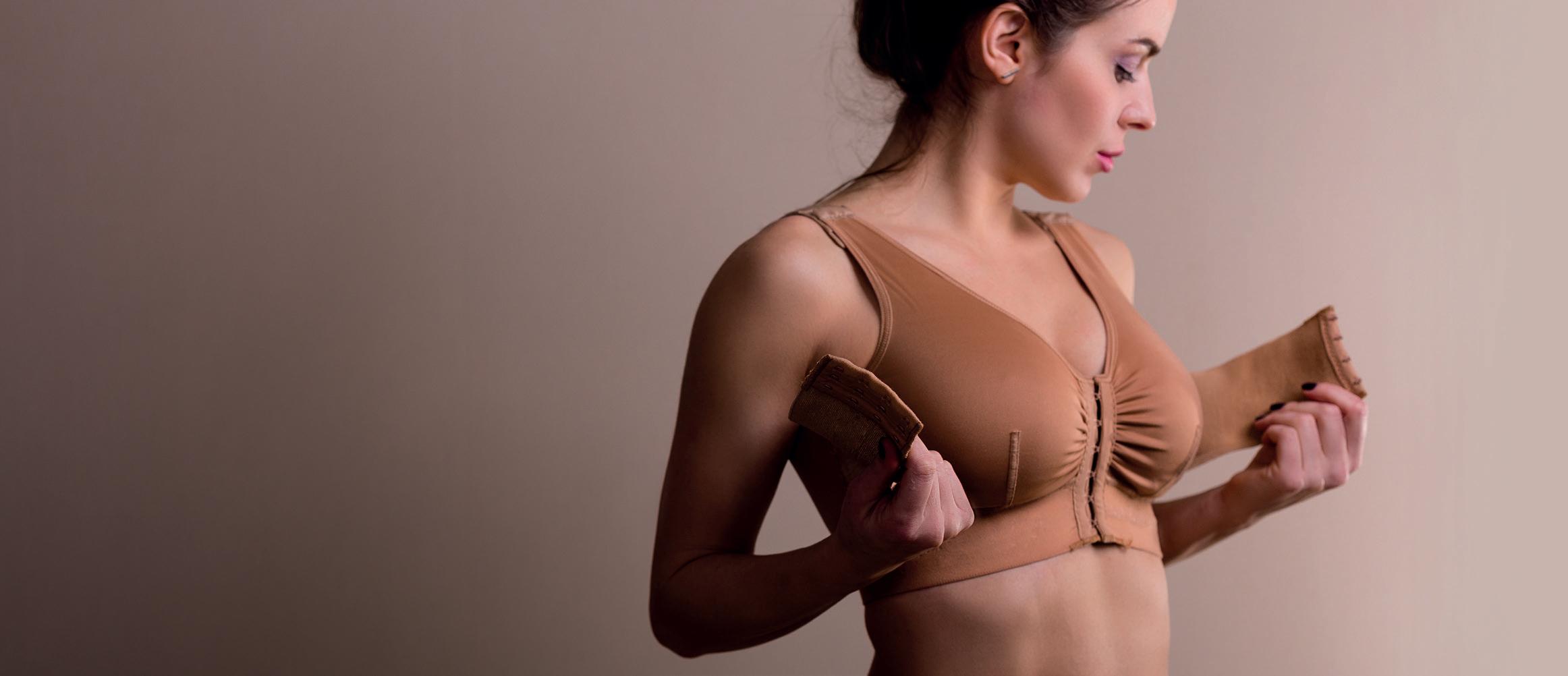
The study – Self-reported breast size, exercise habits and BREAST-Q dat a – was published in the British Association of Plastic, Reconstructive and Aesthetic Surgeons’ Journal of Plastic, Reconstructive and Aesthetic Surgery
l More: www.hcmmag.com/breastsize
98 Issue 7 2023 ©Cybertrek 2023
Our study found that breast size affects exercise habits and that breast reduction surgery changes women’s willingness to exercise – Dr Claire Baxter
PHOTO: SHUTTERSTOCK/TINATIN
RESEARCH
Women are undergoing breast reduction surgery to enable them to be more active
What are your thoughts on this research? Share your views with HCM at letters@leisuremedia.com

DISCOVER
DISCOVER SE 4


MORE FOR YOUR EXERCISERS. MORE FOR YOUR BRAND.
Introducing the Life Fitness Discover SE4 Console: The most immersive and engaging console experience in the fitness industry. The 24" (16" also available) high-definition edge-to-edge screen provides a rich display and functions more like a home entertainment system than other consoles. Through Halo Facility, you can enable access to more than 500 Life Fitness On Demand+ fitness experiences and facilities can create custom-branded content that appears on the console.
READ MORE HERE






















































































































































































































































































































































































































































































